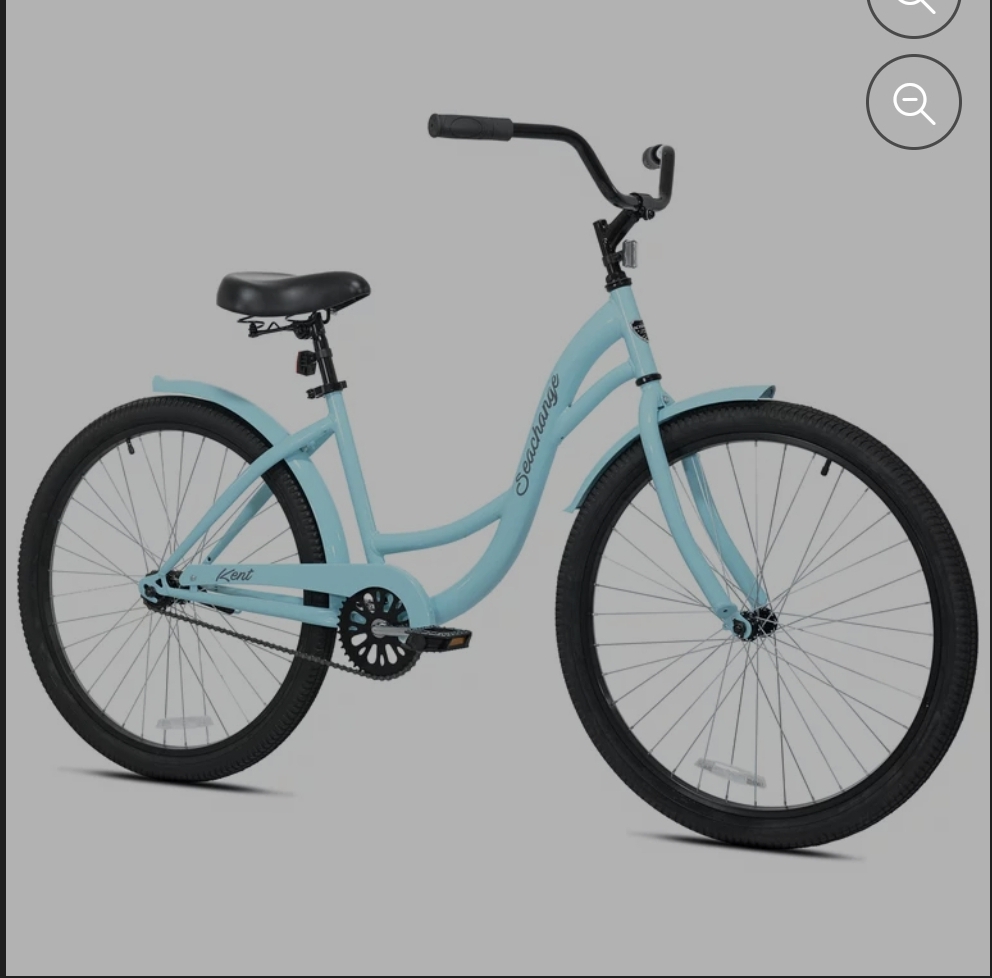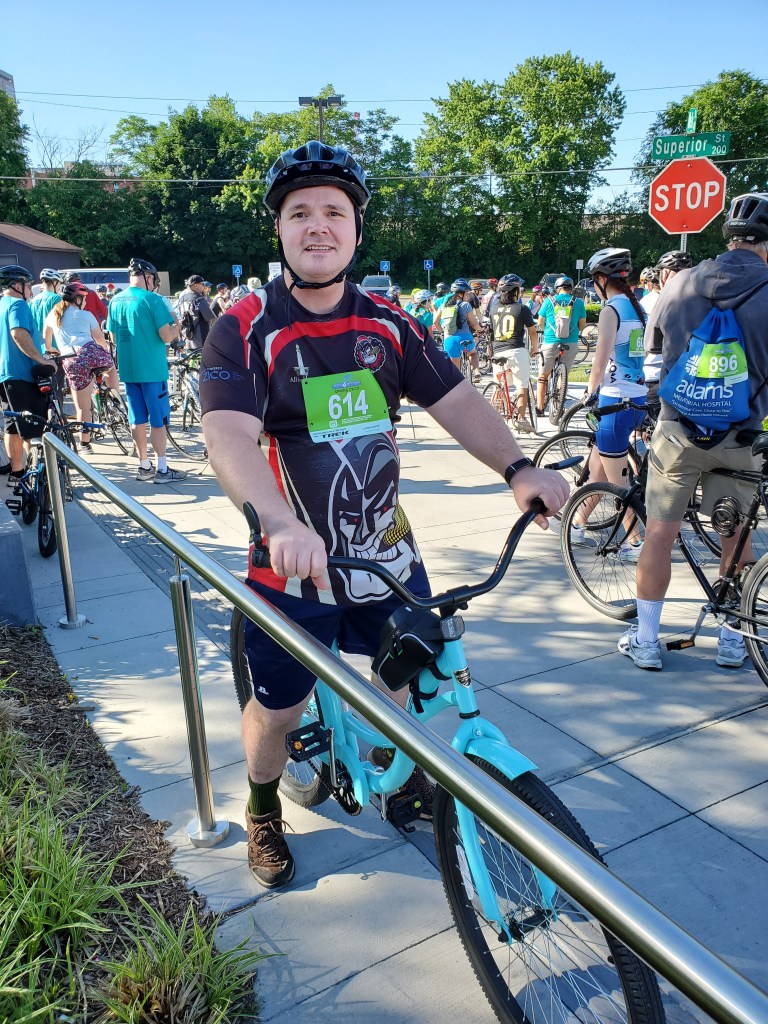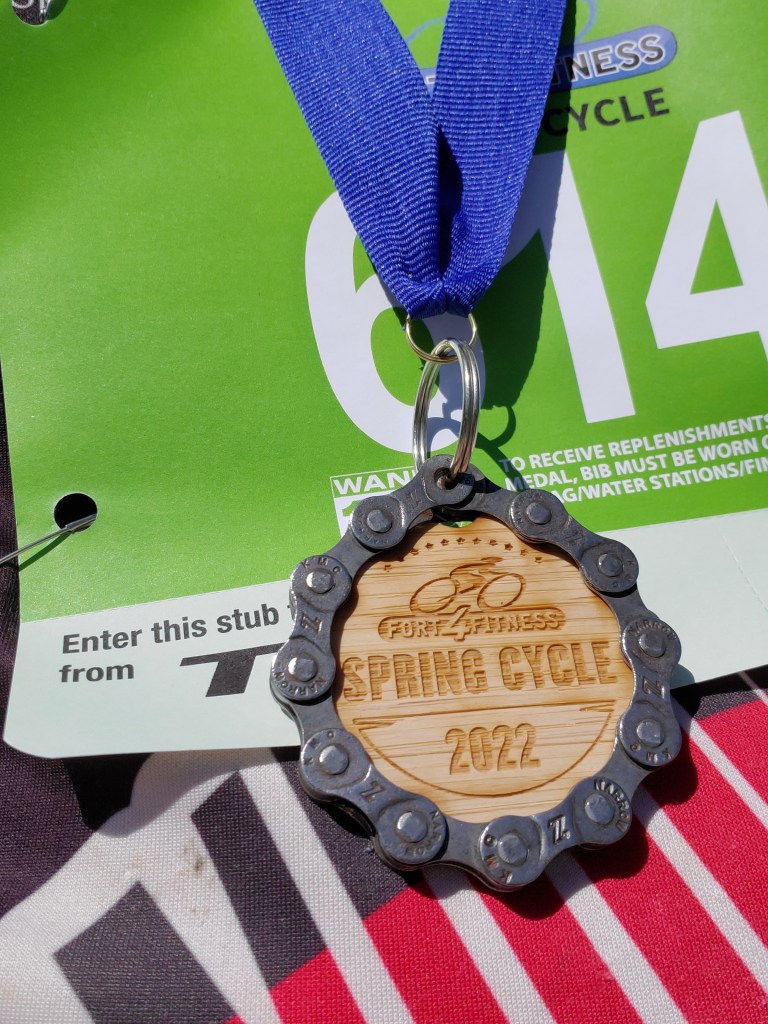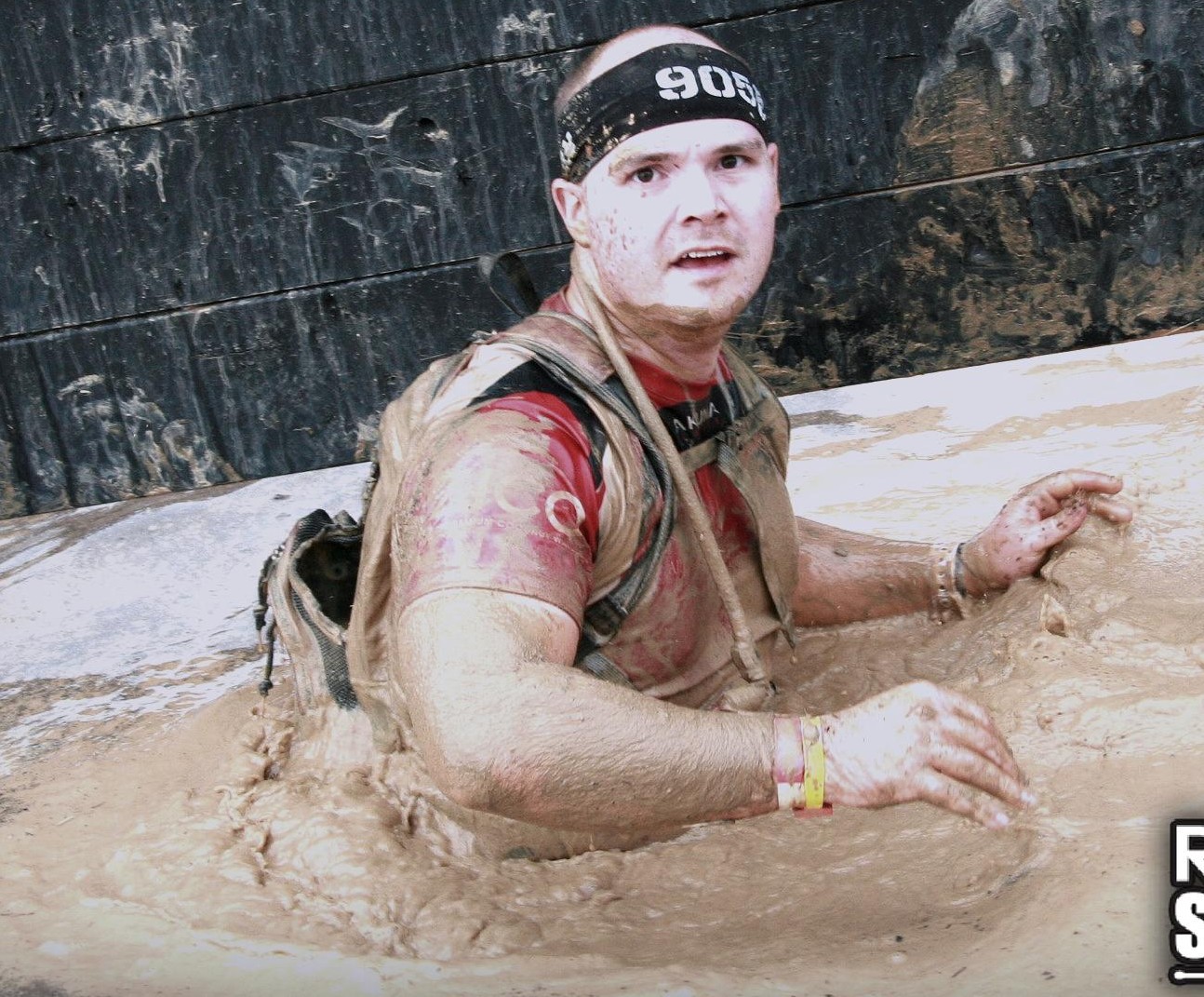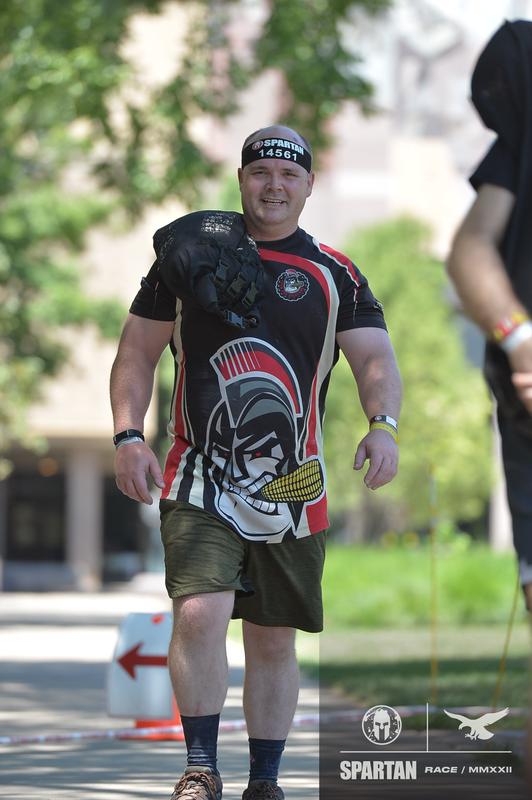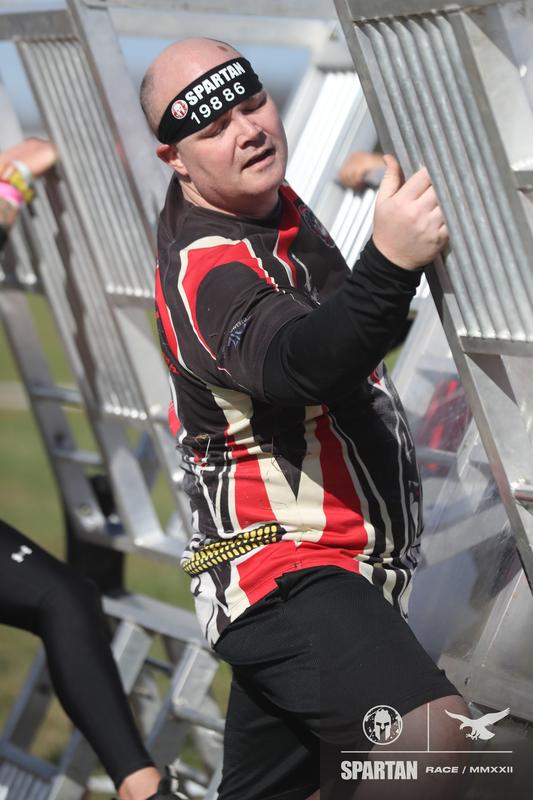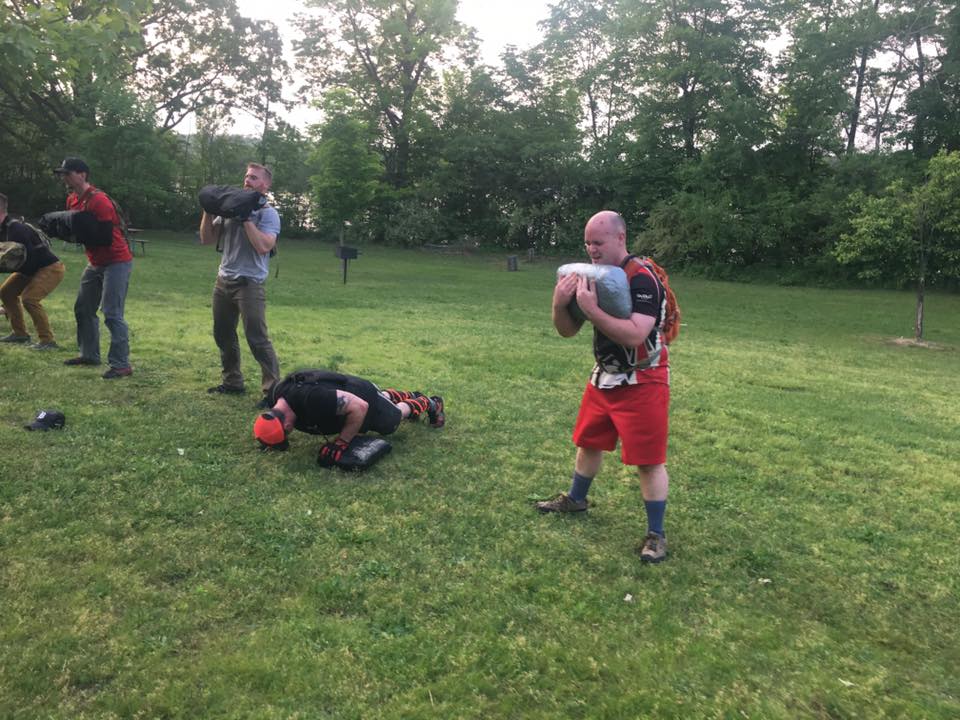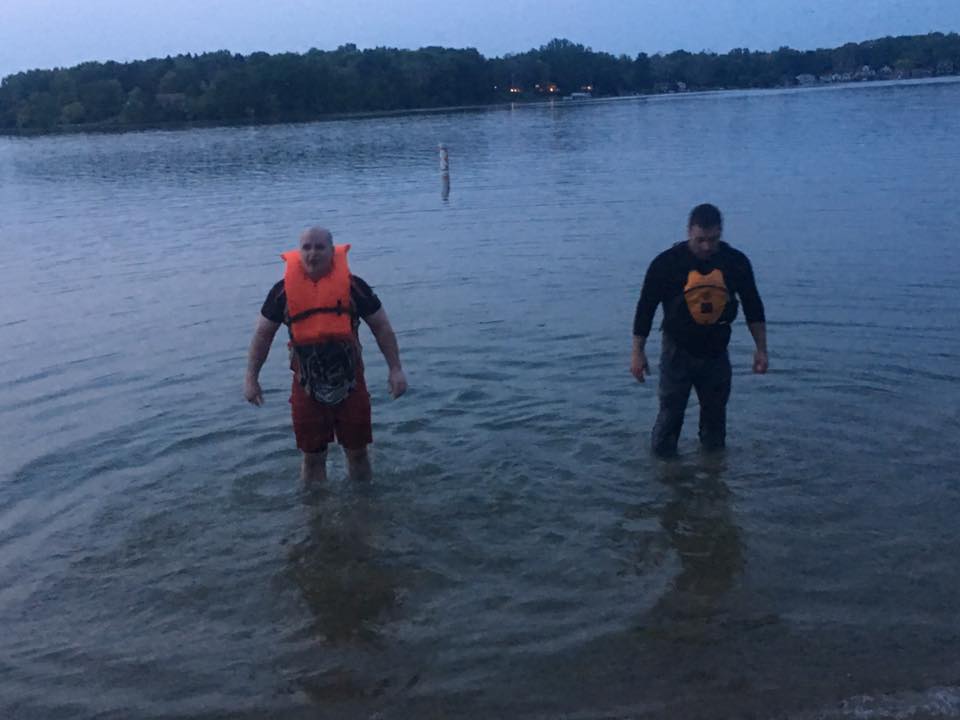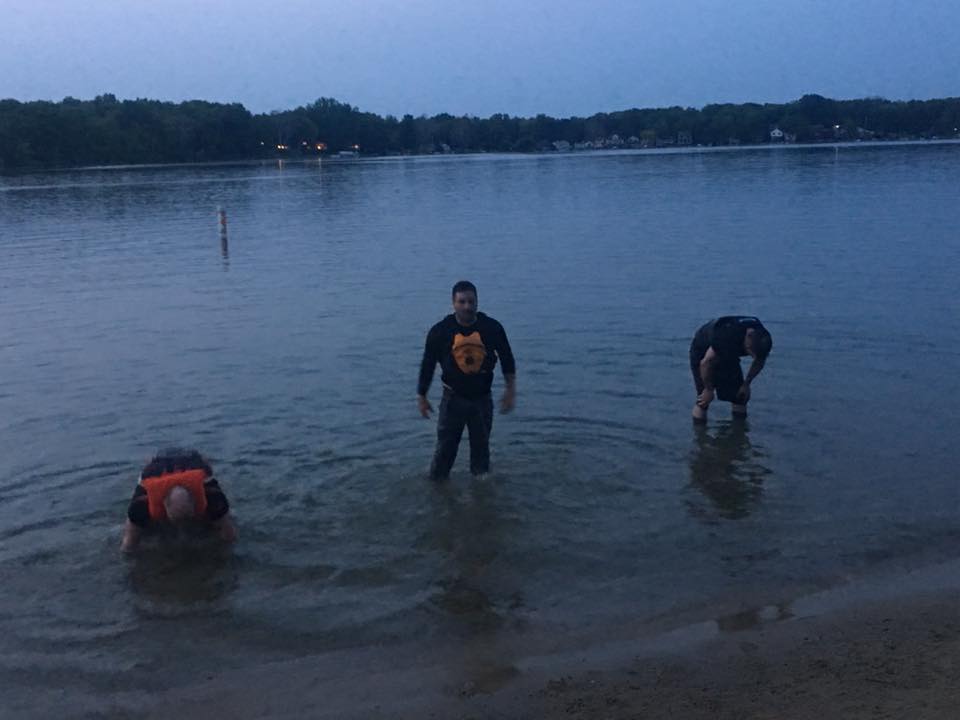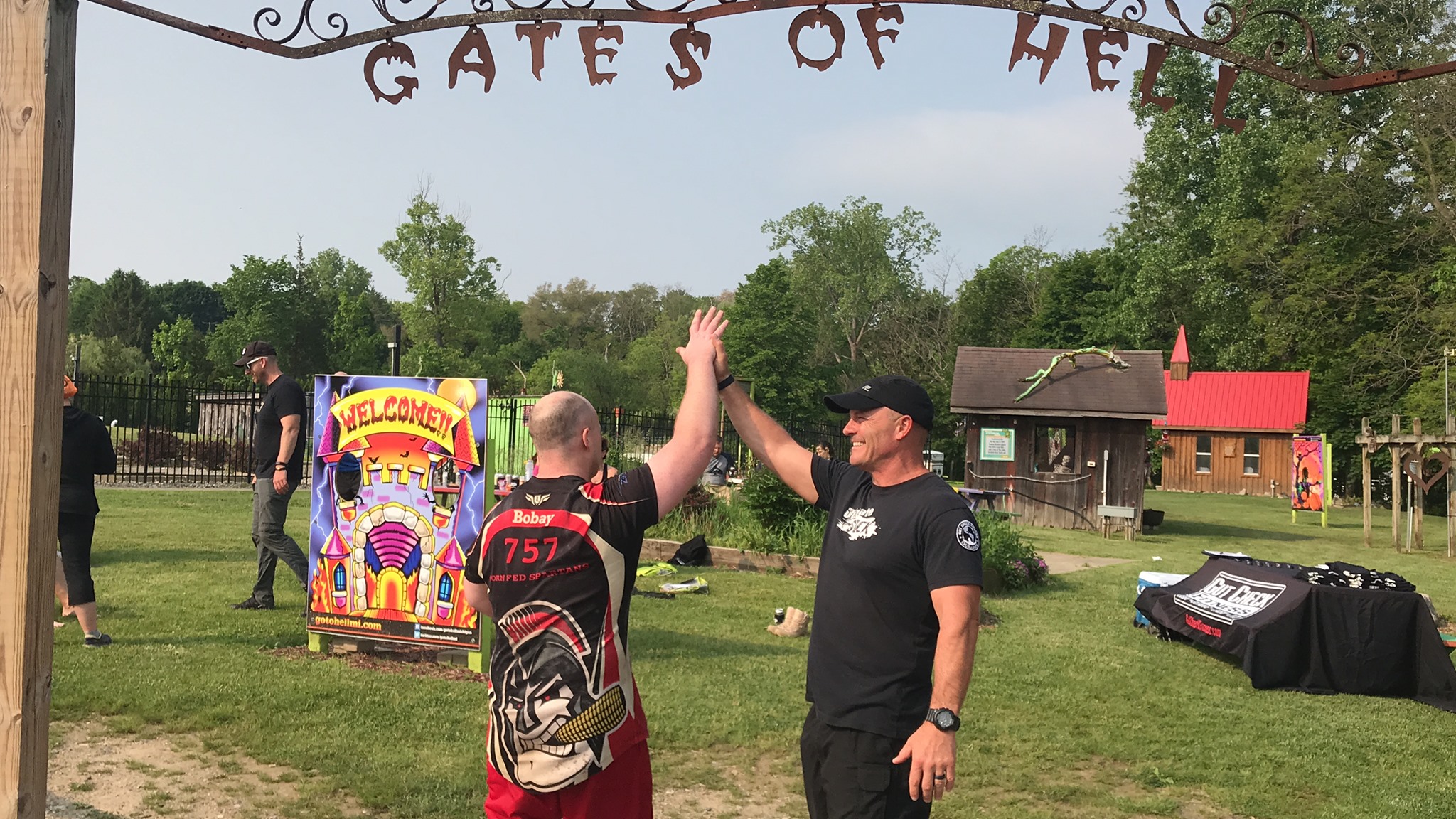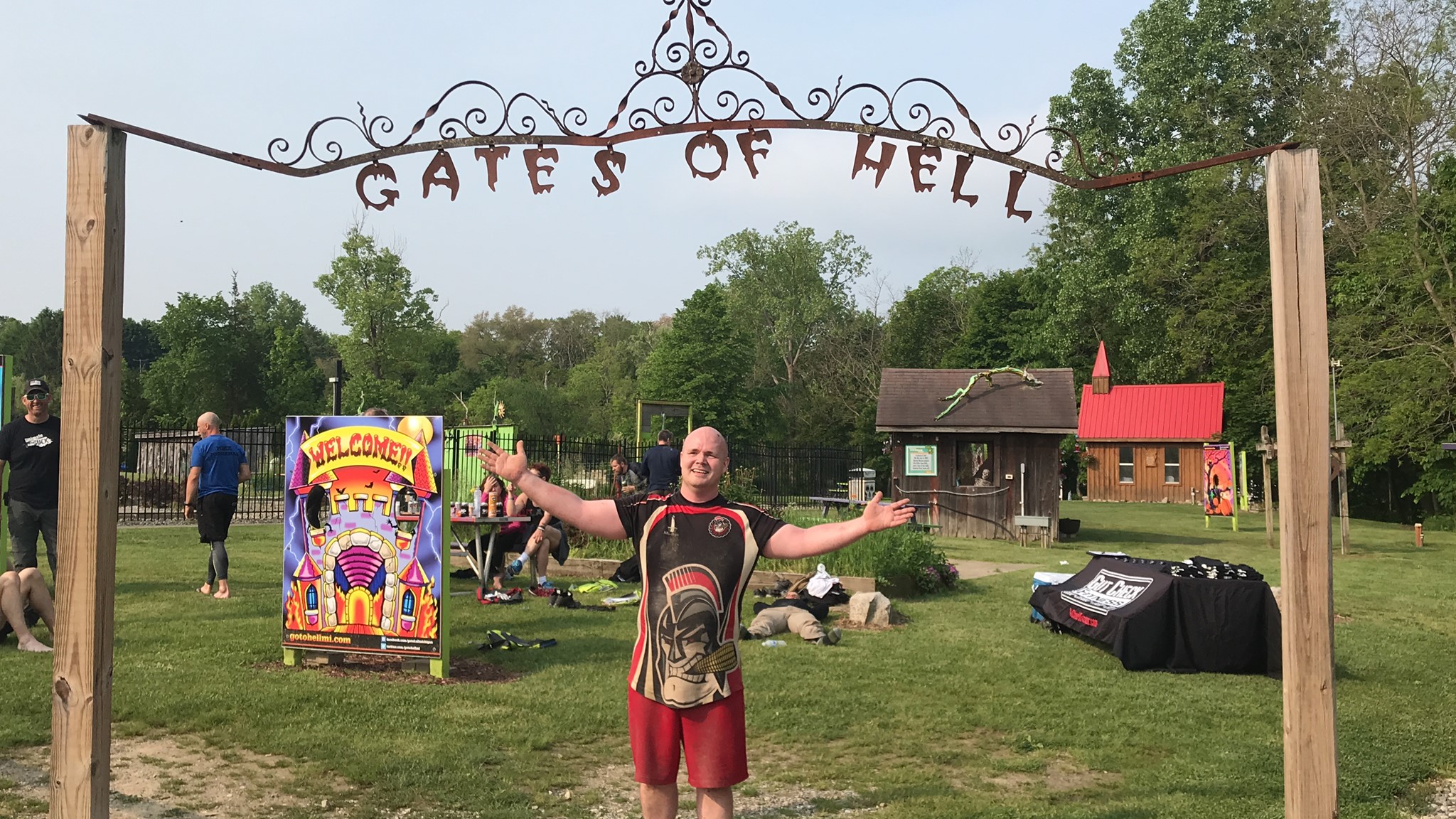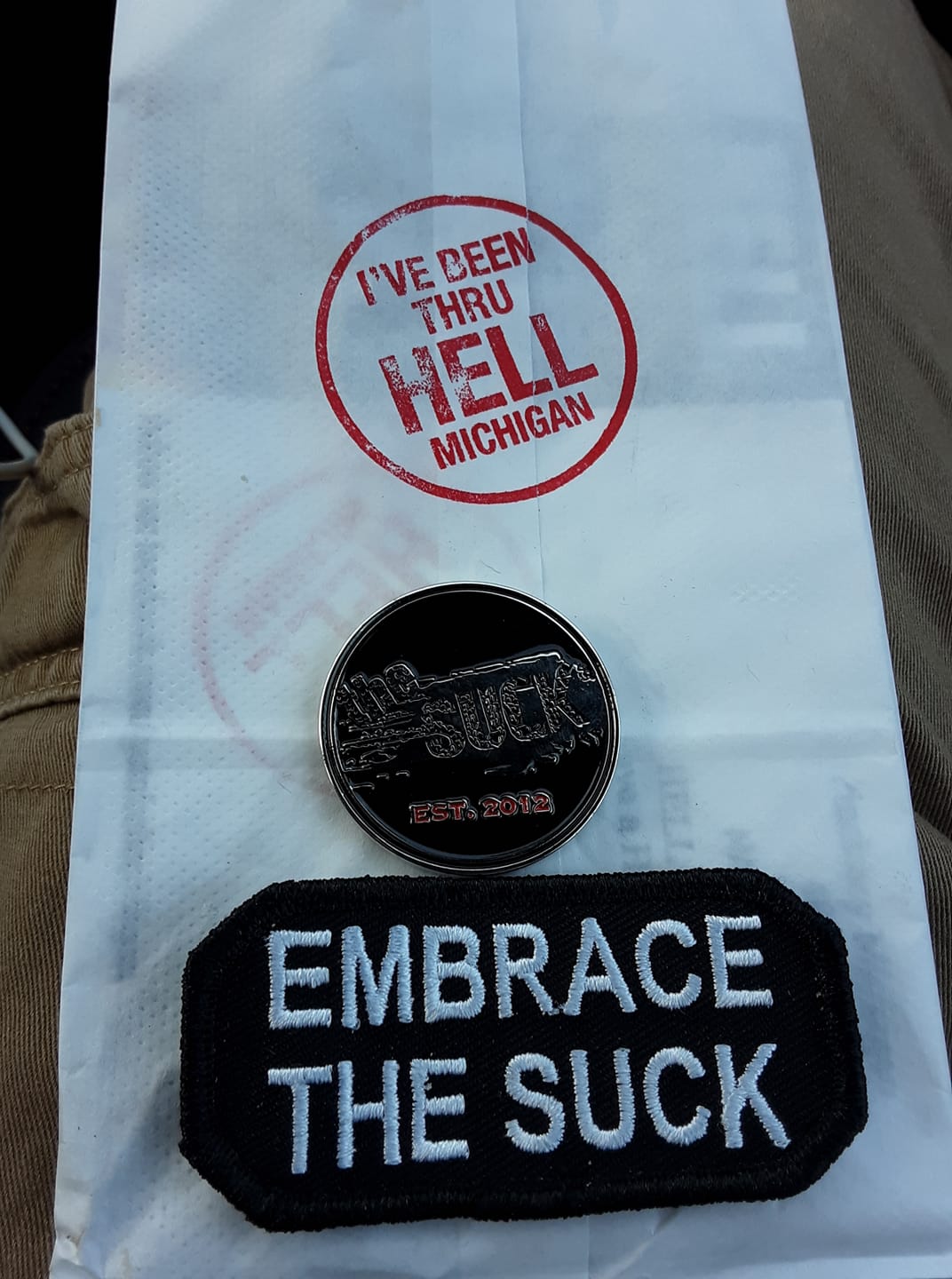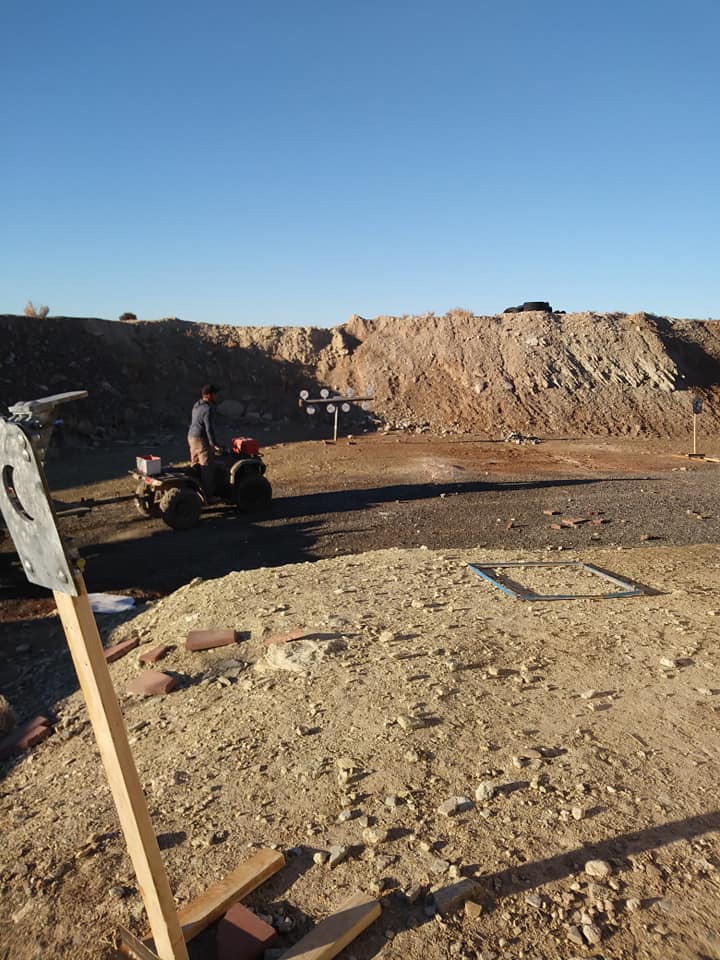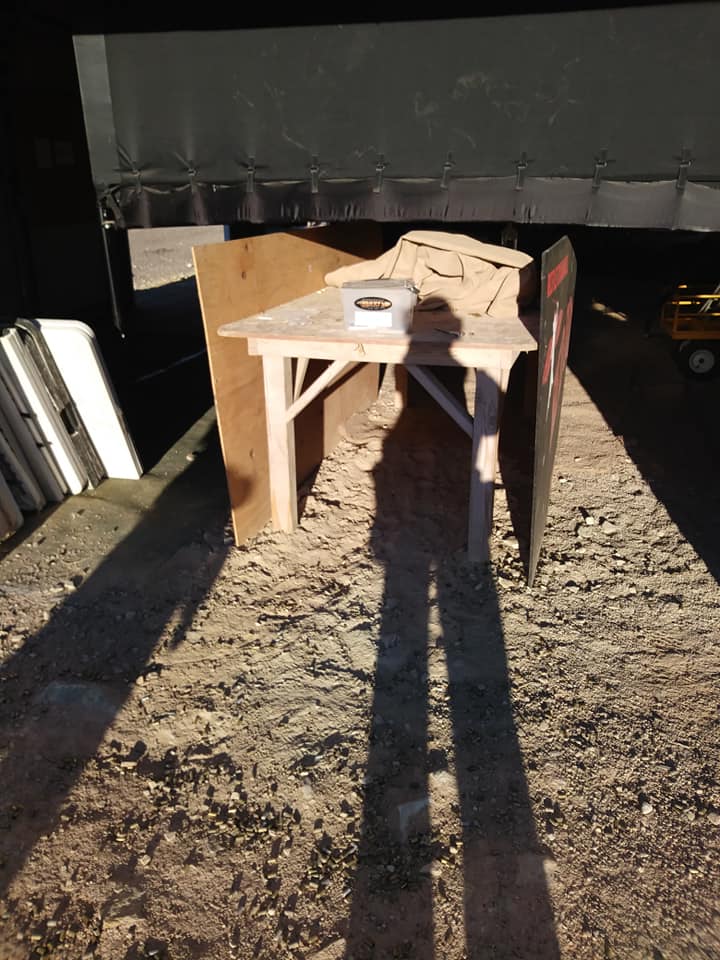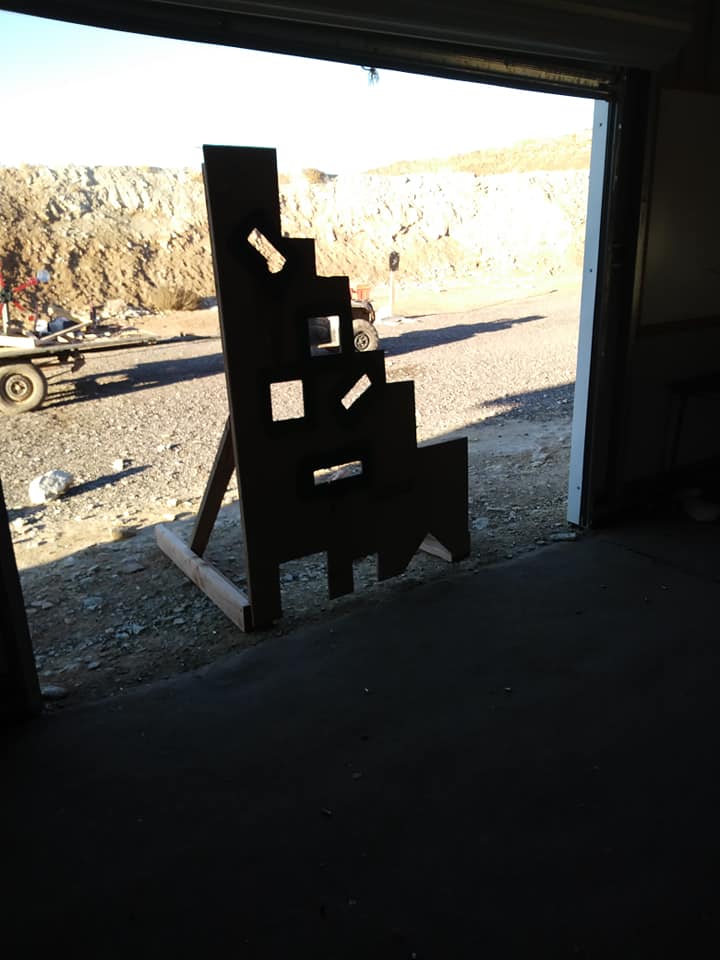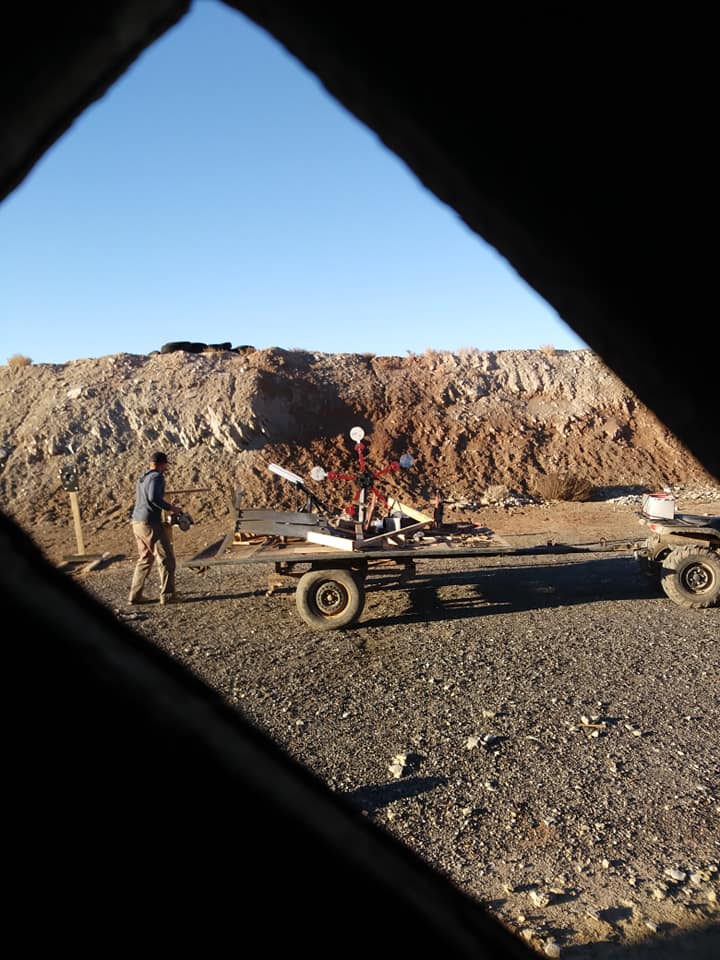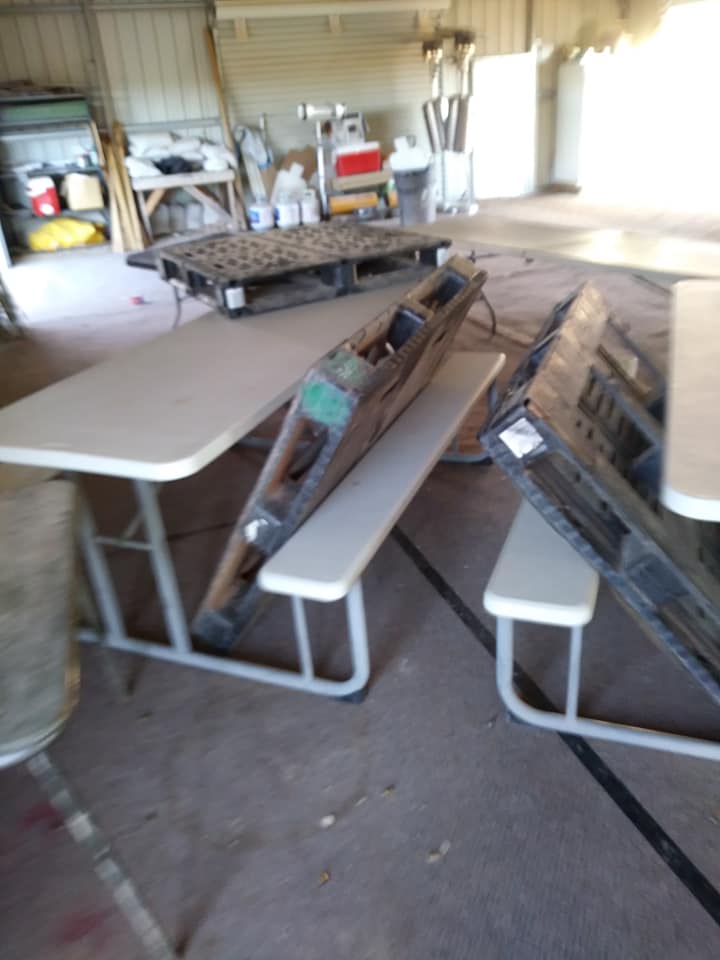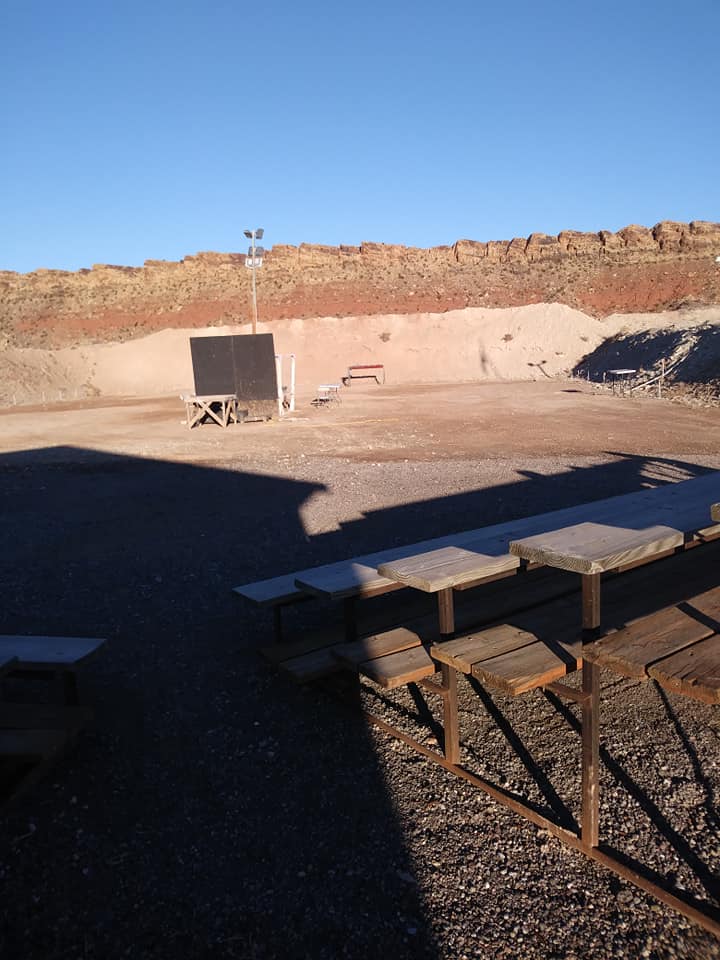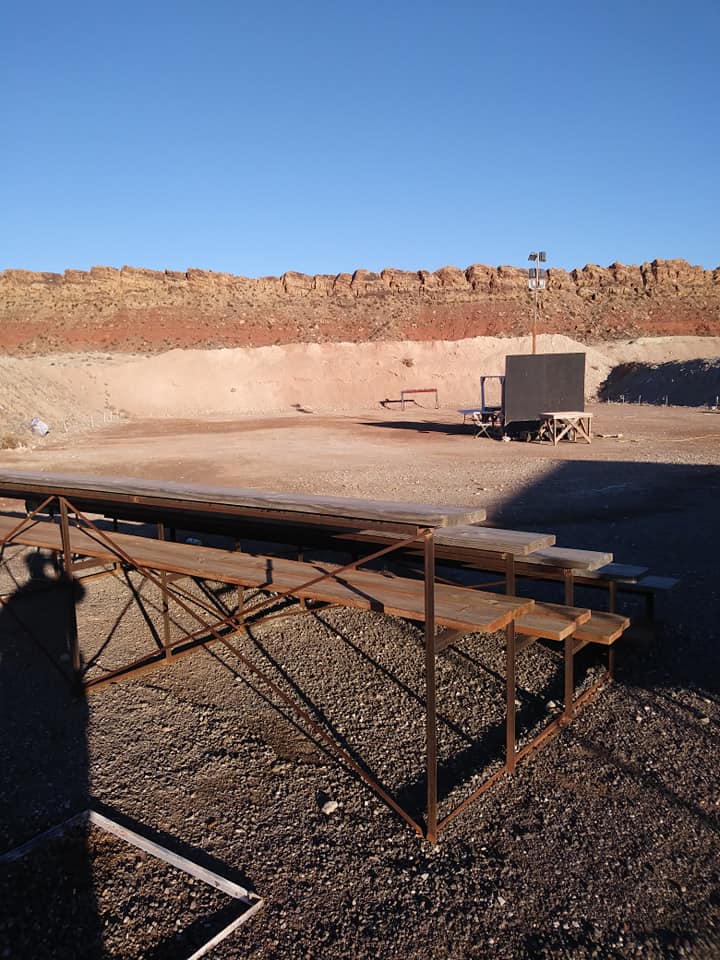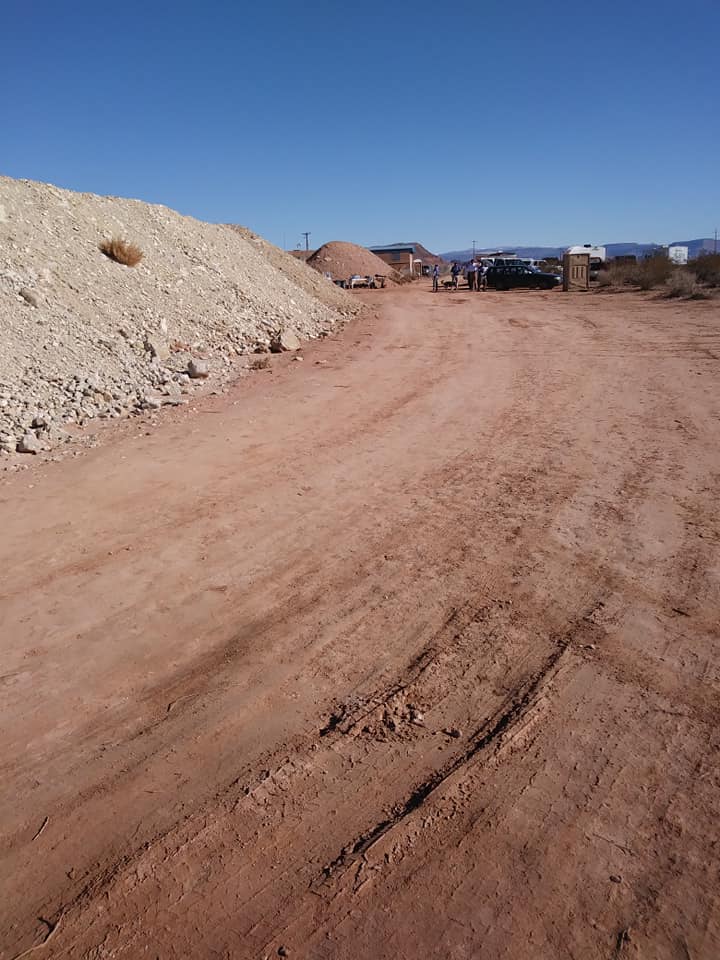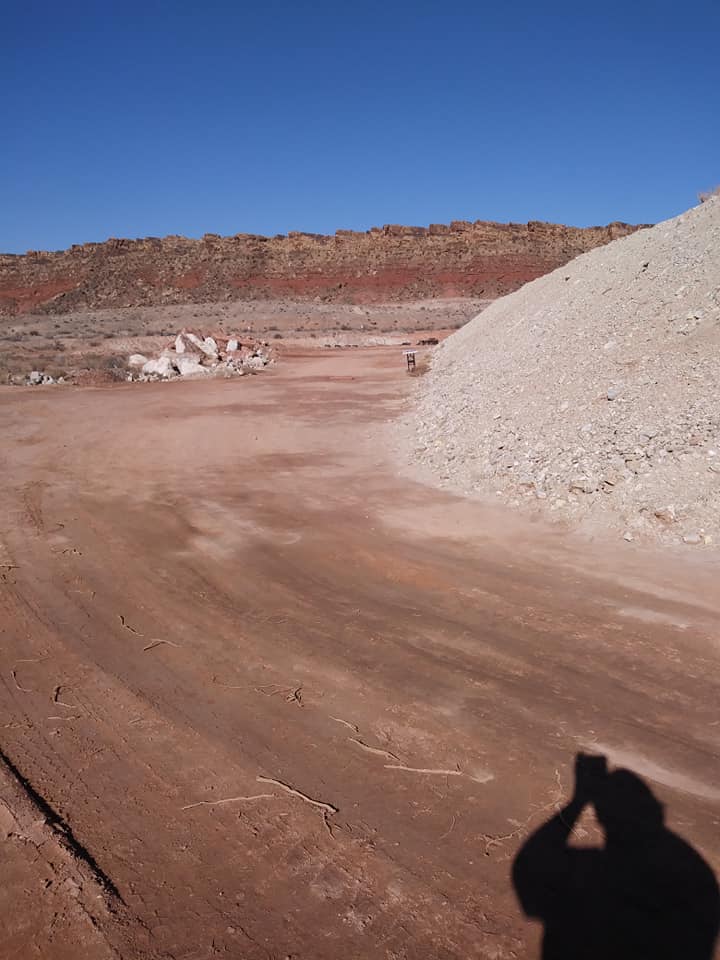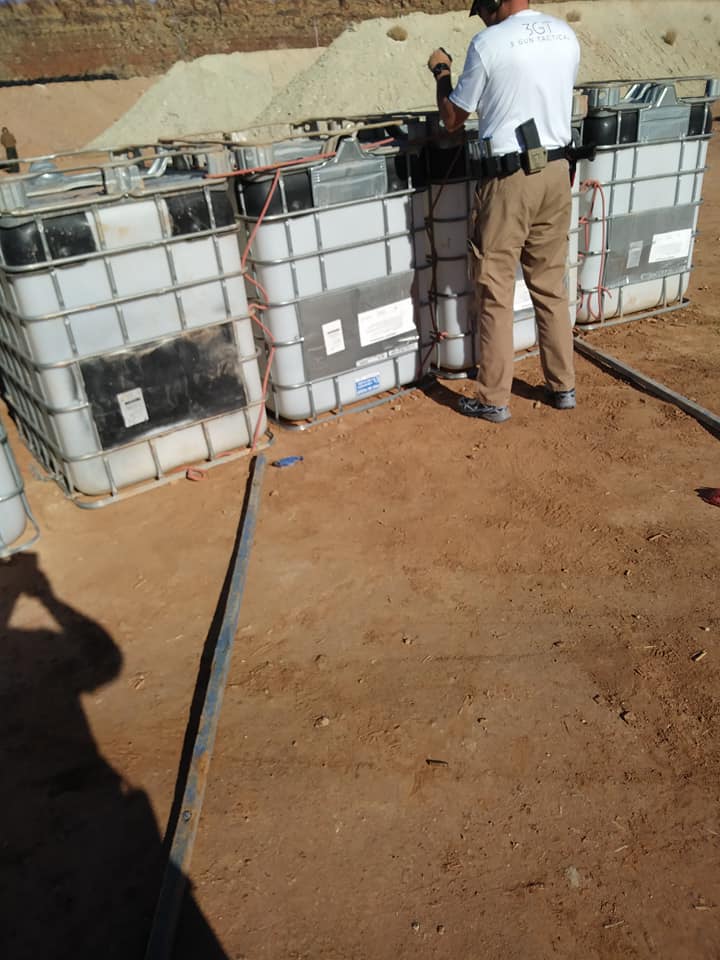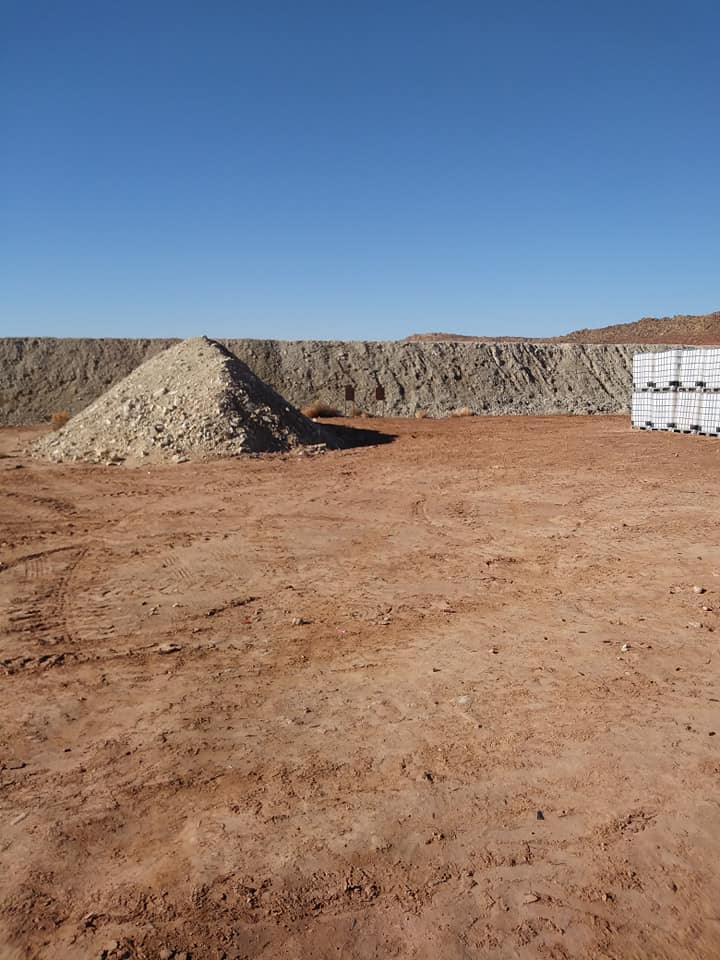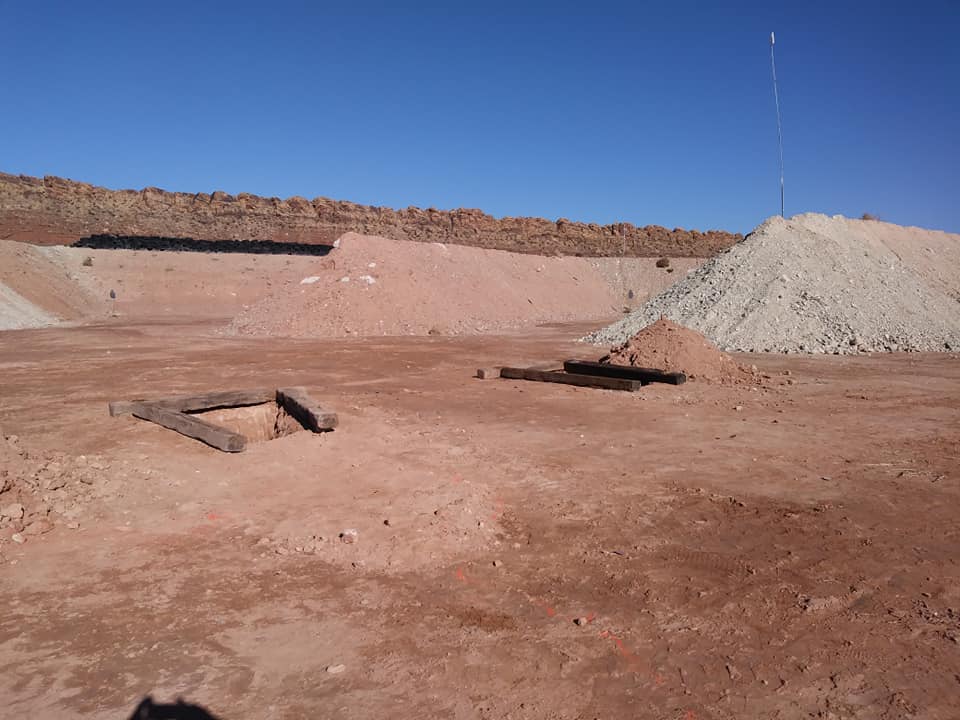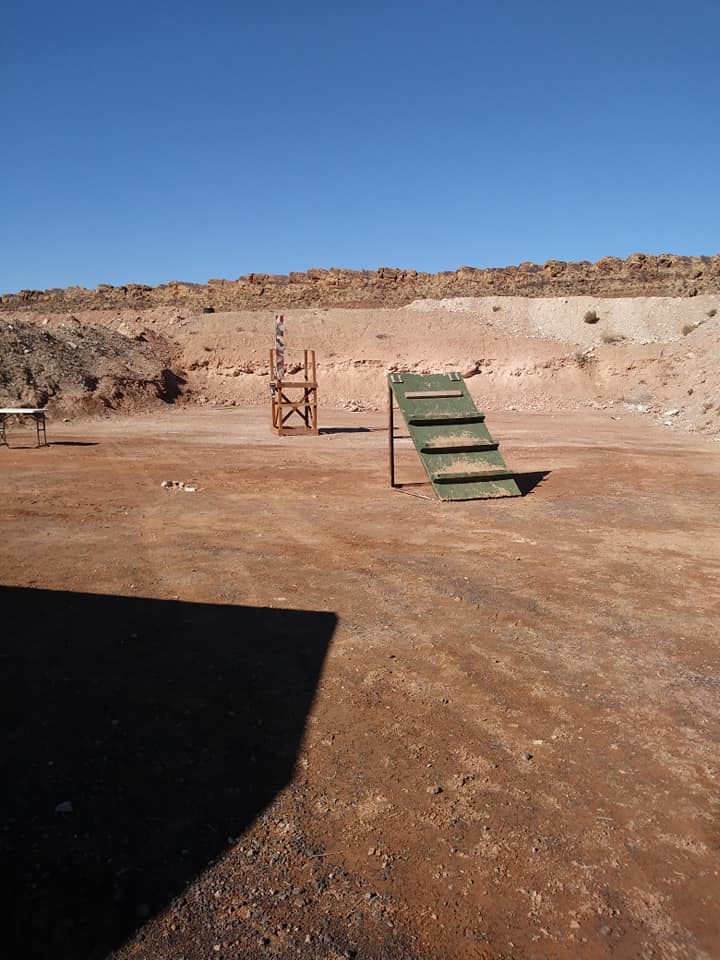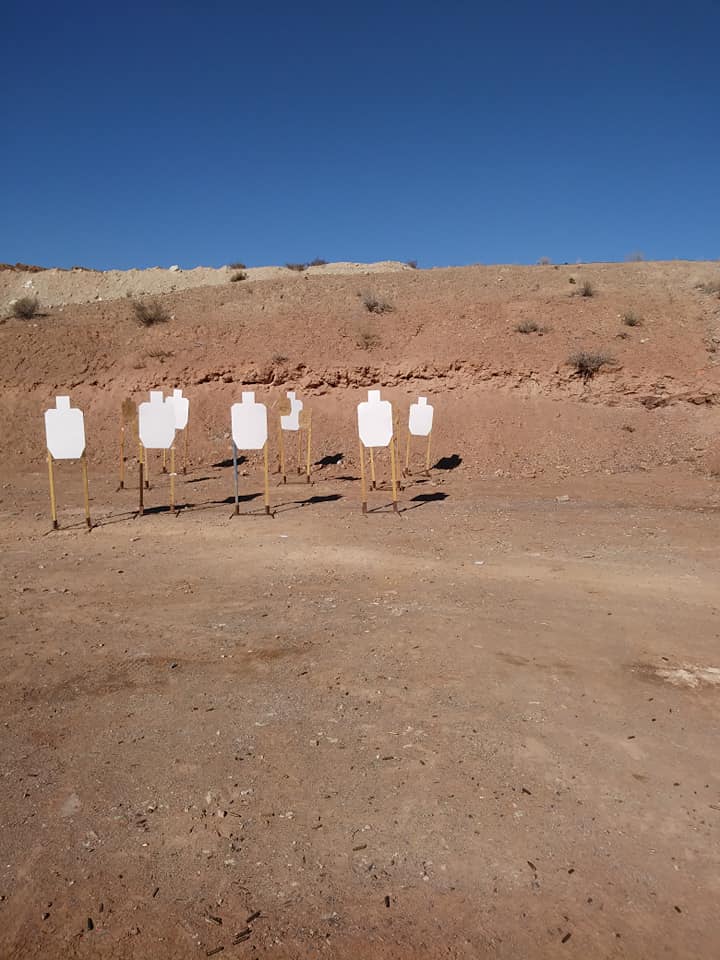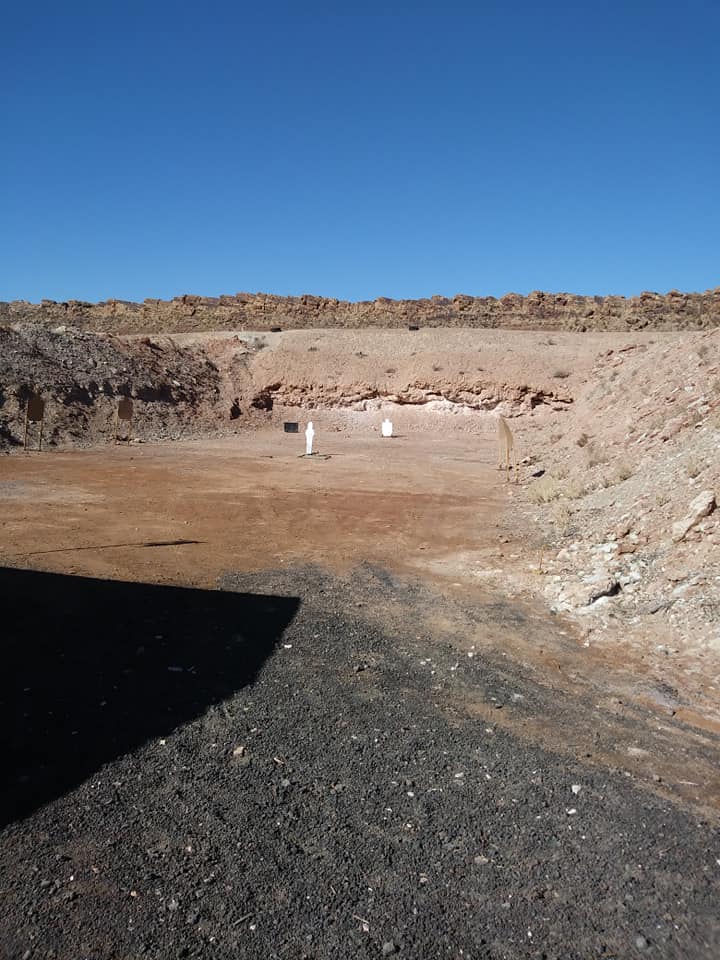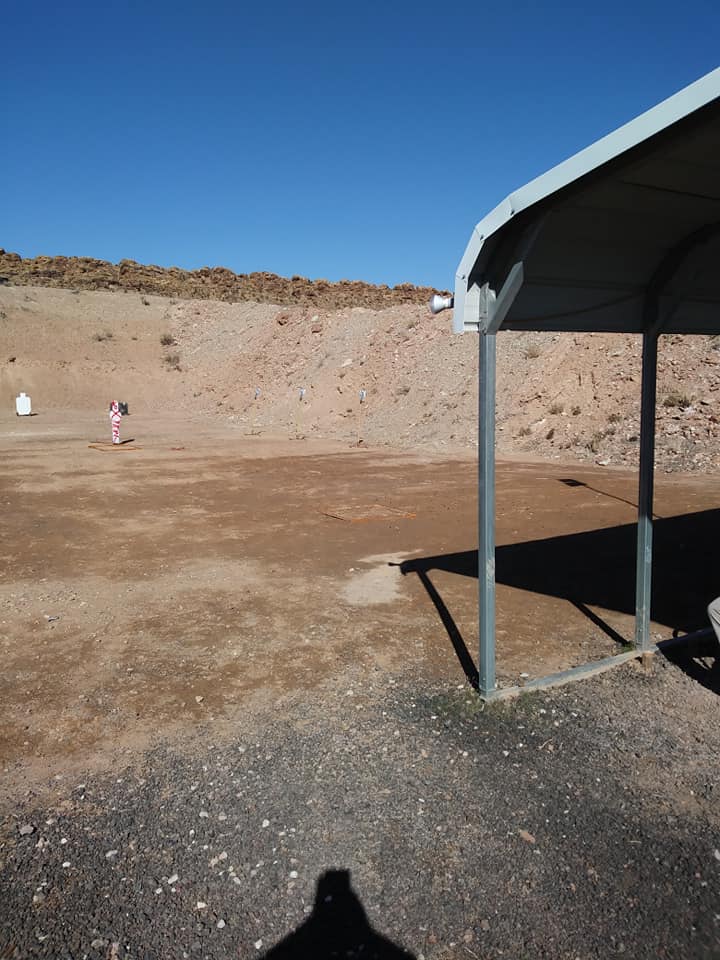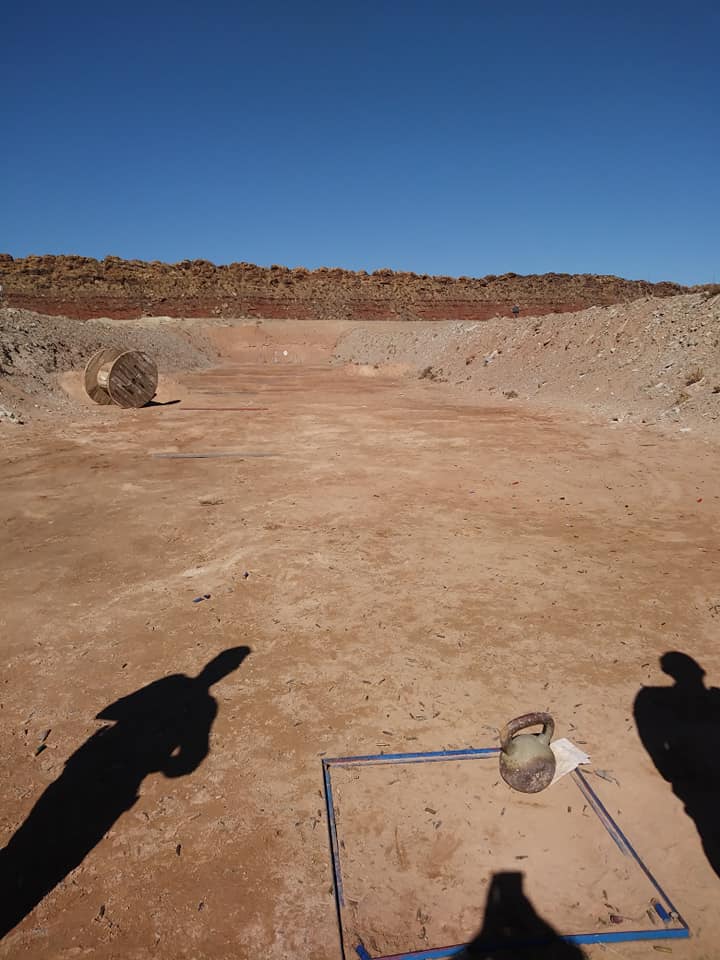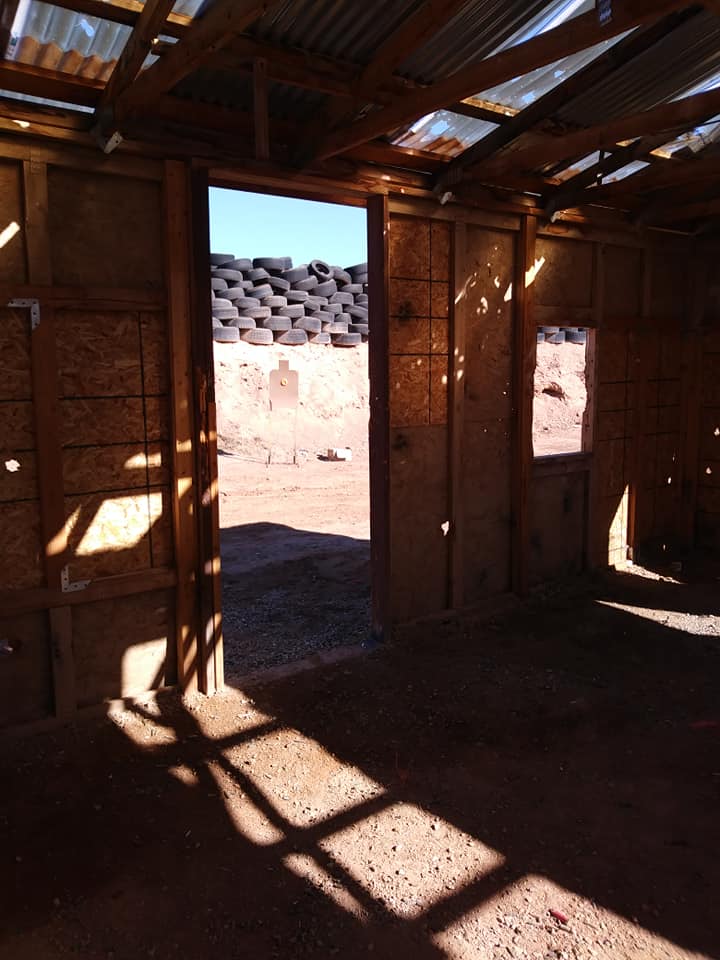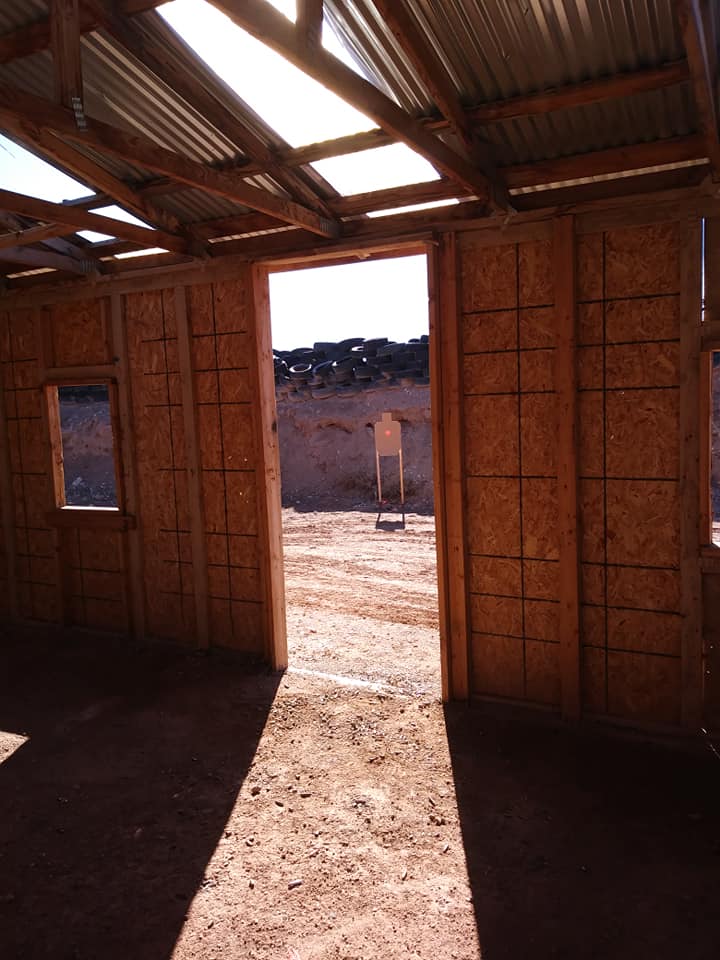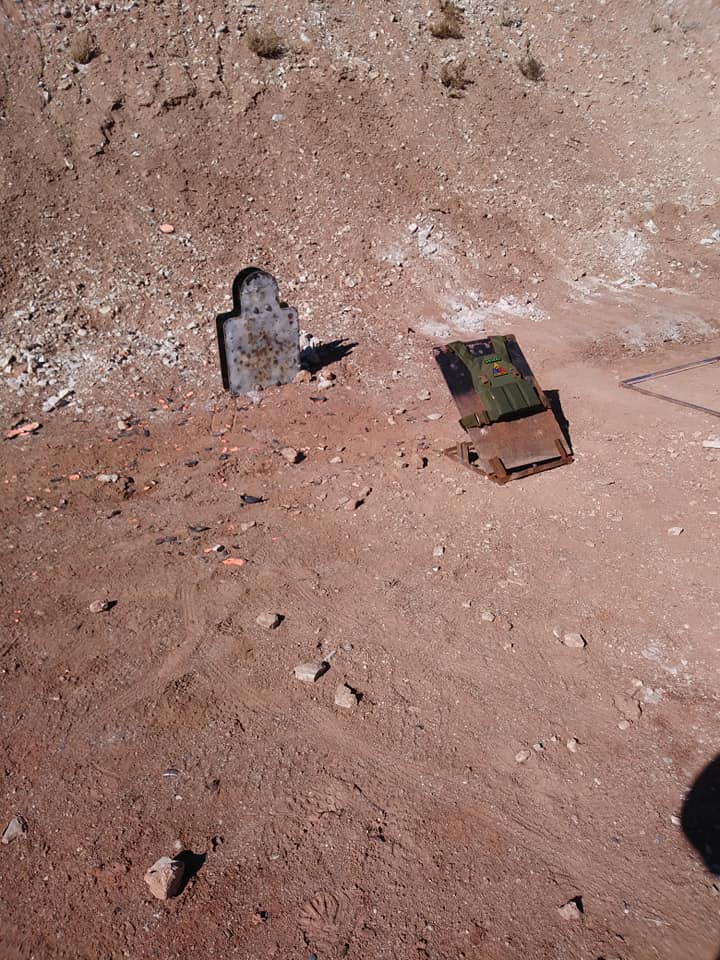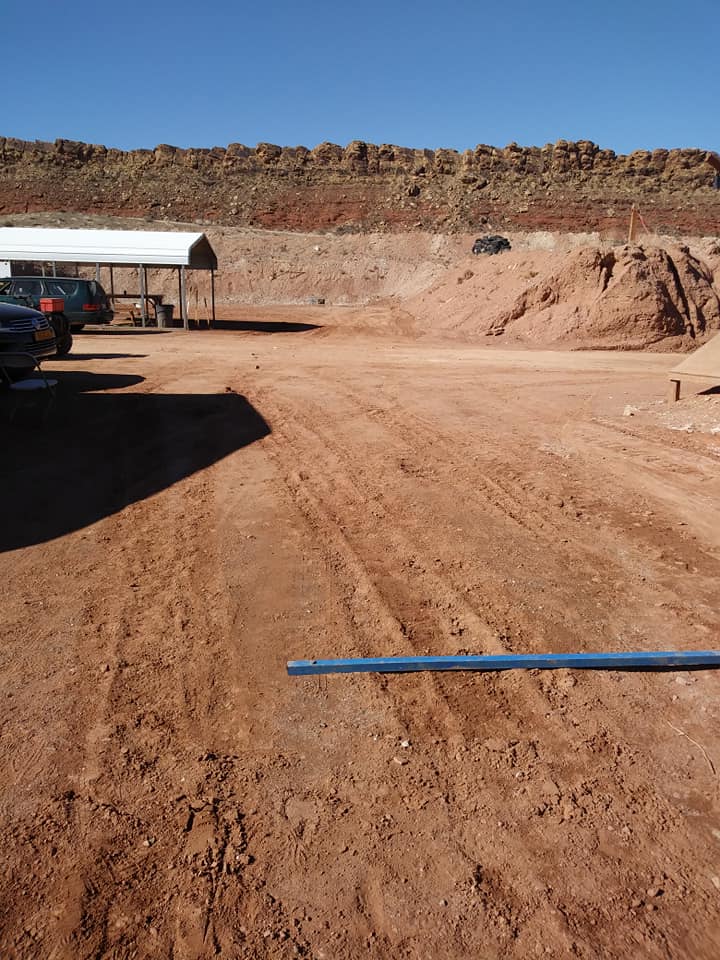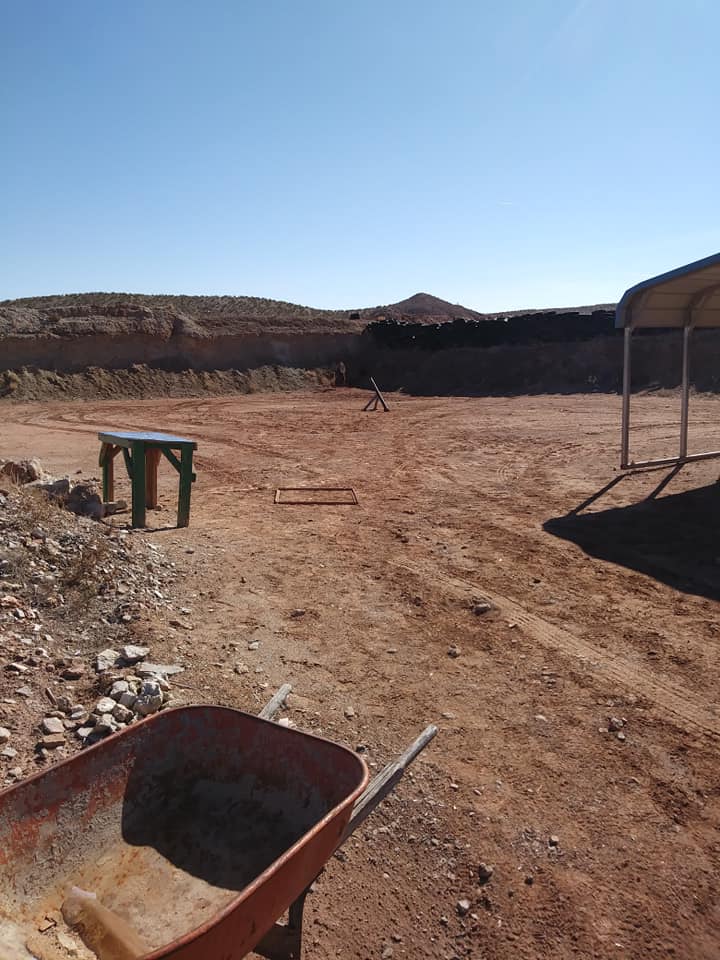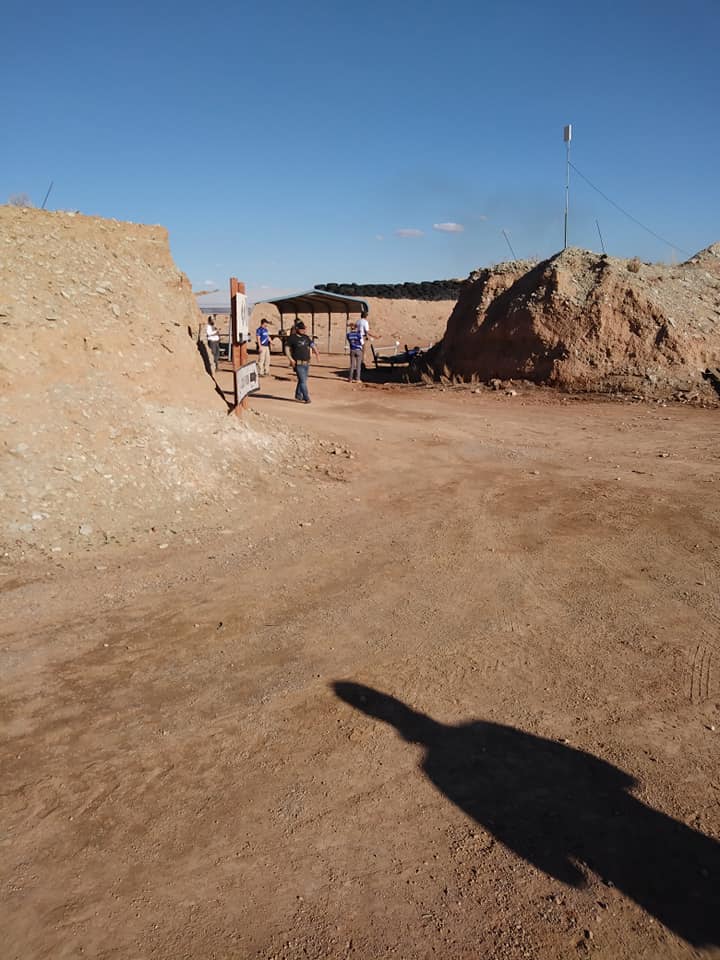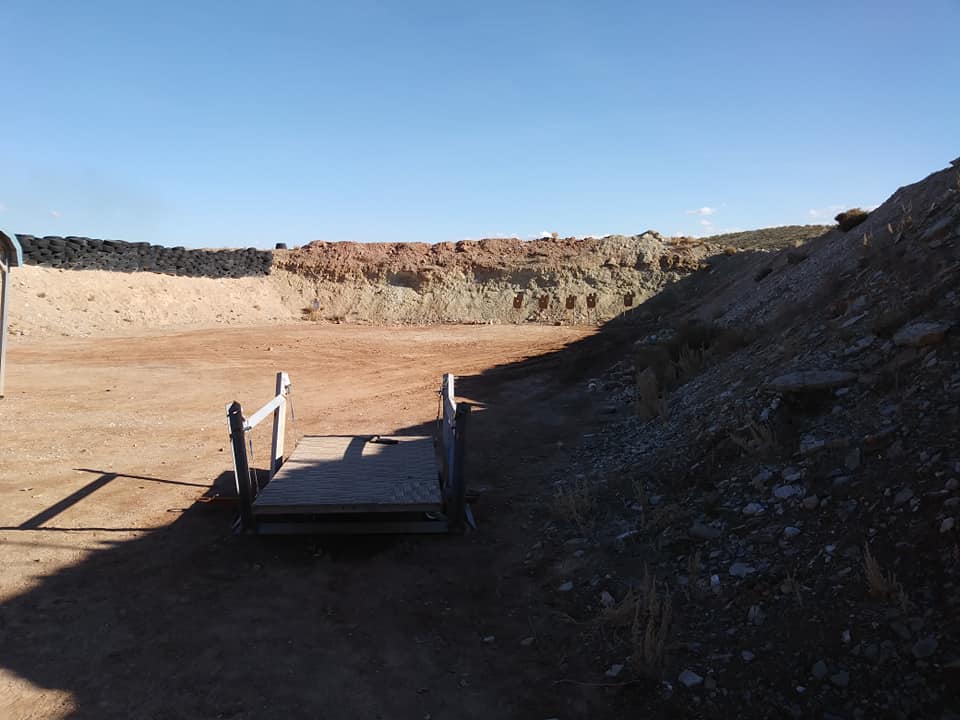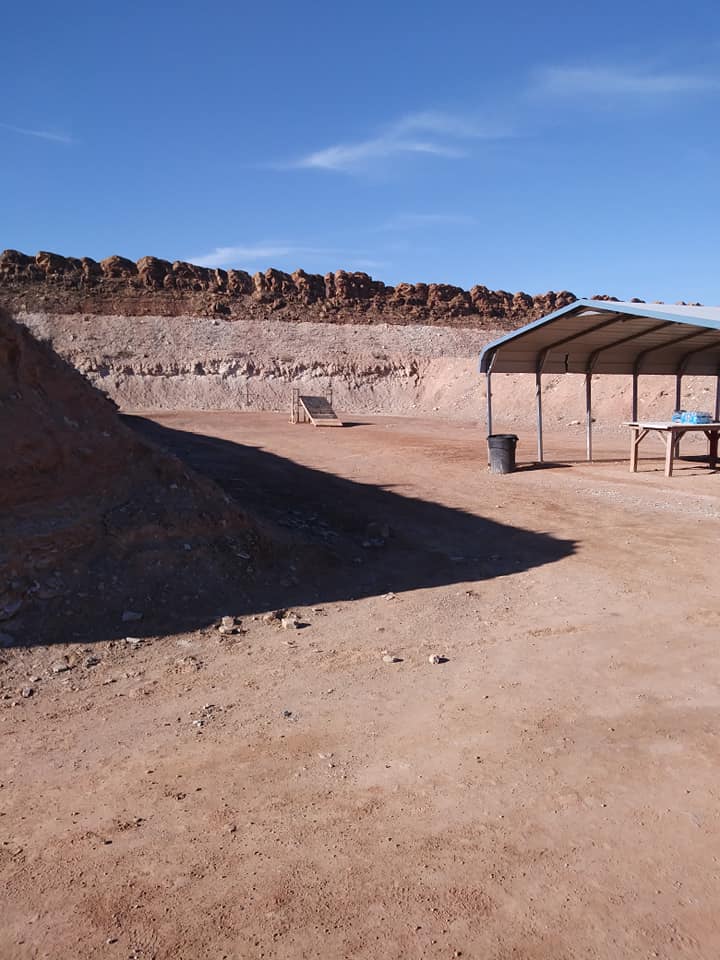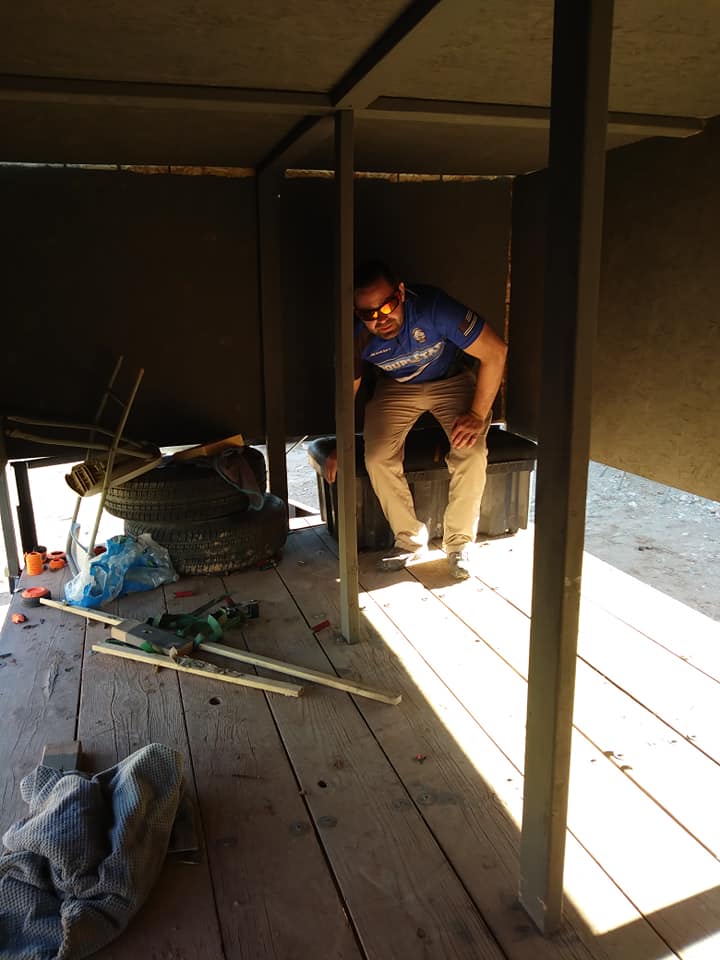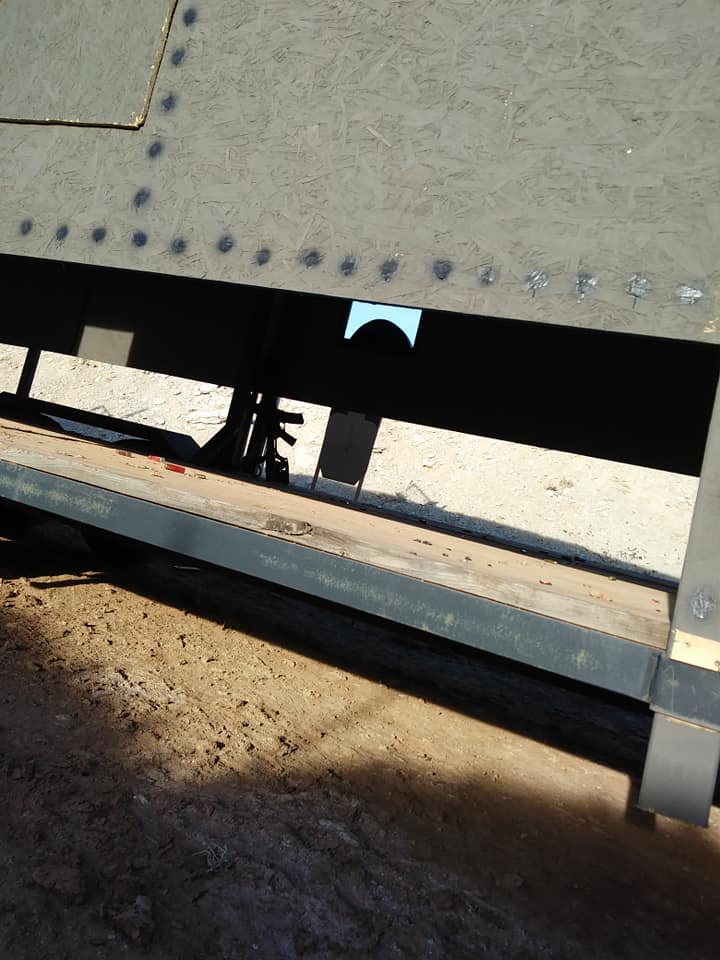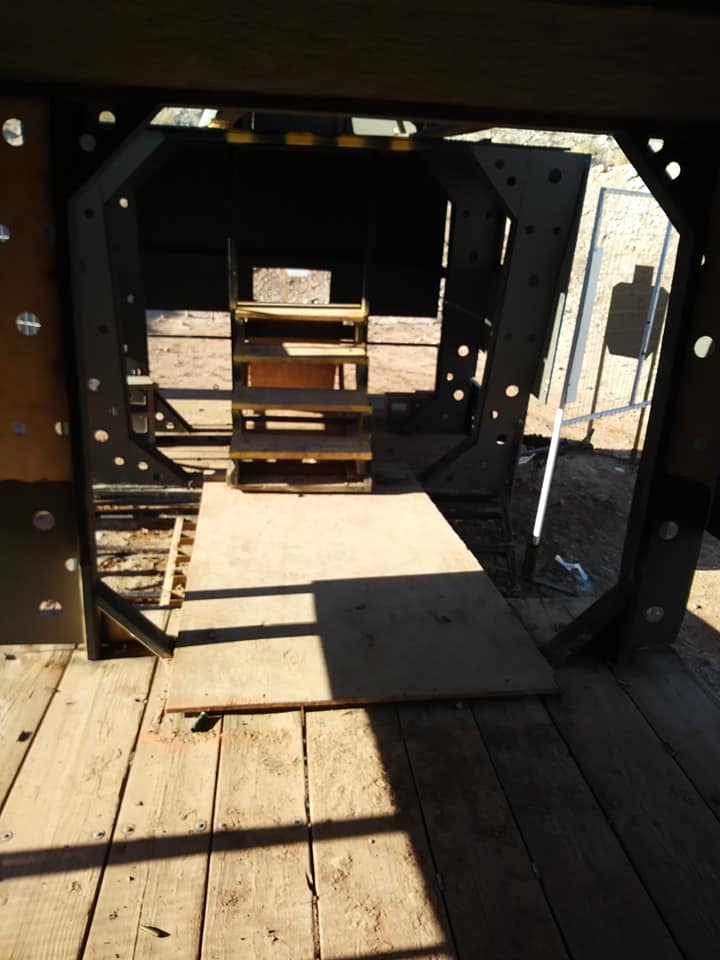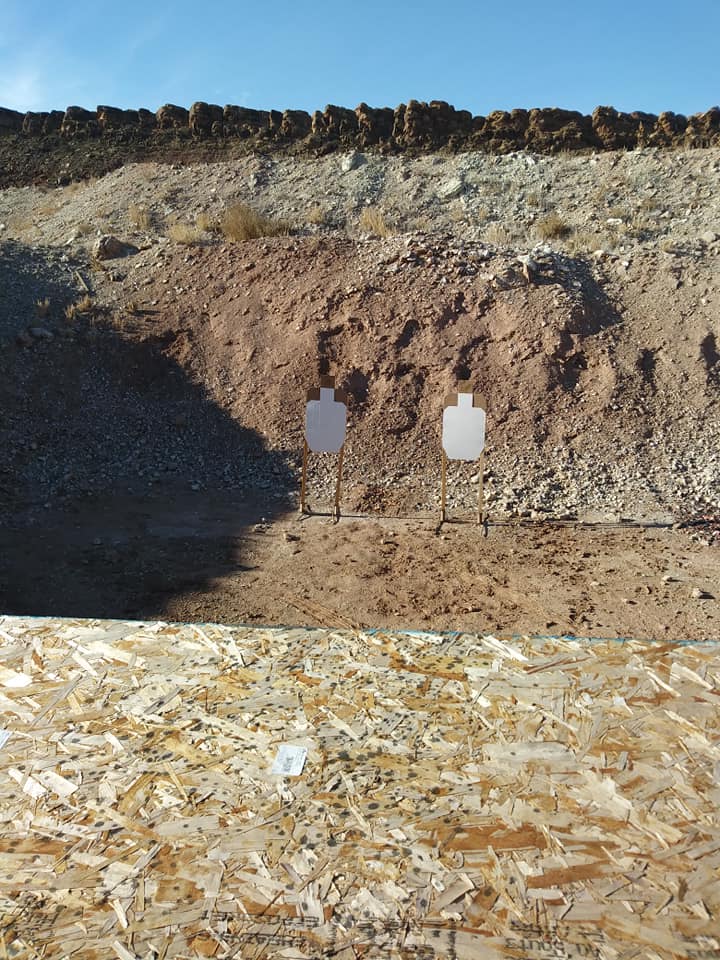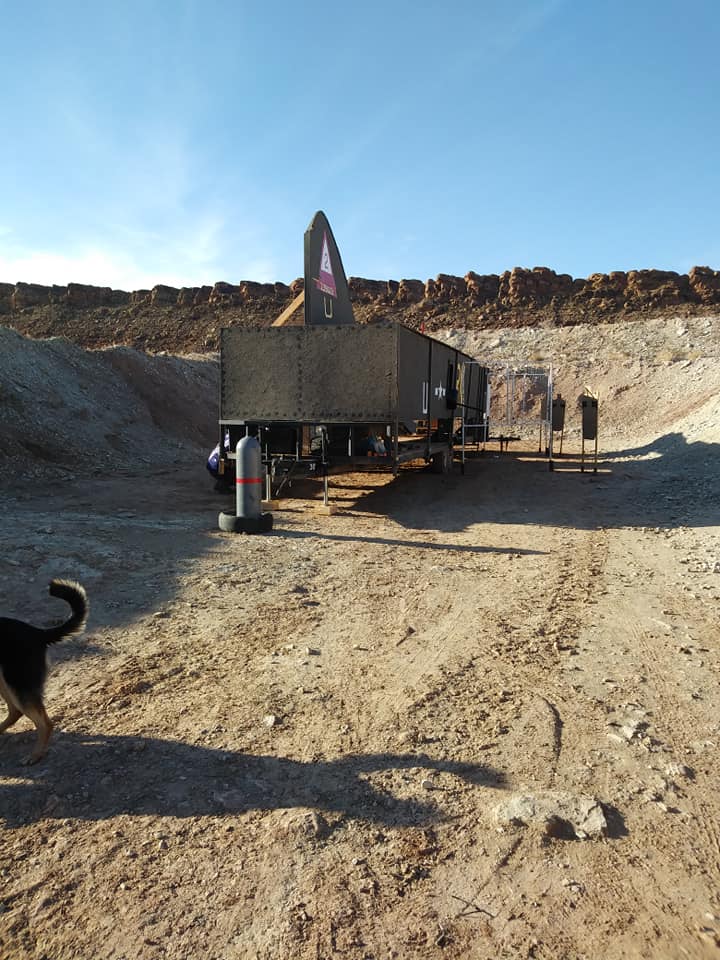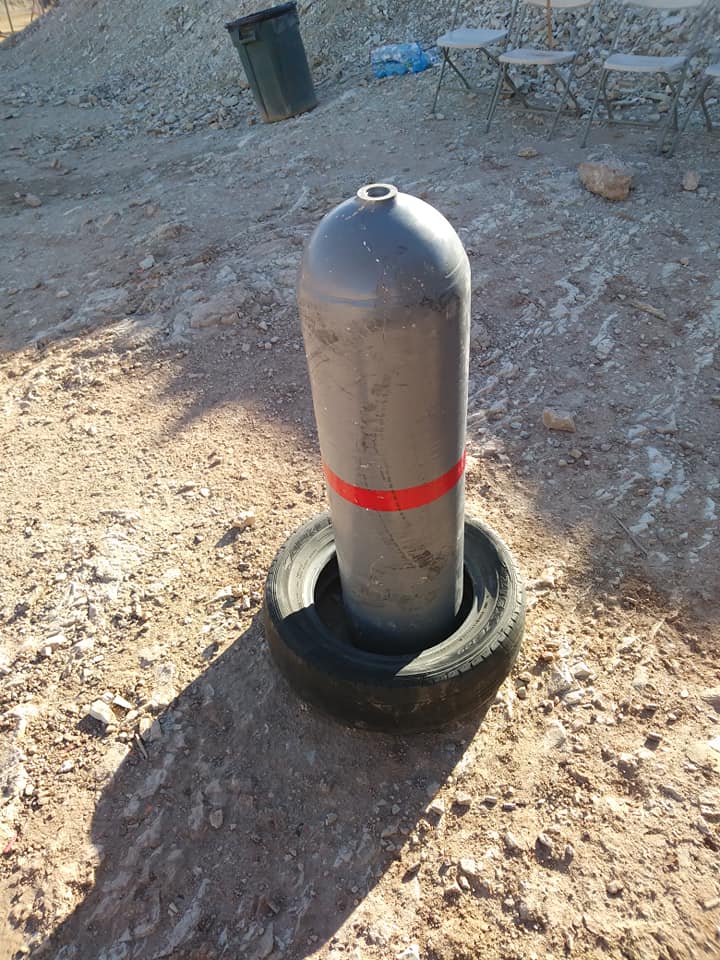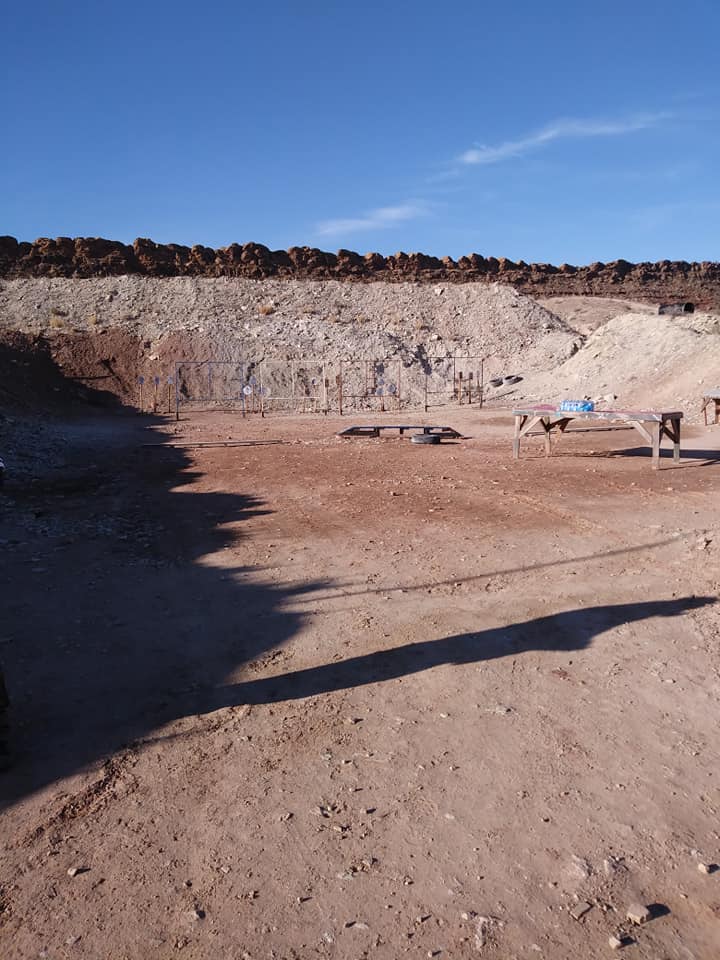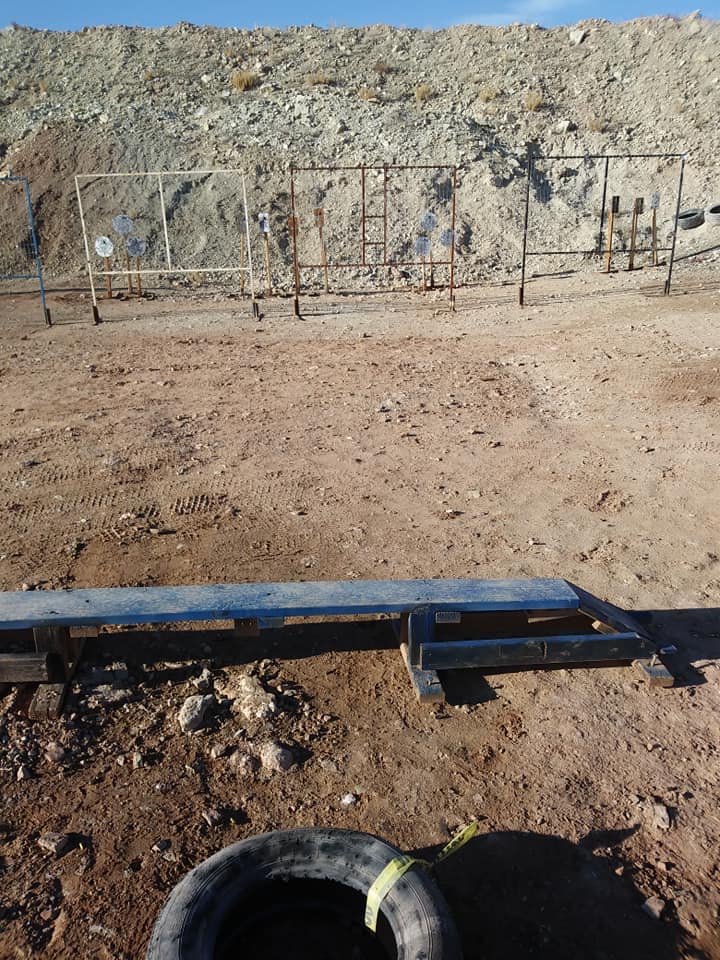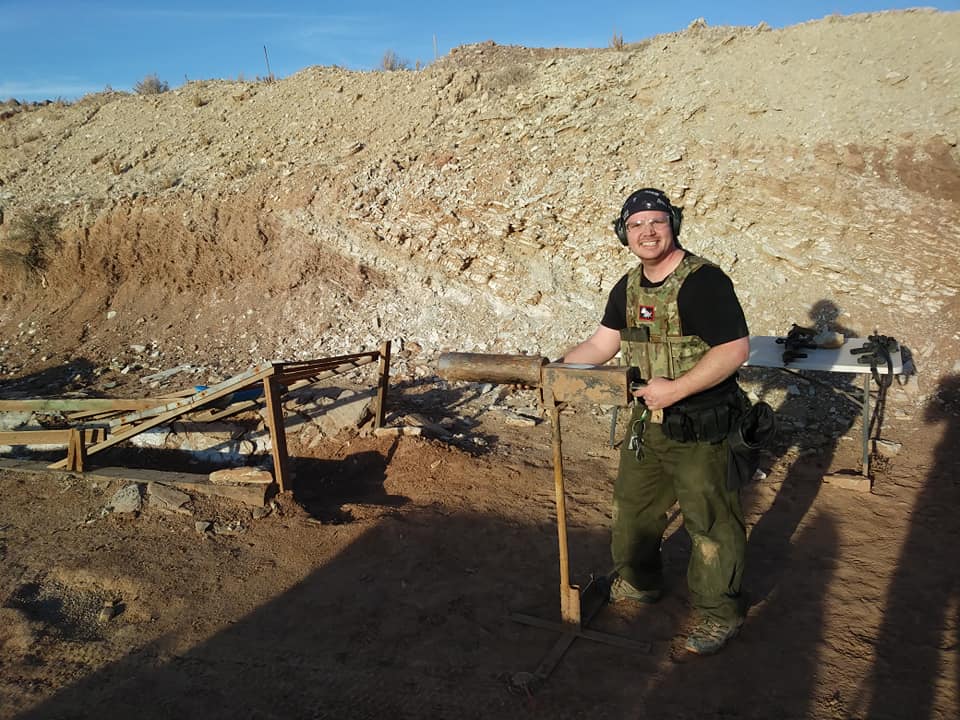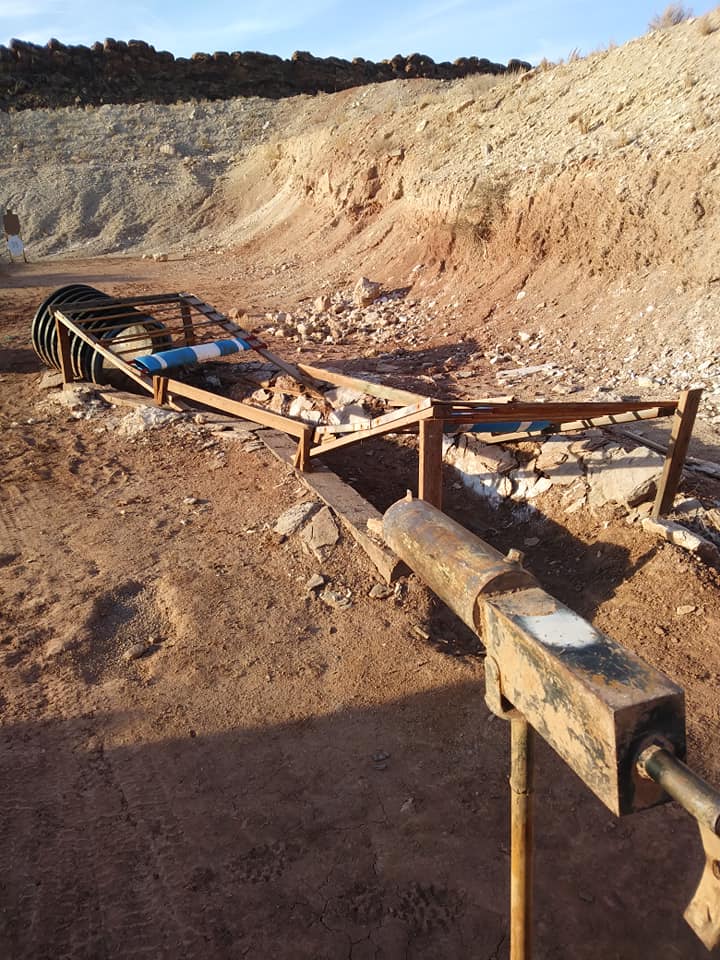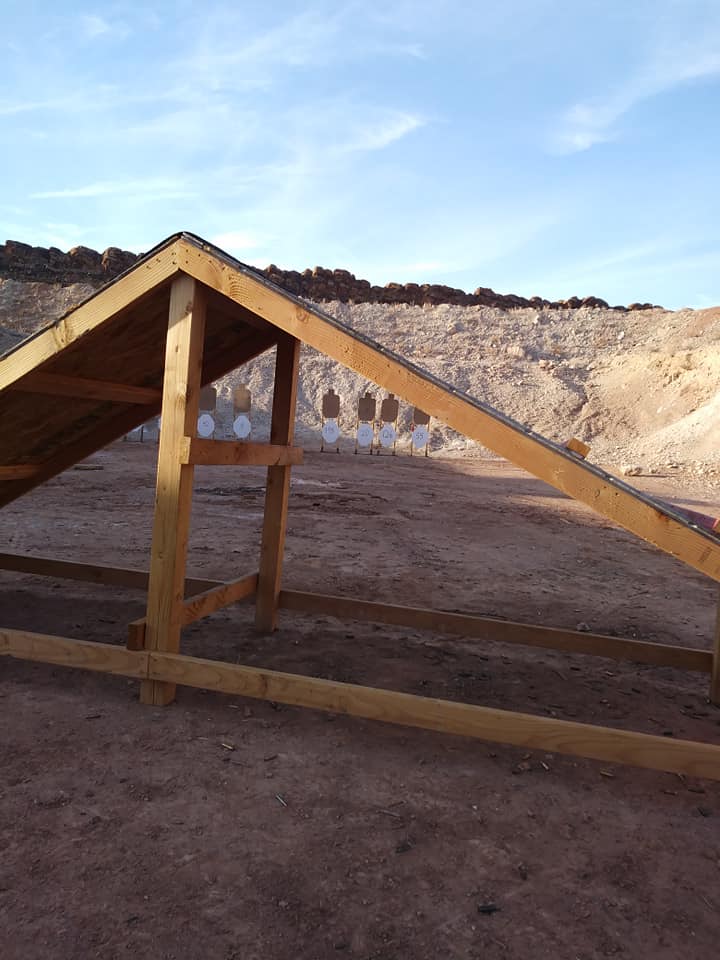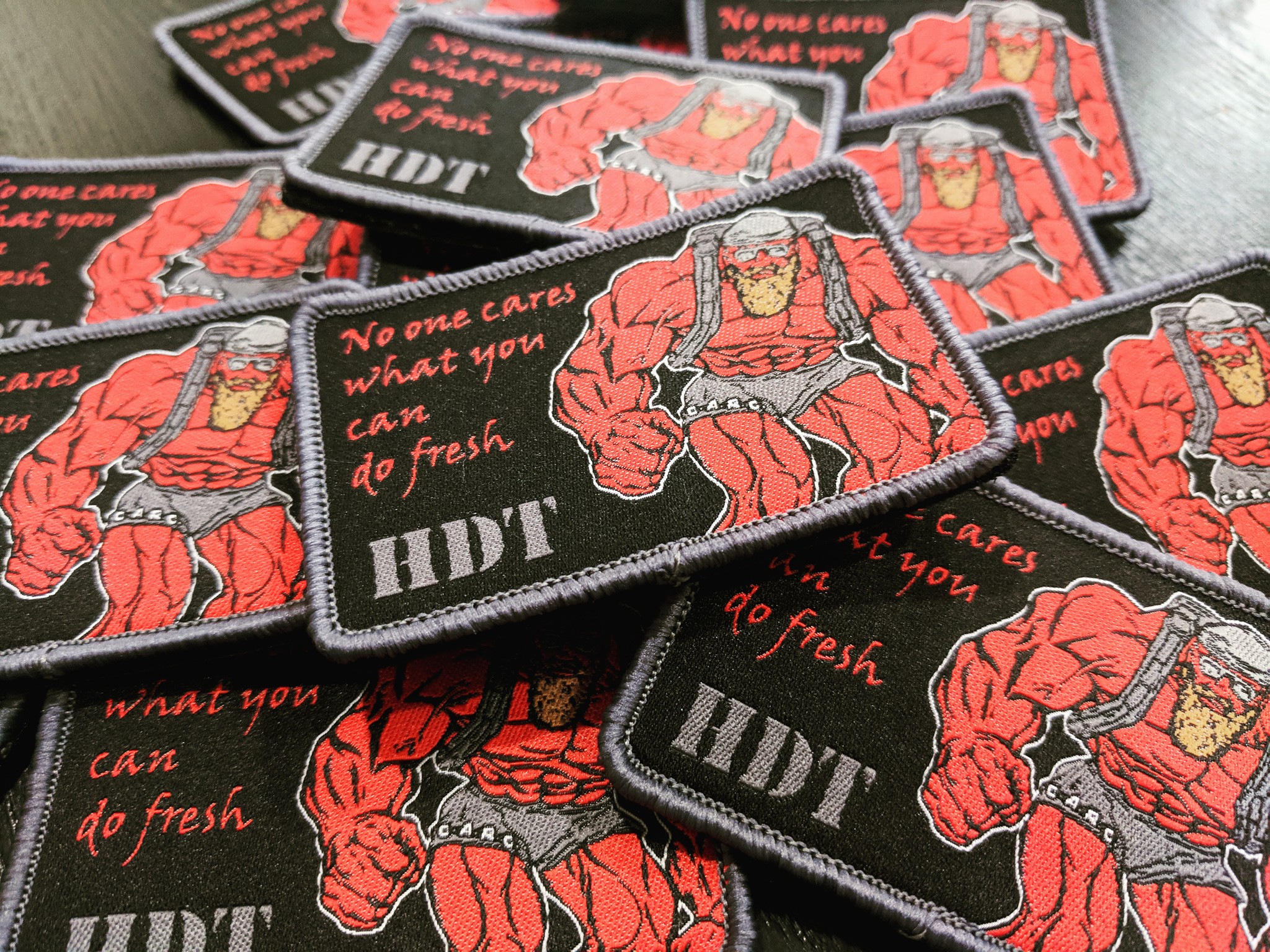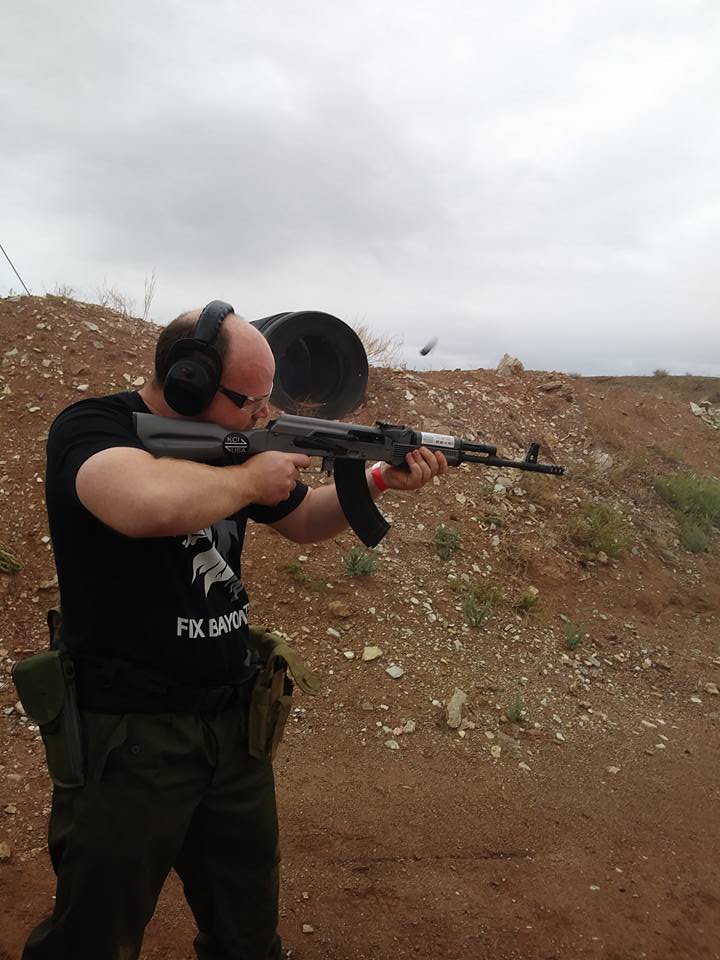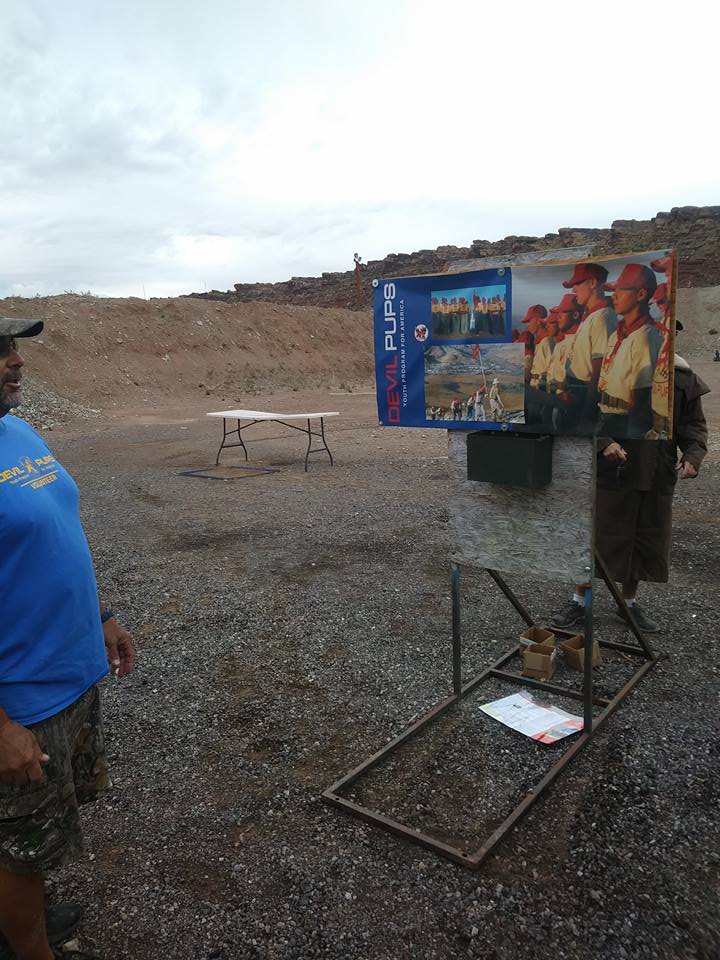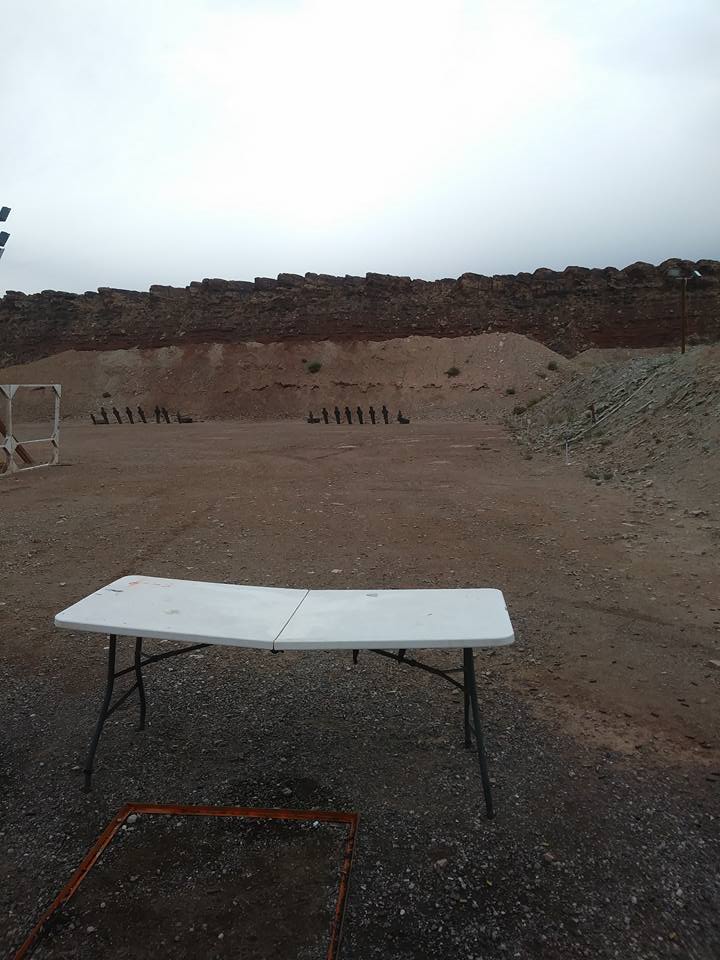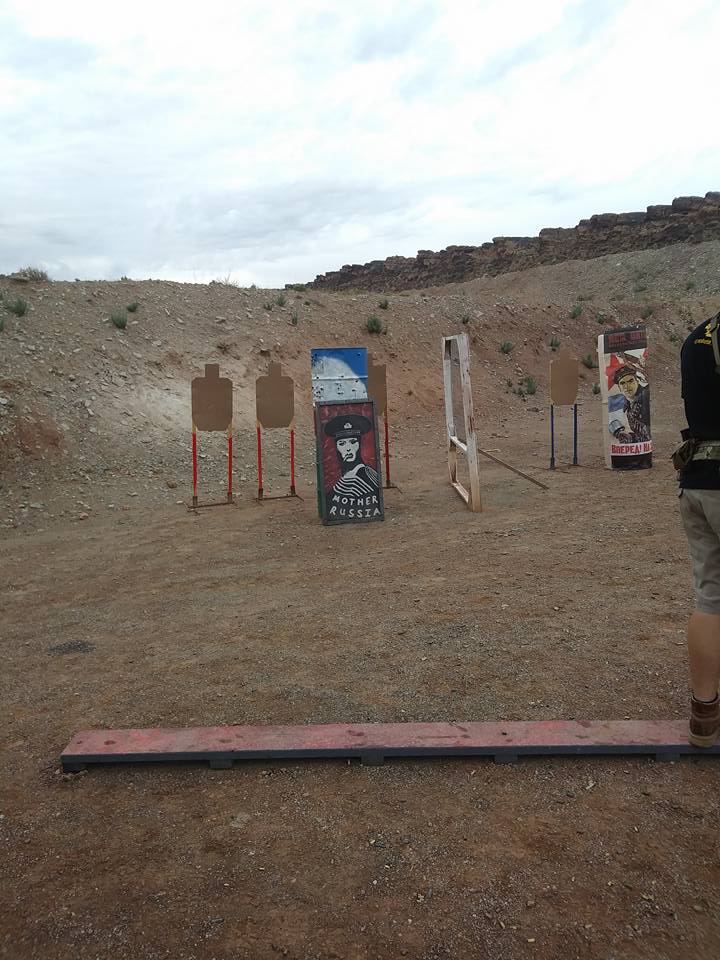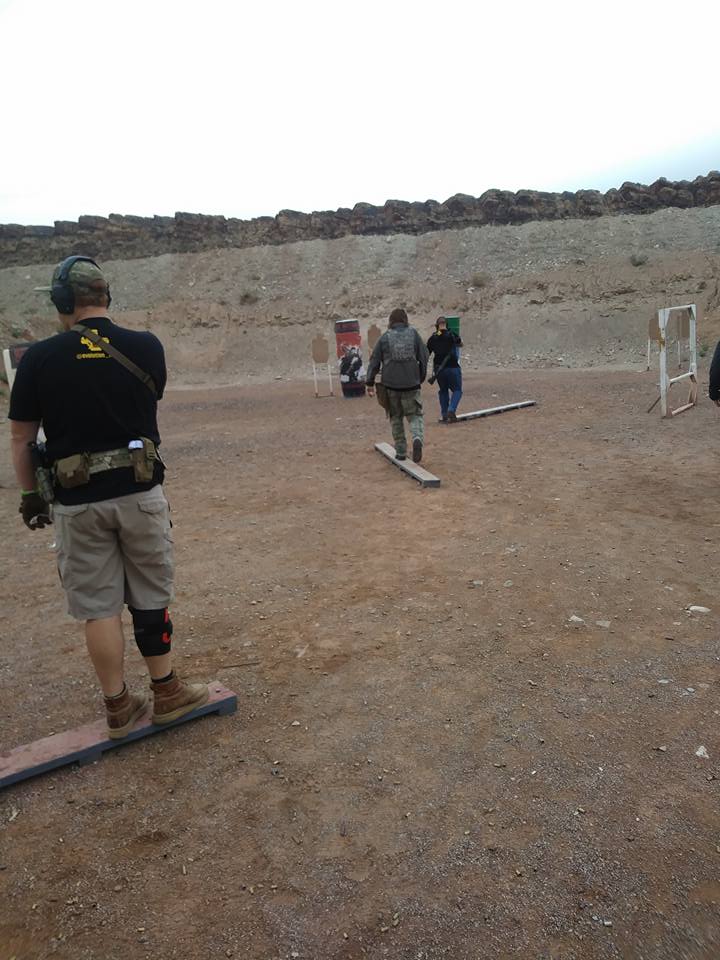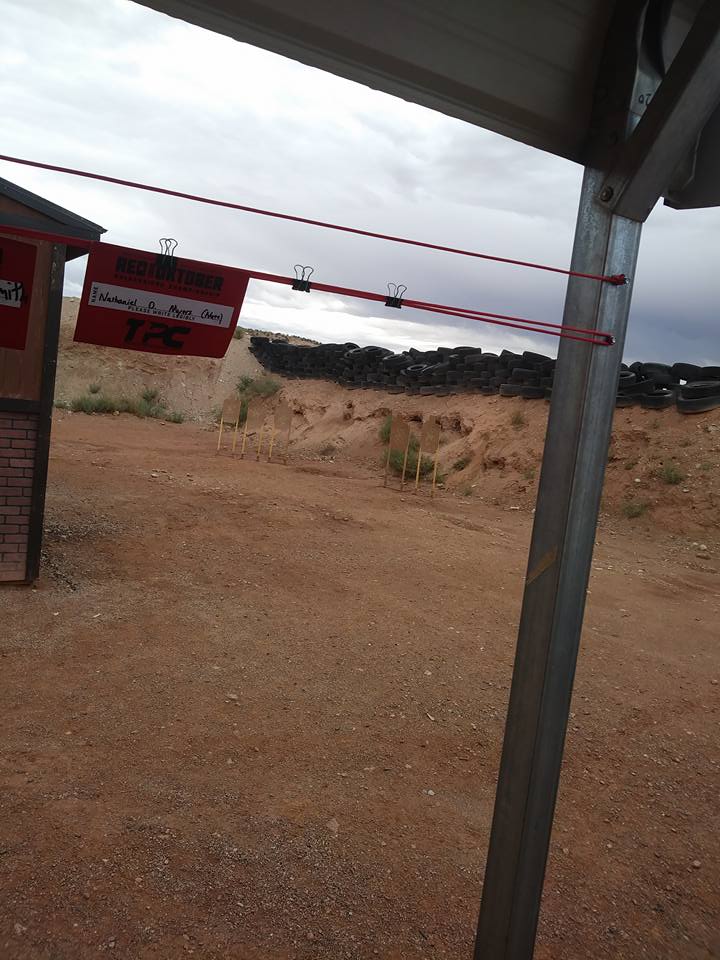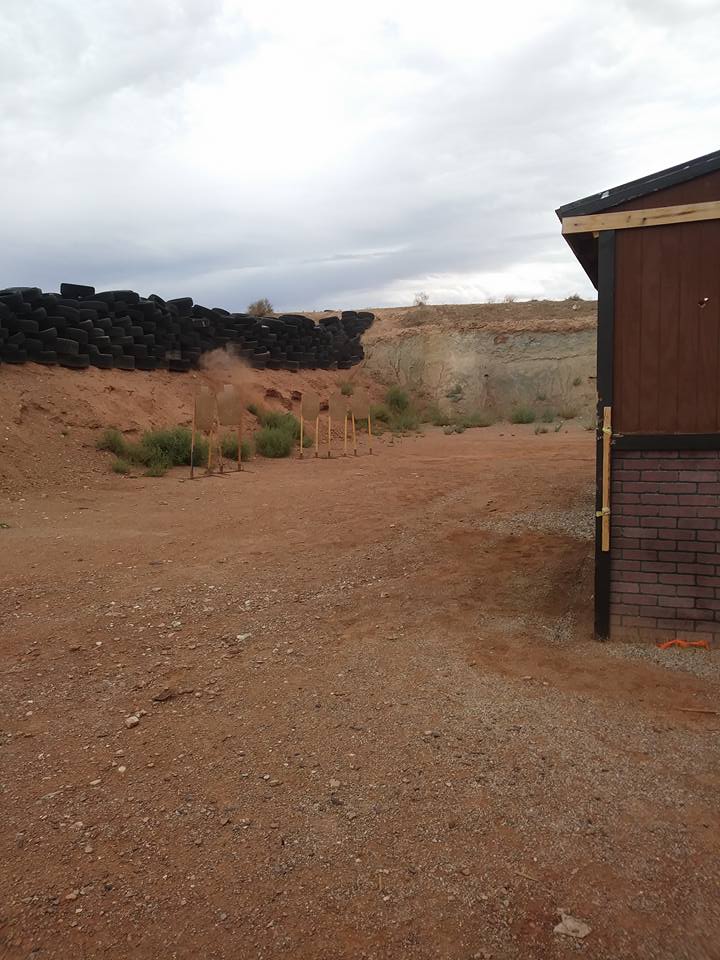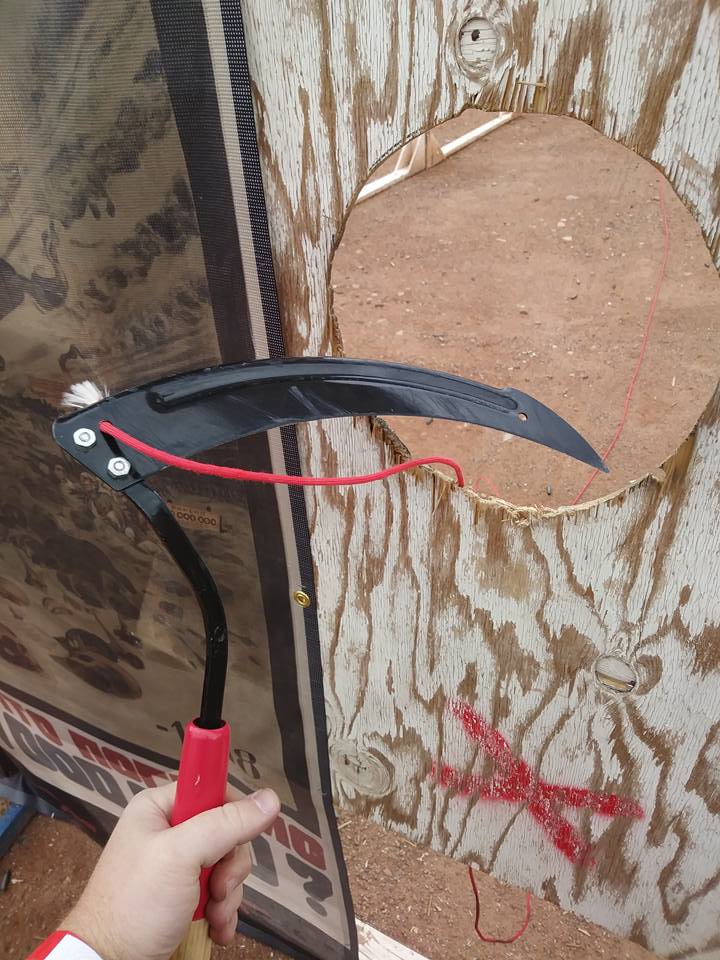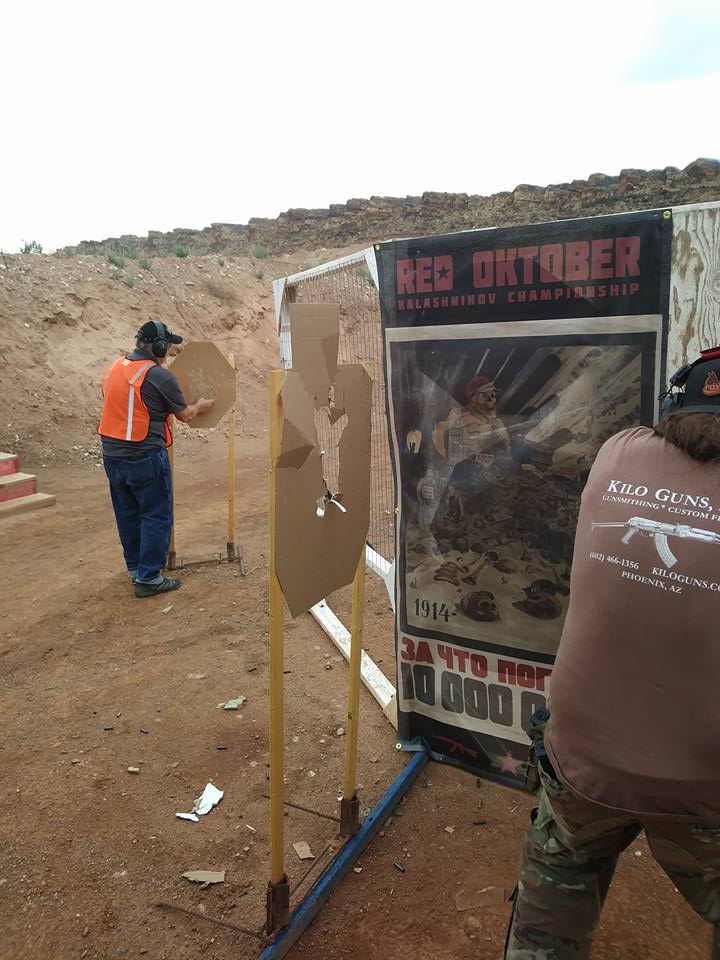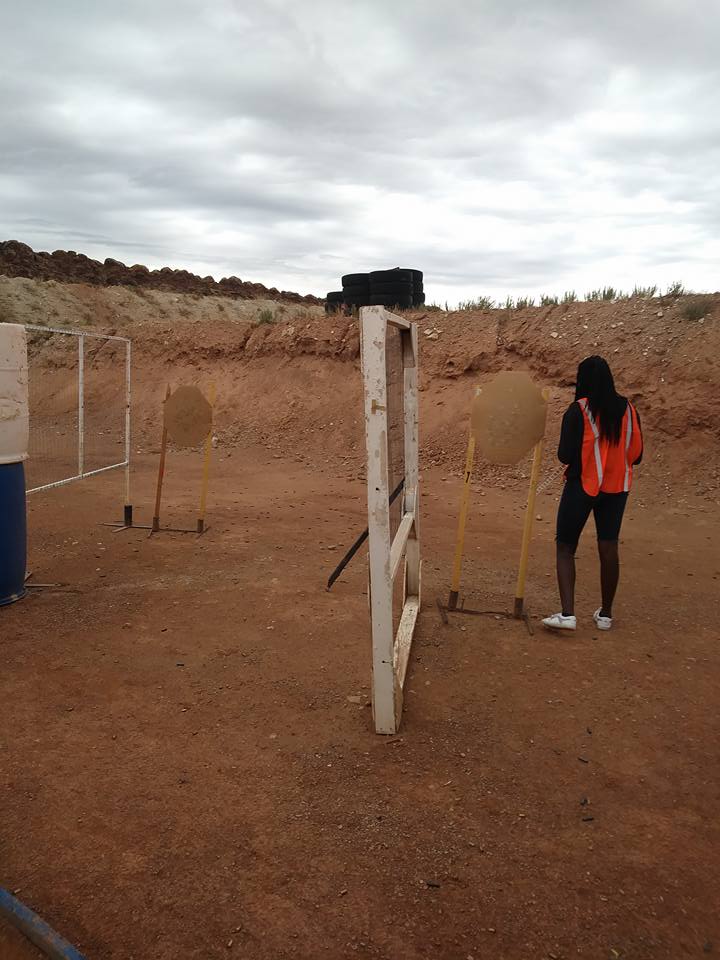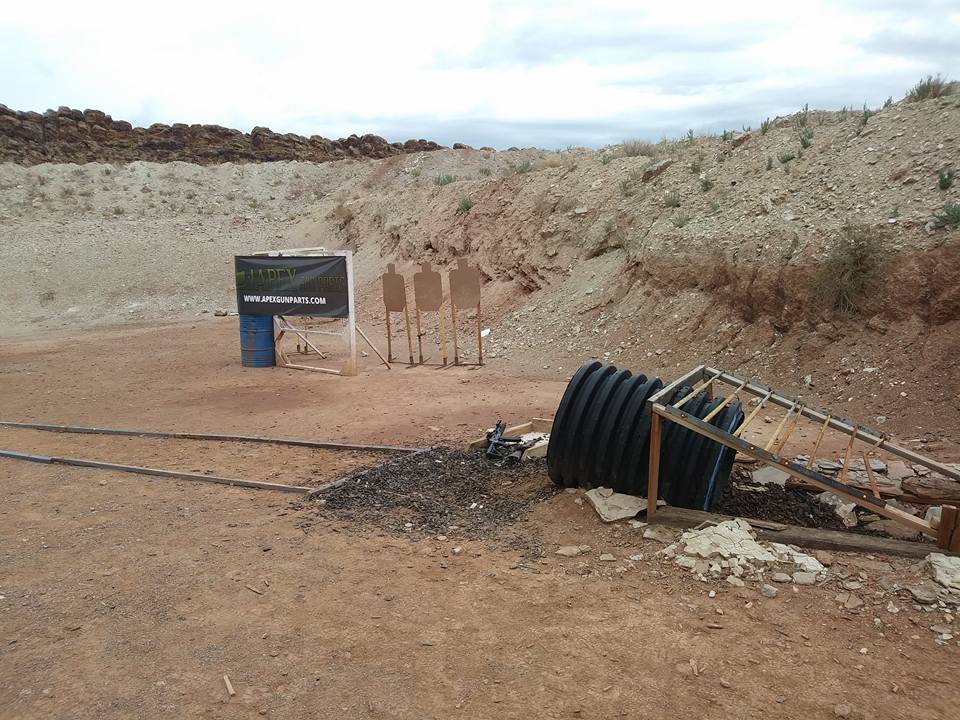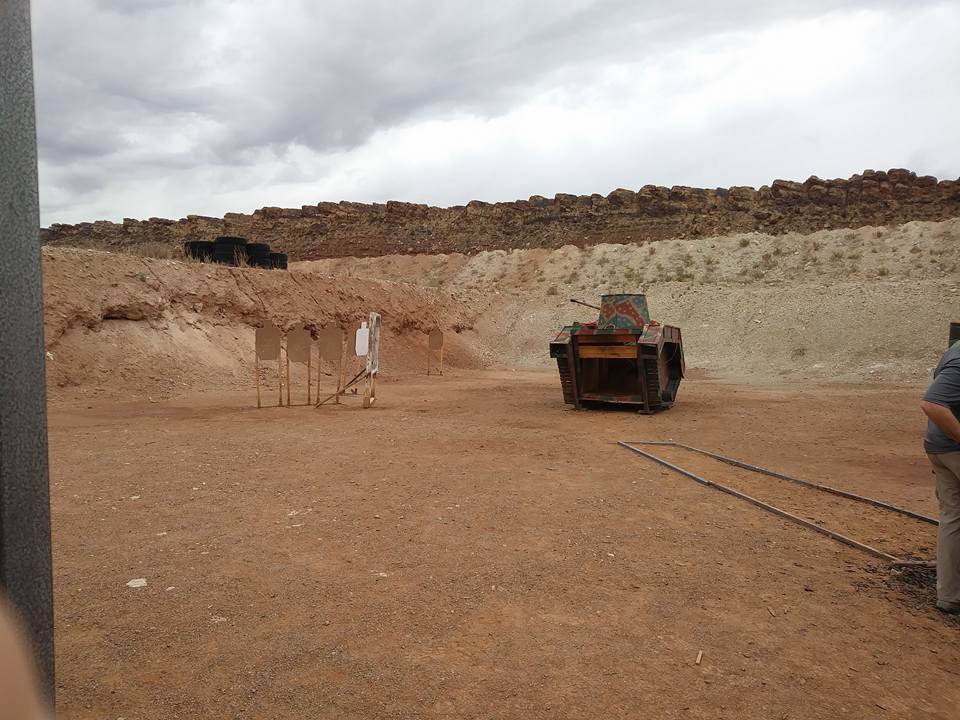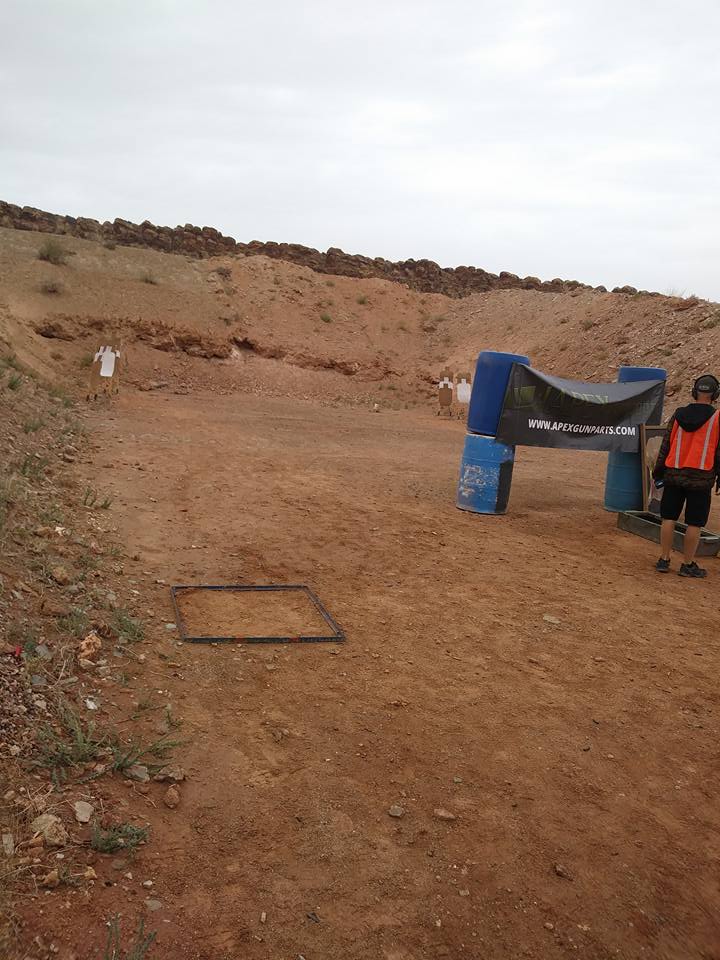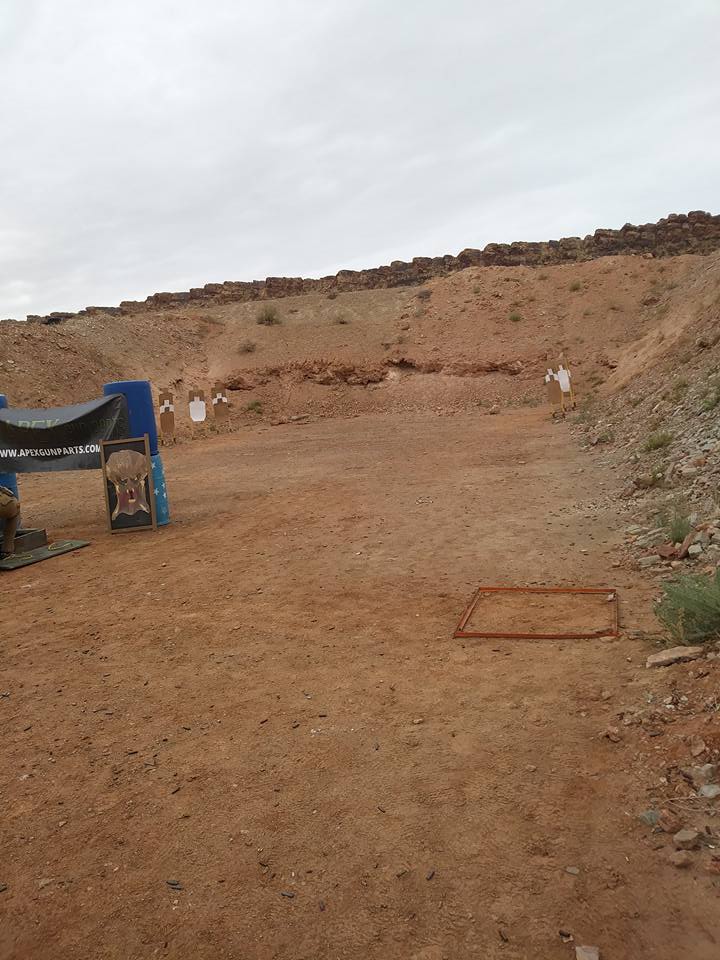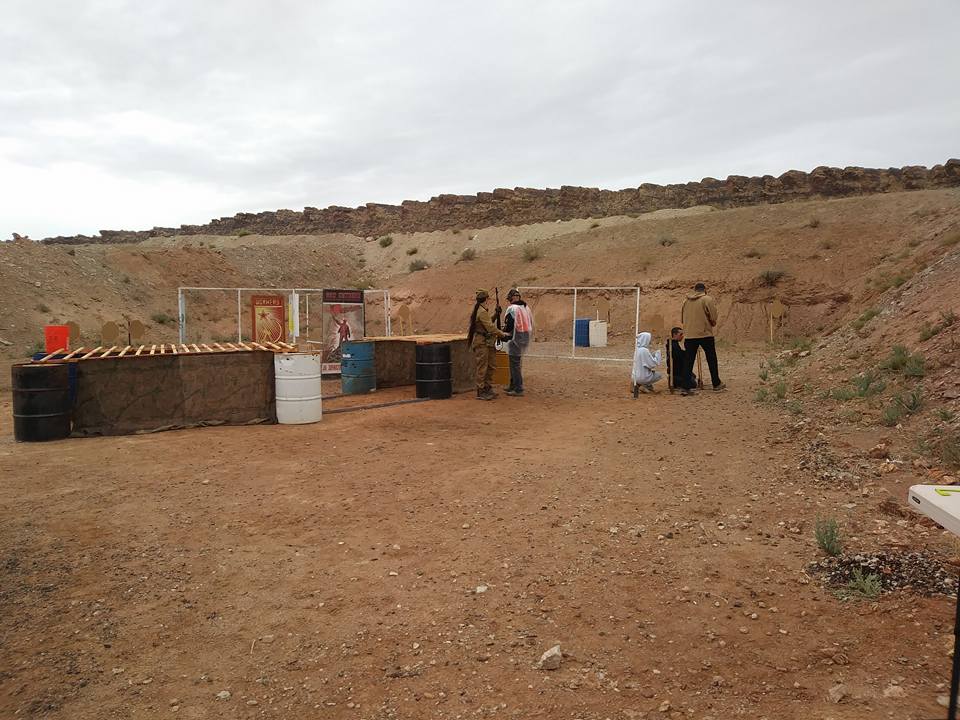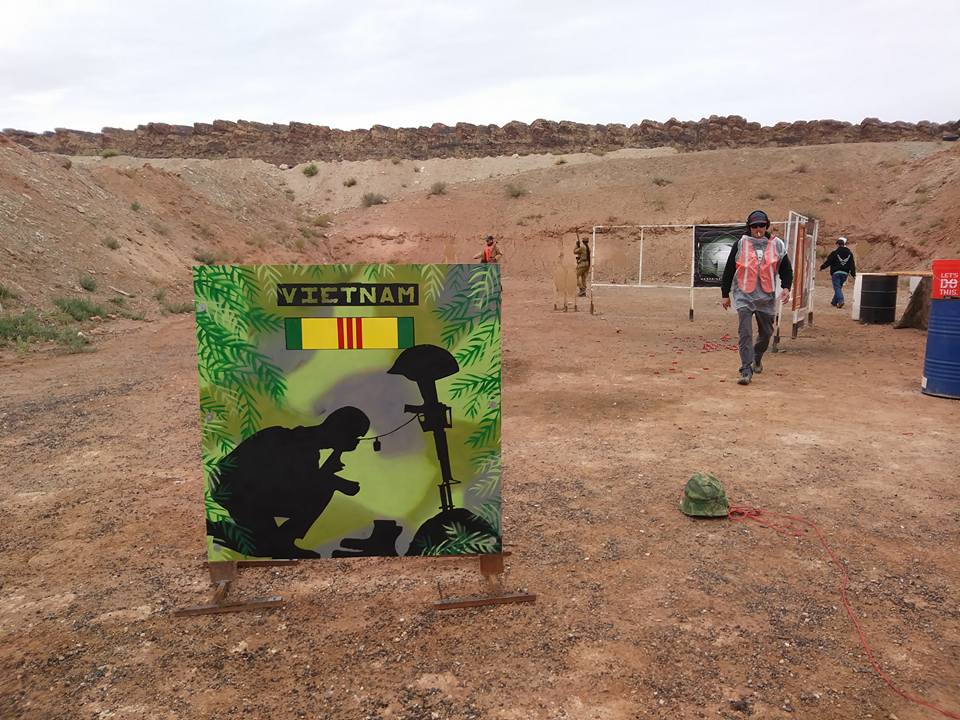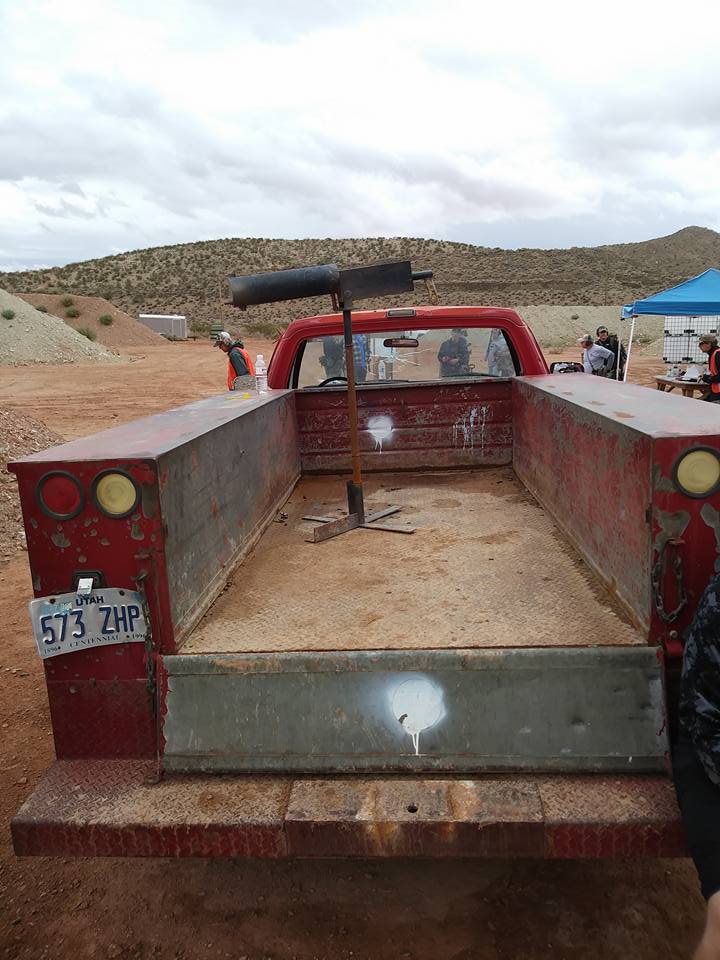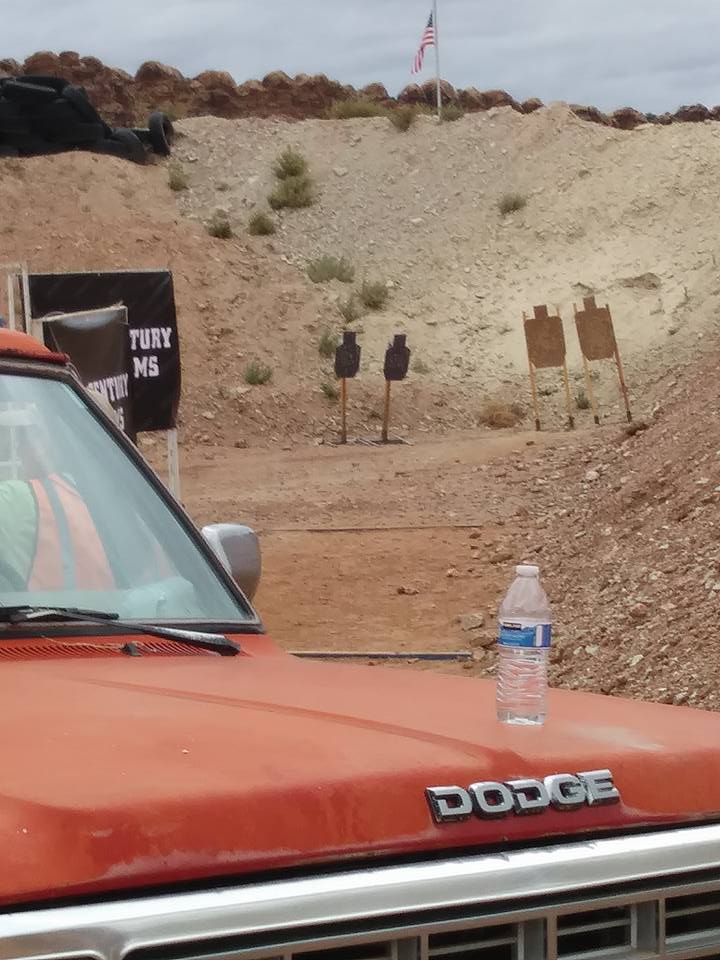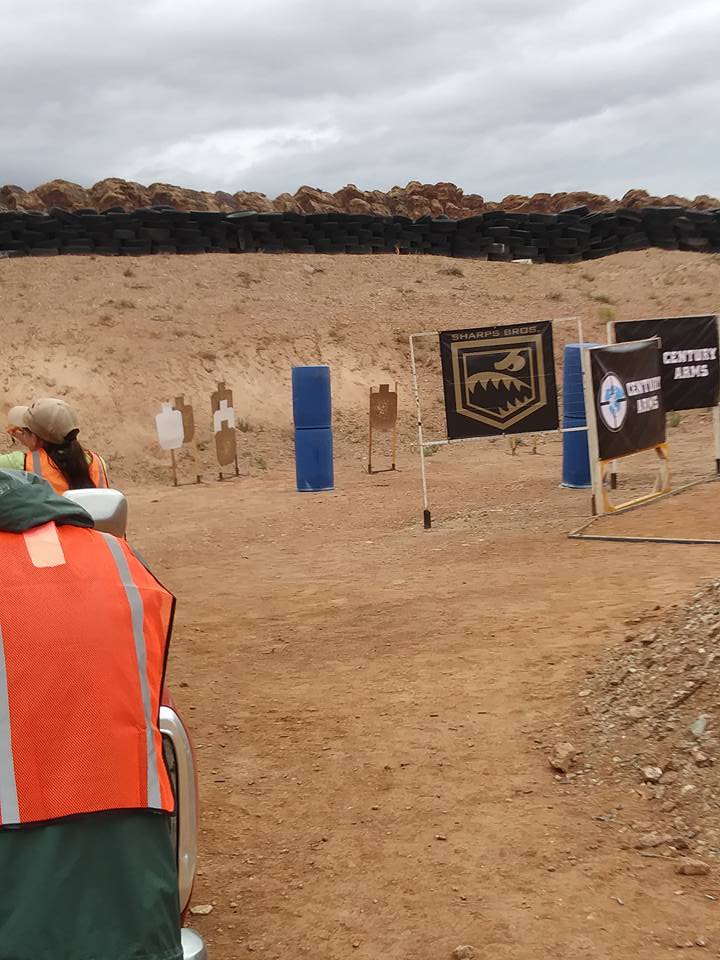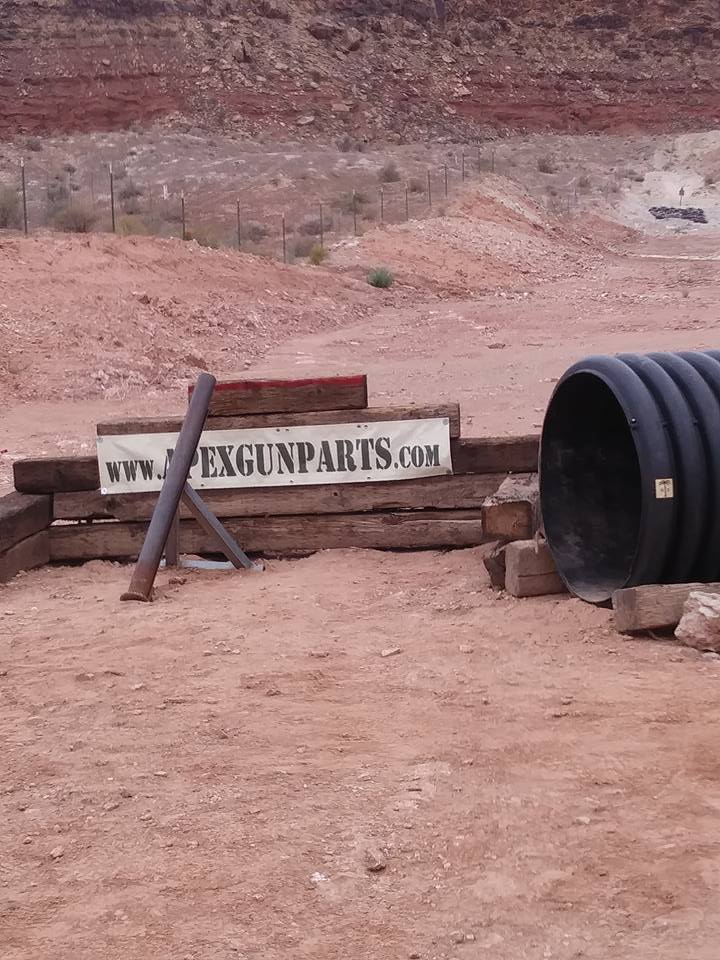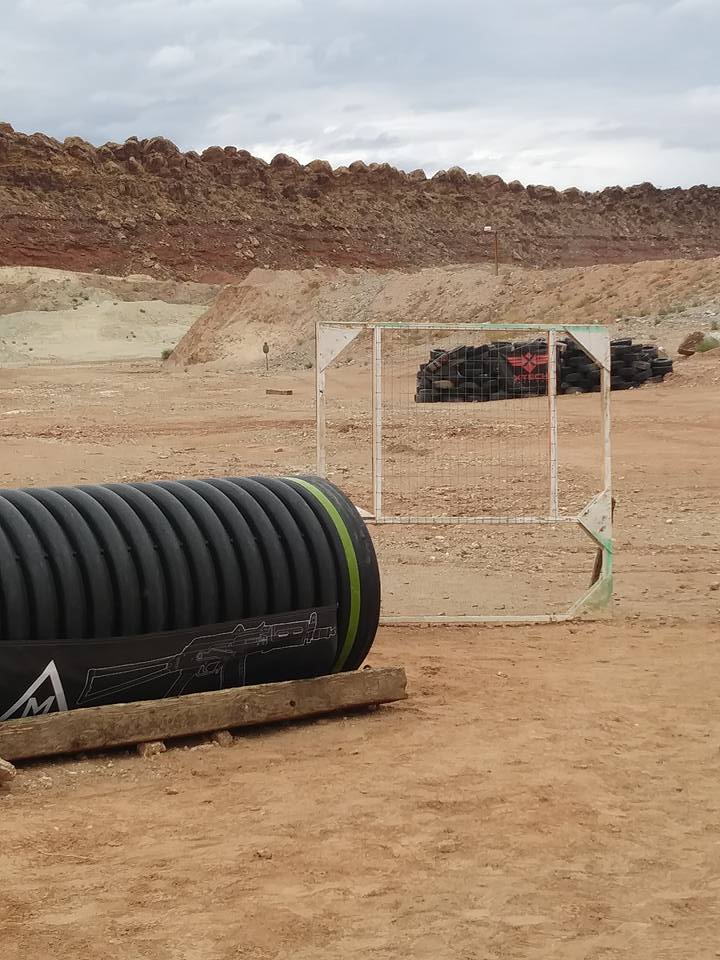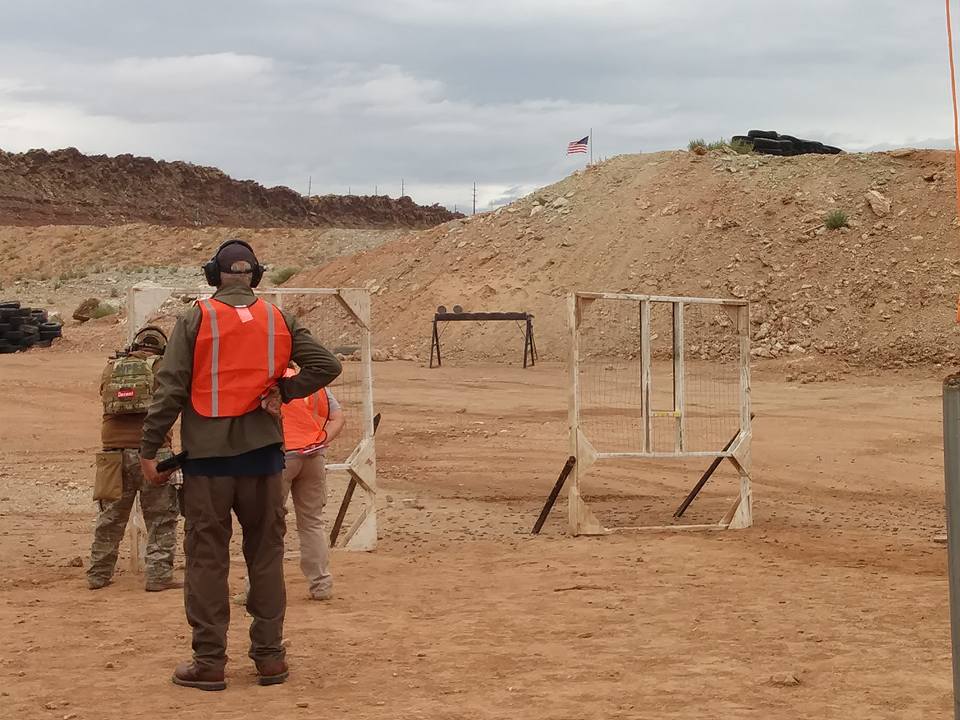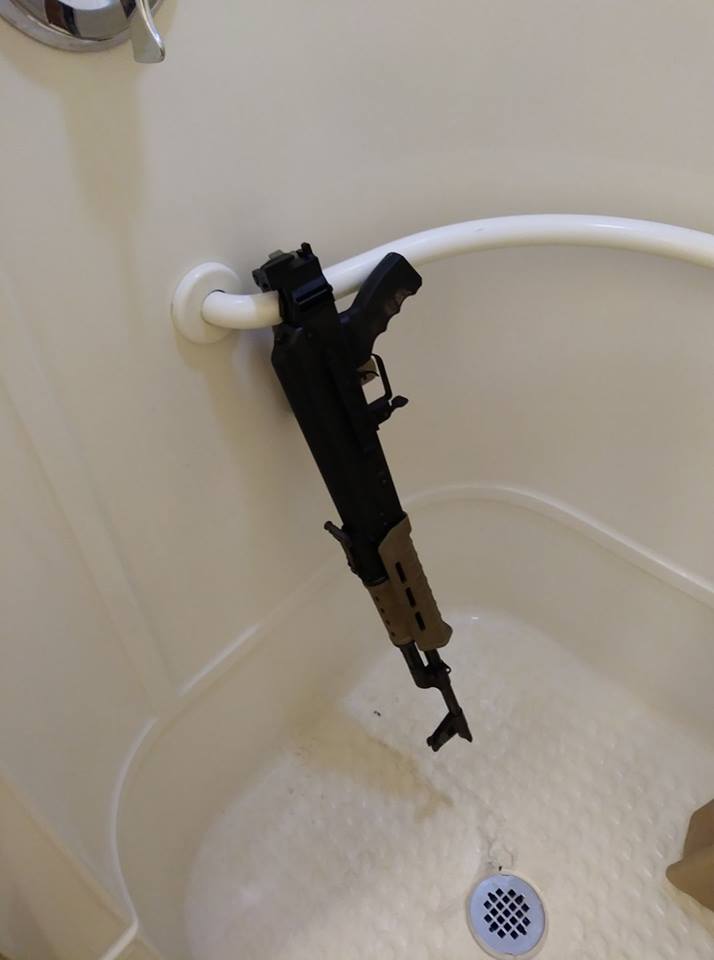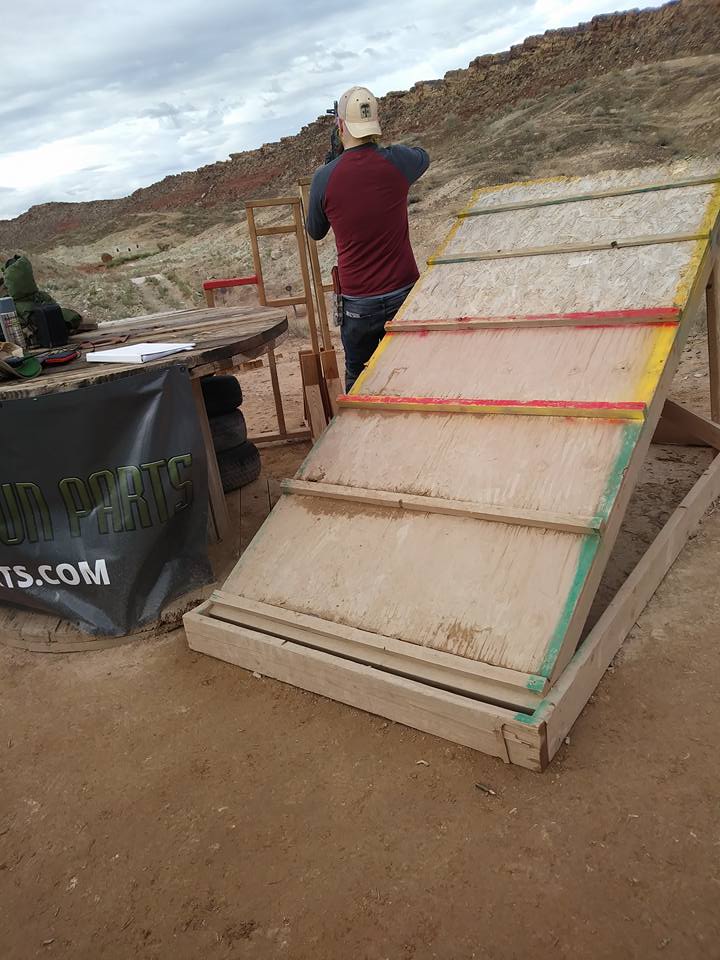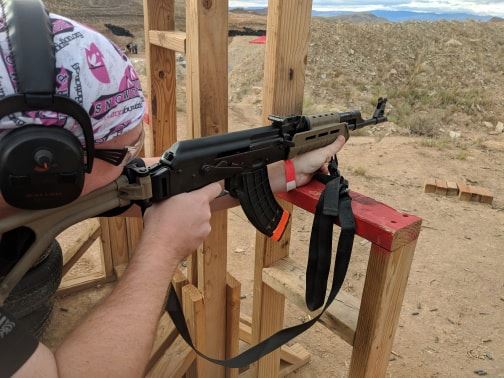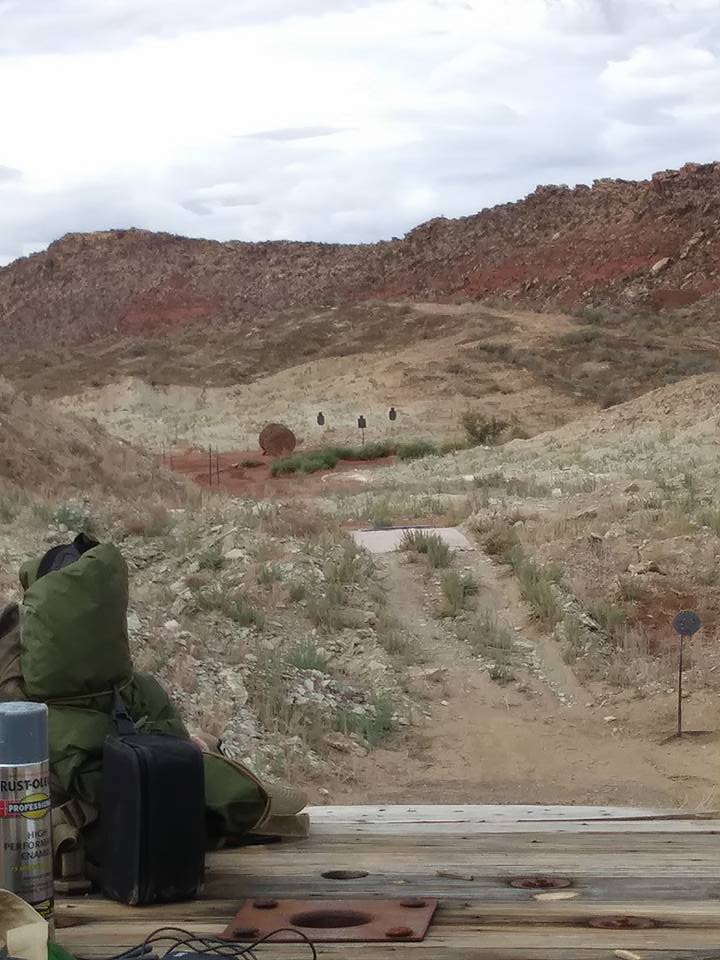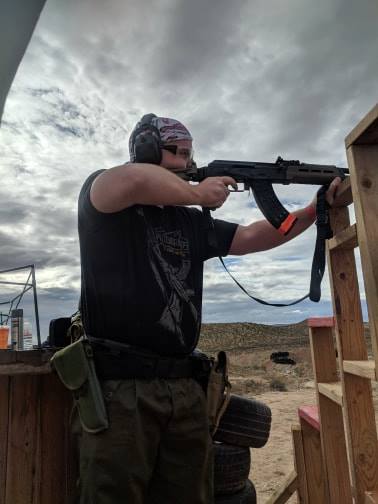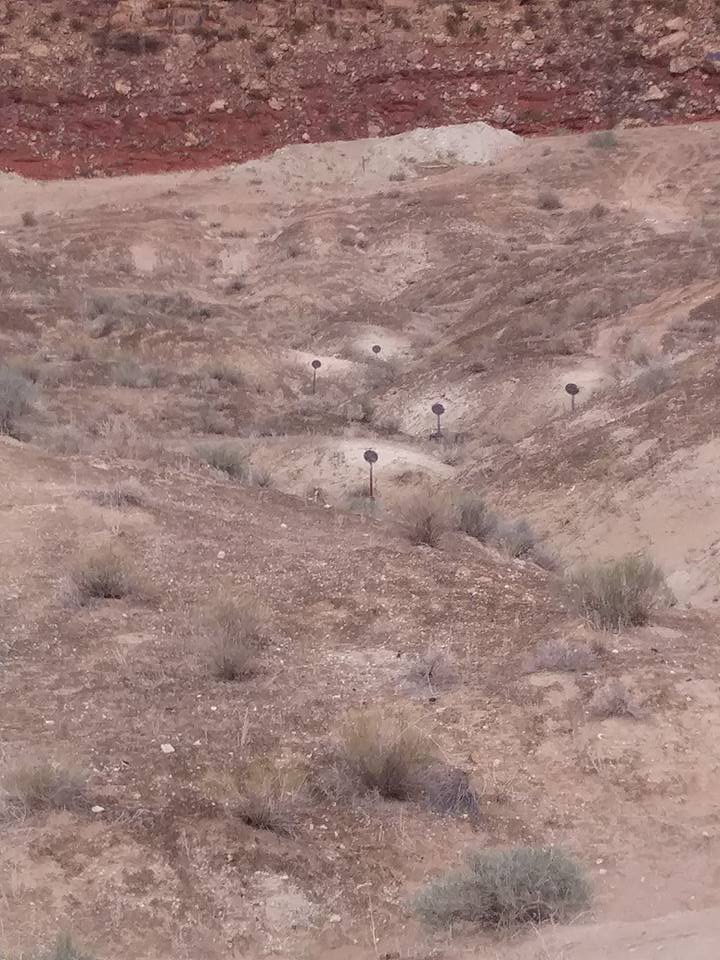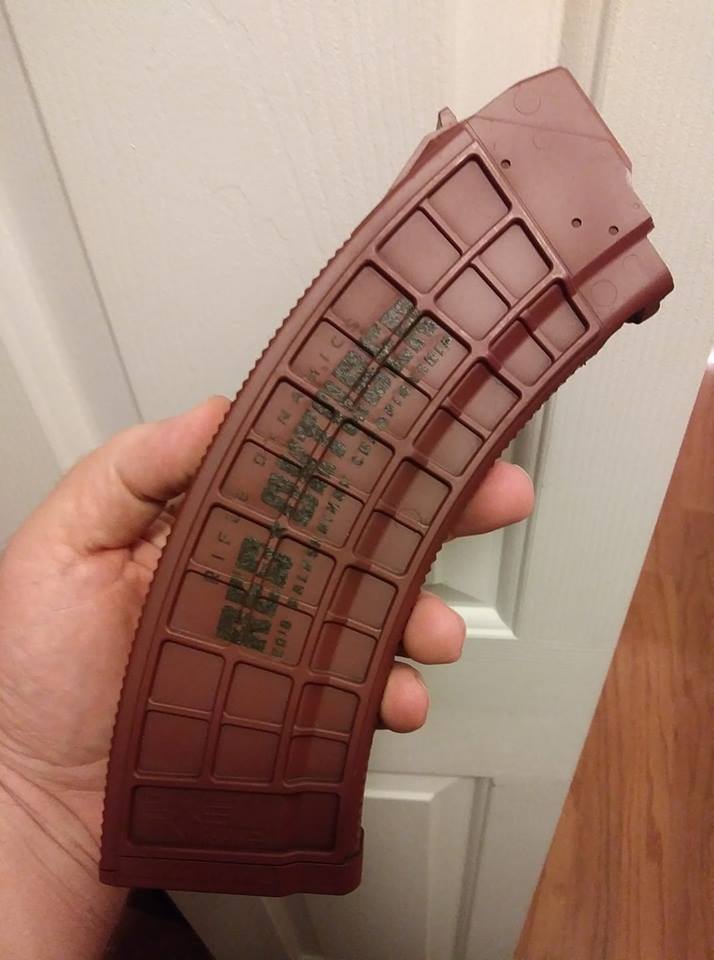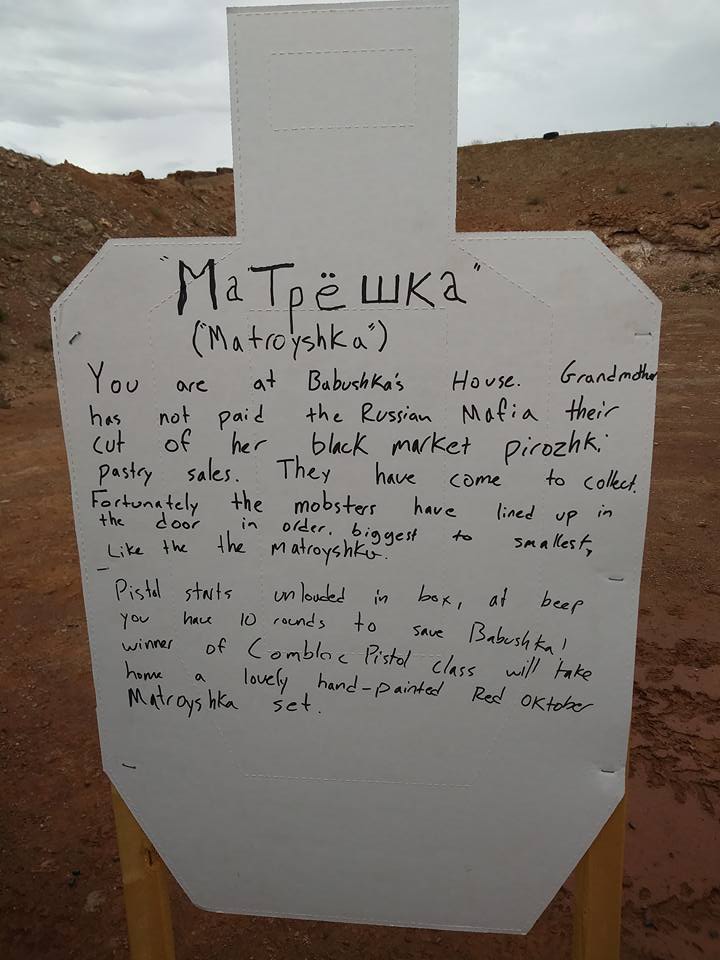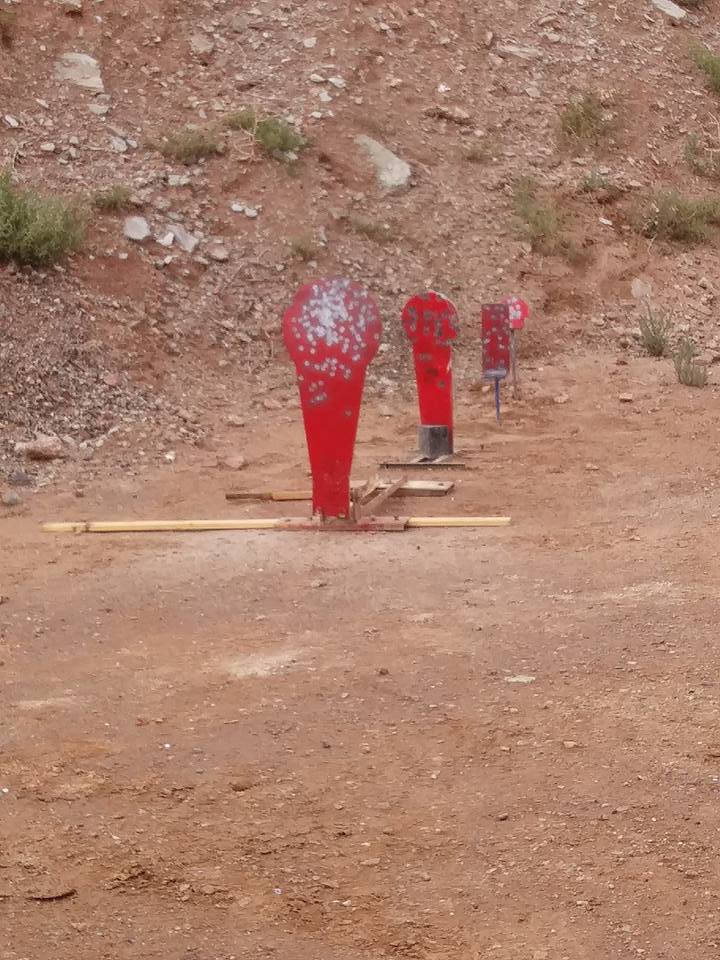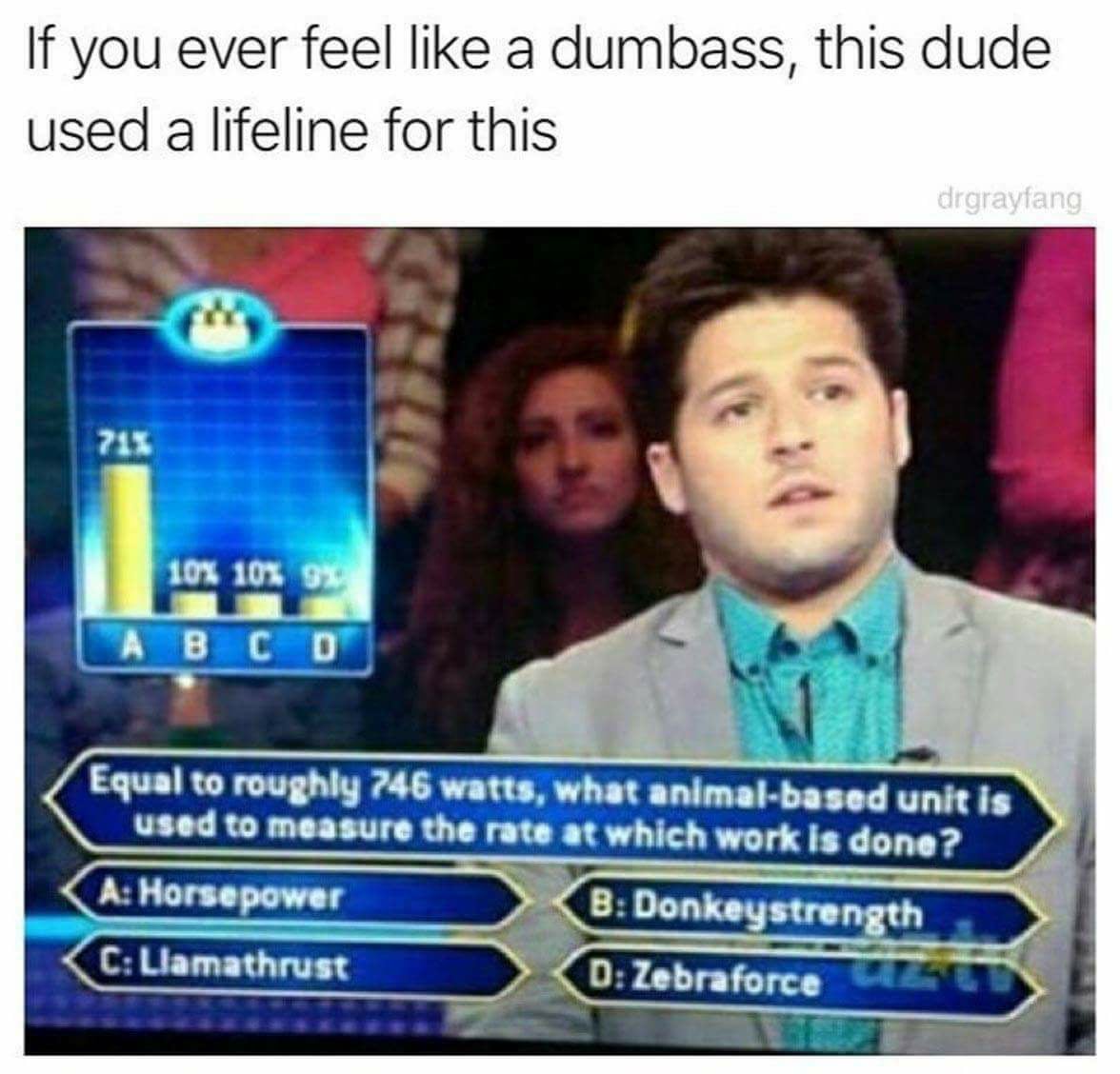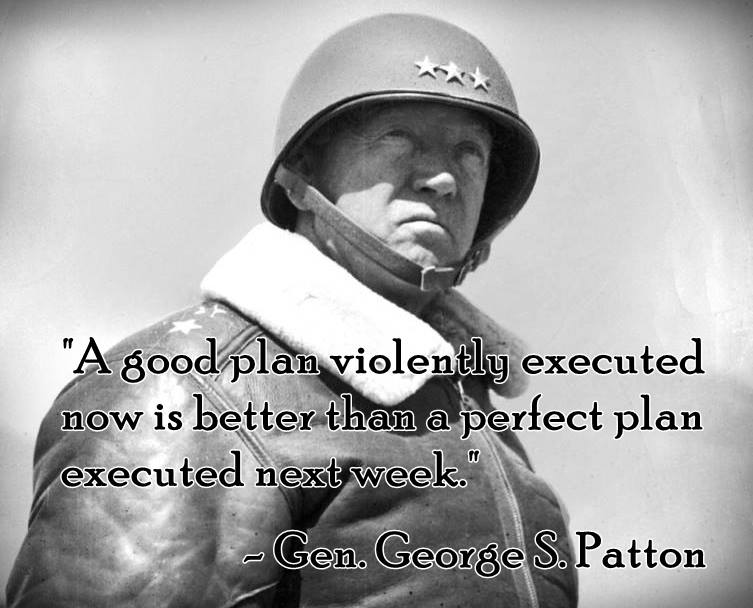When I heard that InRange TV was putting on a bigger, badder version of the 2 Gun Action Challenge Match, I was on board instantly.
This was the first match that I had to fly to, which it turned out I worried about a lot more than I needed to. The gun case turned up where it was supposed to, ammo that was shipped ahead to a friend nearby was there and correct, all good to go.
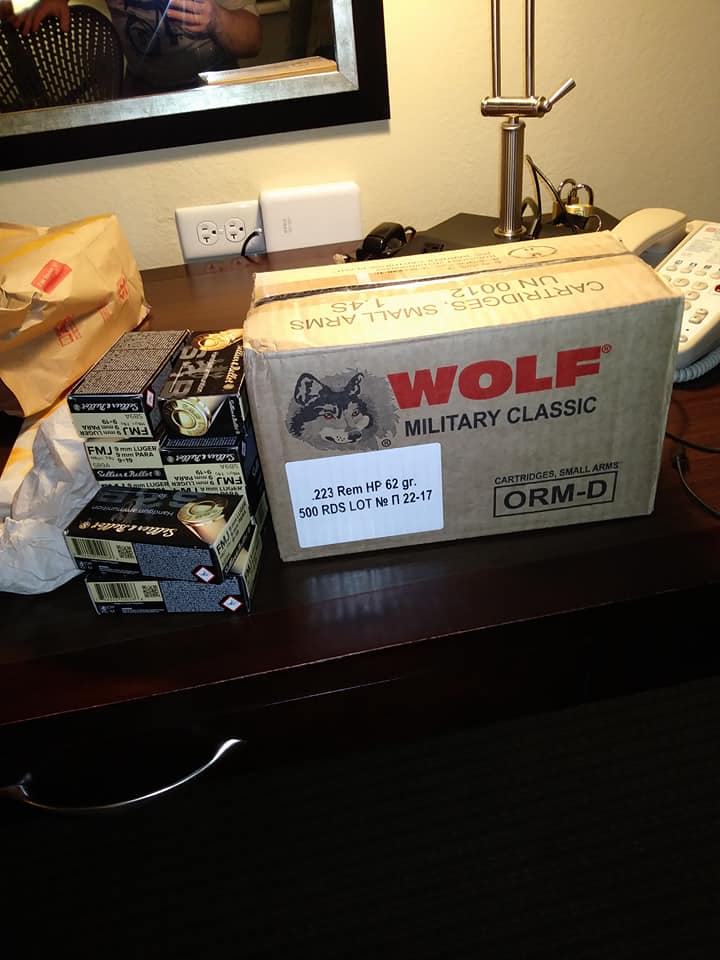
Day 1:
Found check in, found my squadmates, had the safety briefing and match overview. The only thing unusual was the penalty system: every penalty, miss, failure to engage, procedural, whatever, was 60 seconds, the logic being that in any form of military or law enforcement action, an errant bullet or an opponent not stopped is a huge issue, so put a big penalty on all of it.
First stage (officially Stage 2, as I was on Squad 2) was referred to as “Suicide Sprints.”
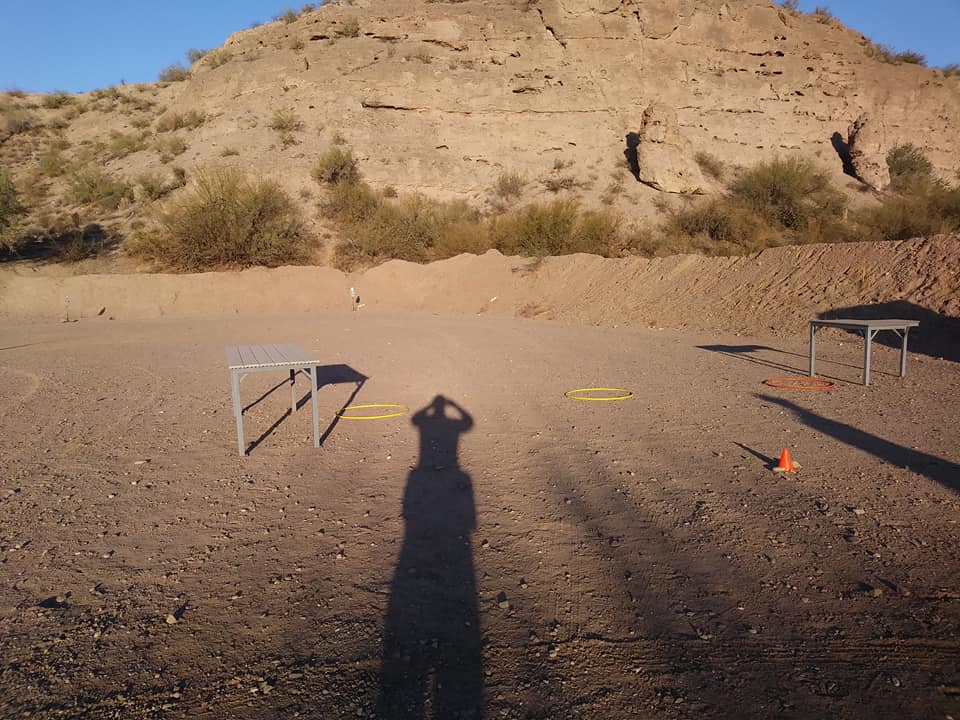
Start at the cone, rifle in low ready, pistol in holster. At start, run to one of the hula hoops, engage two steel targets with two hits each. Move to the next hoop, engage again, next hoop, do it again. After you shoot from the third hoop, put the rifle on the table and run around a berm to the next bay.
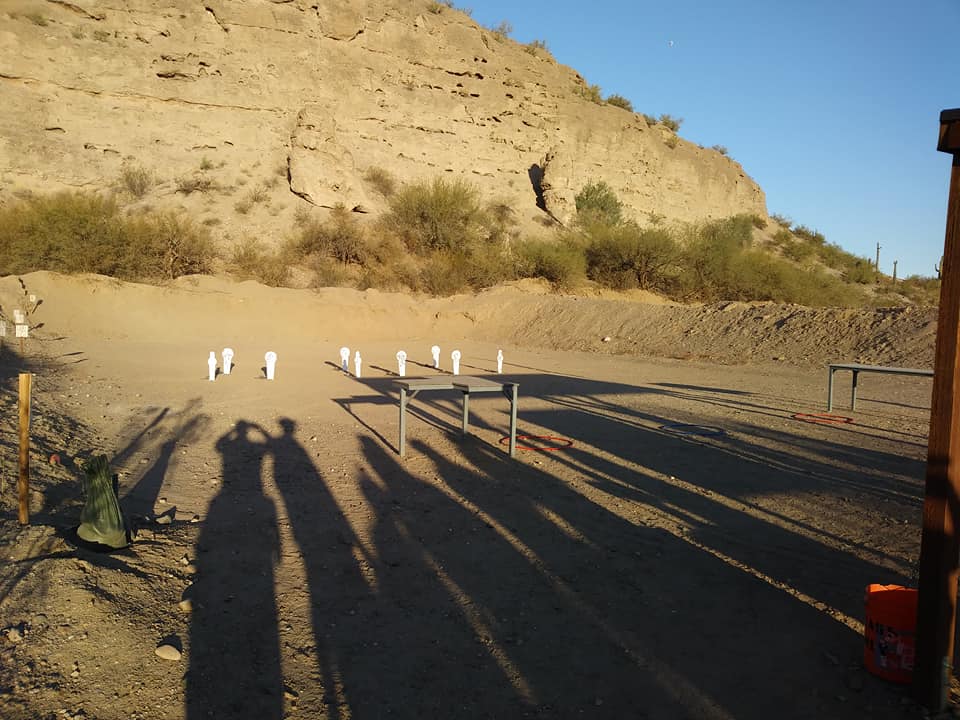
With the pistol, knock down one steel target from each of the three hoops, then table the pistol and run back to the rifle bay. Repeat this back-and-forth until all the pistol targets are knocked down (three cycles for 9 targets), then complete the rifle side one more time.
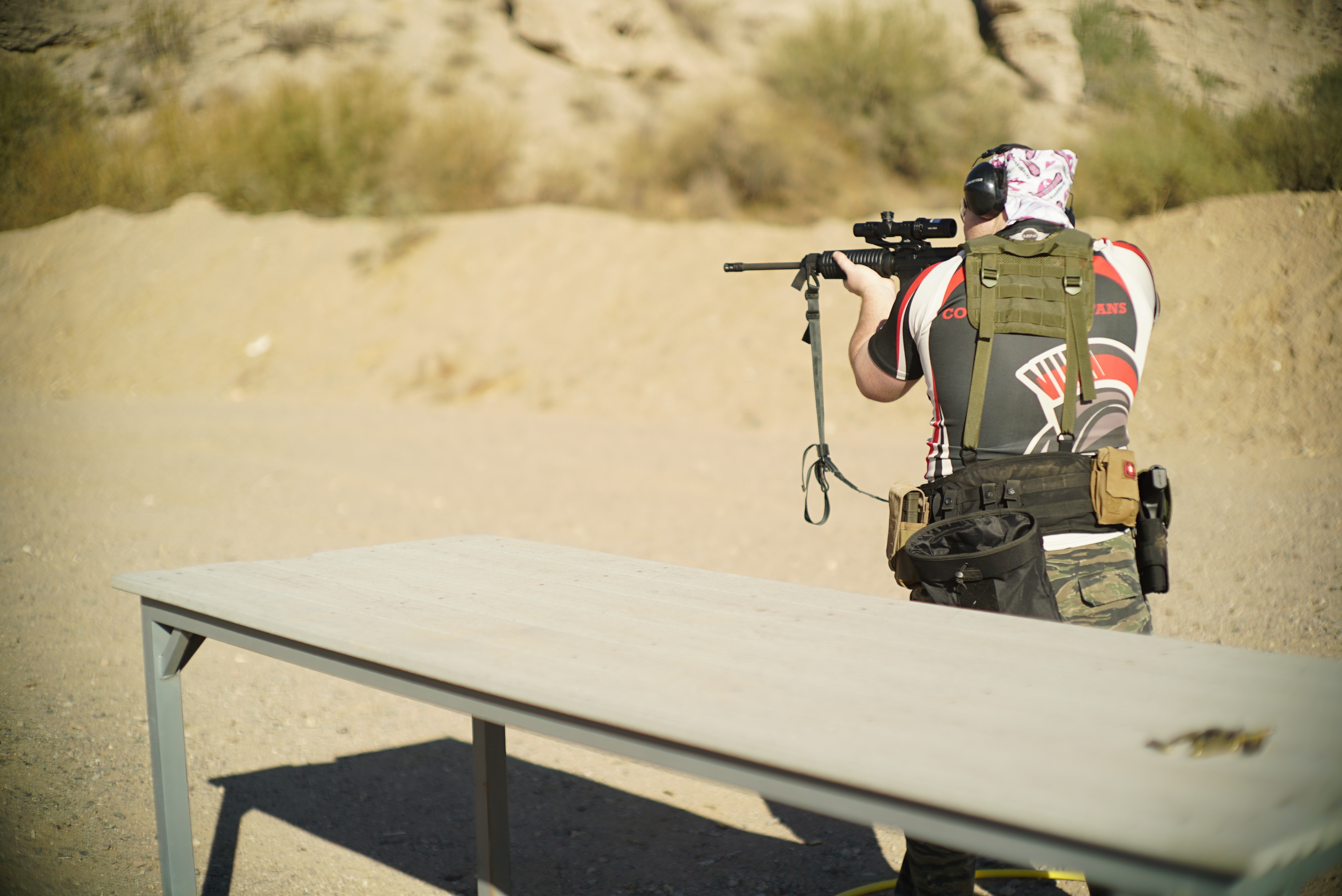
For me, this was the perfect stage to get started on and get the nervousness out of my system. I shot it reasonably well, for me, completing it with no reload in the pistol and needing one round out of a reload on the rifle.
Stage 3 was a lot of fun. Start in the driver’s seat of a car, pistol in holster and rifle in the trunk.
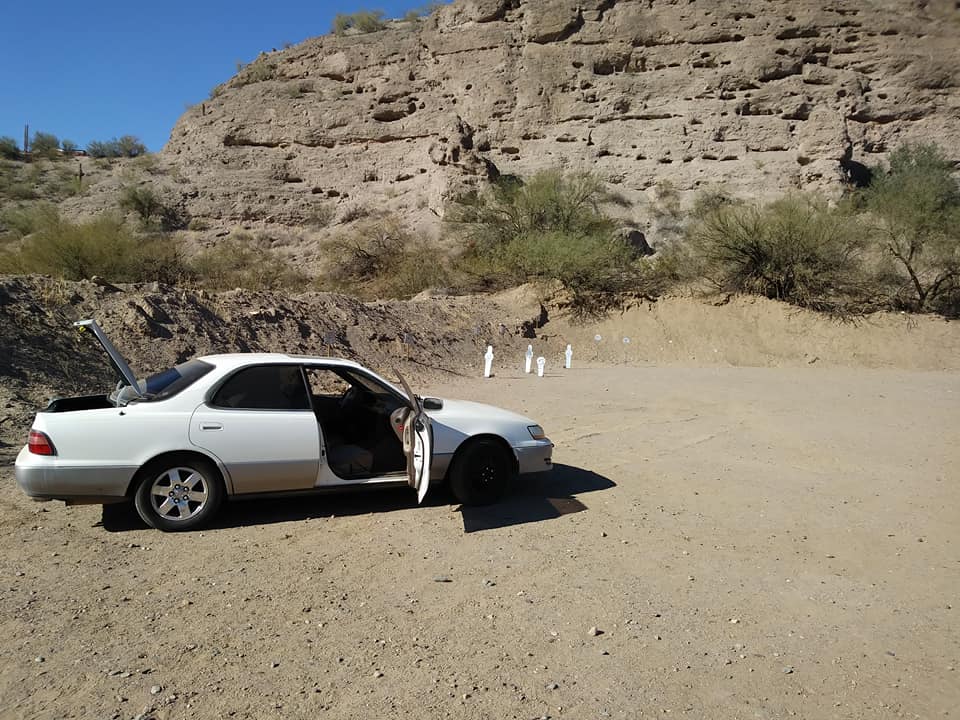
At start engage steel targets through the window.
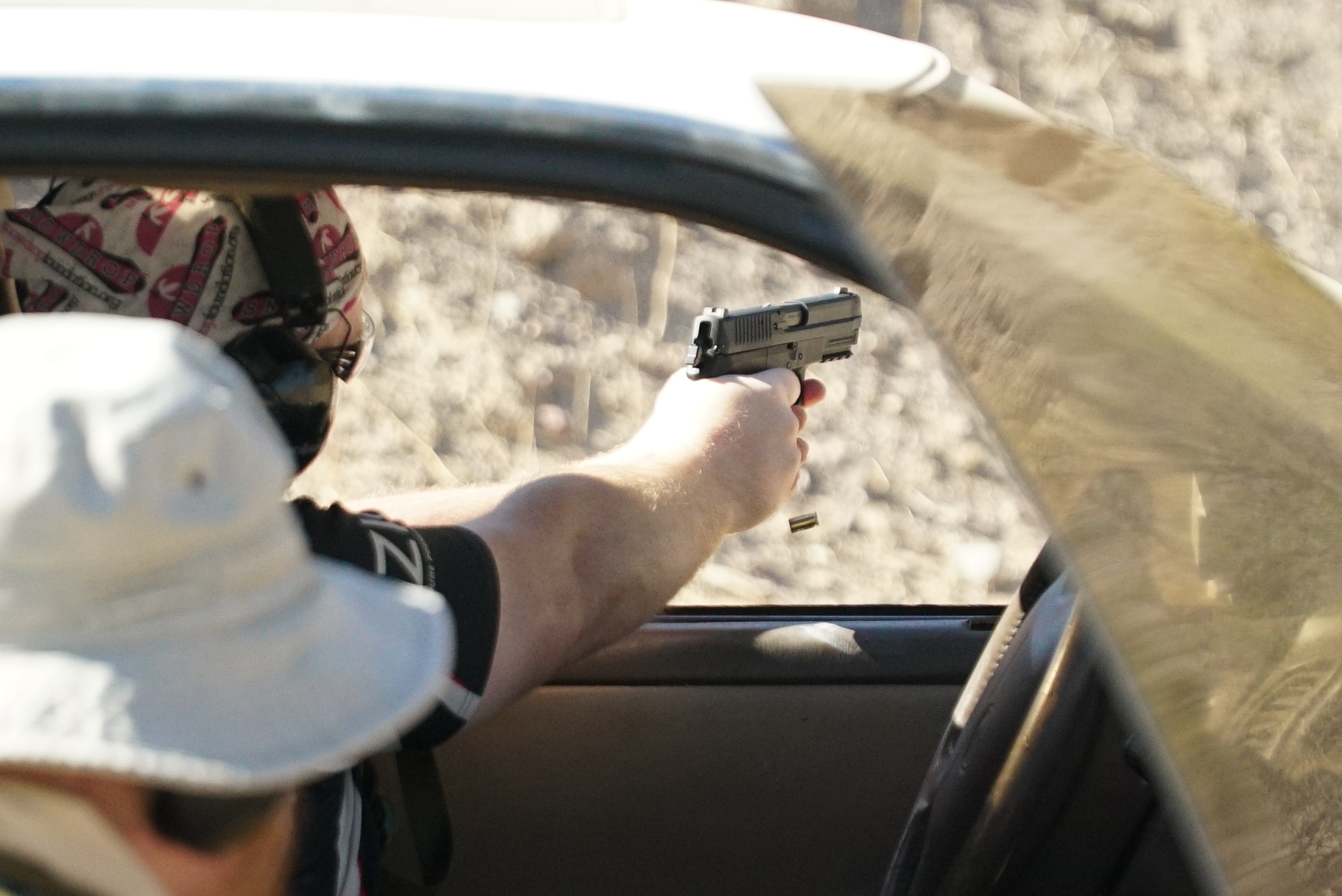
When all targets are engaged, run across the bay to a firing position behind a fence, and engage targets through a hole in the fence.
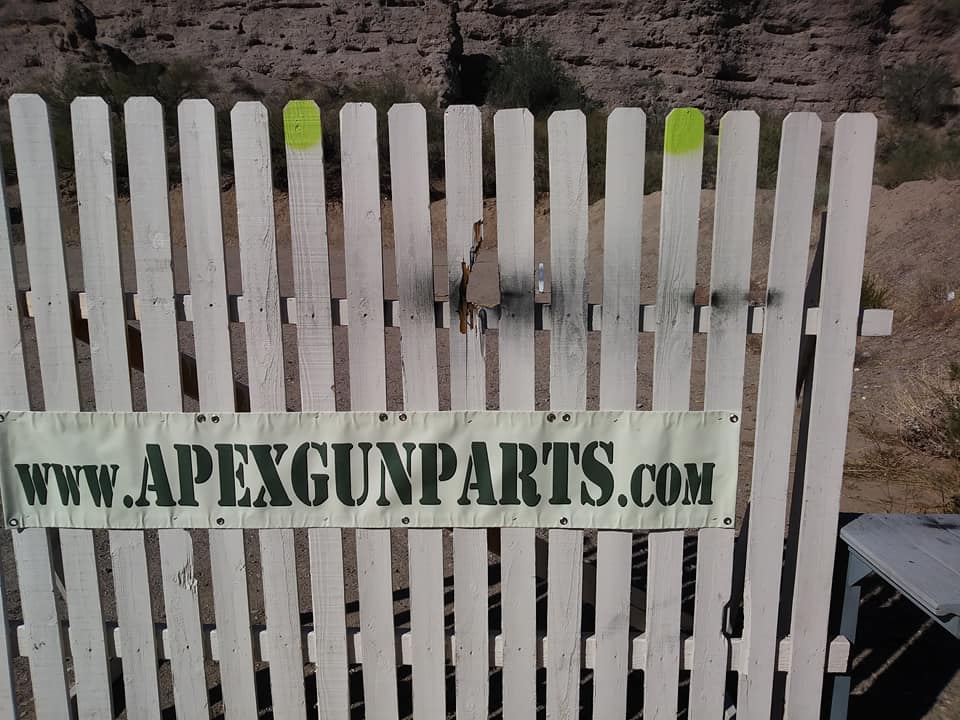
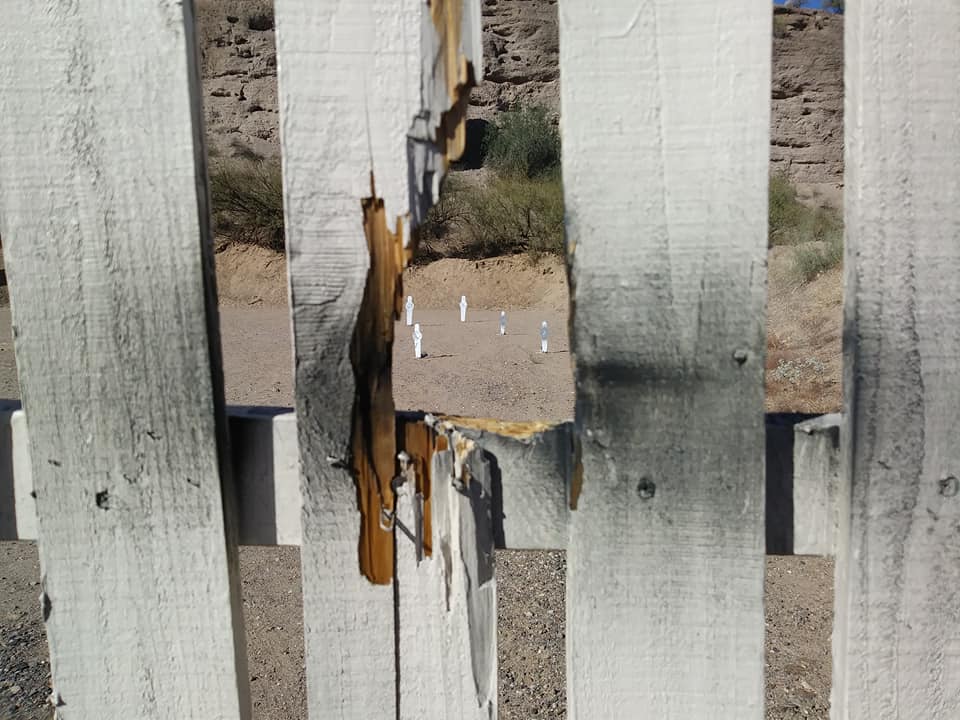
When that is done, run back to the car, retrieve your rifle, and run to the next bay.
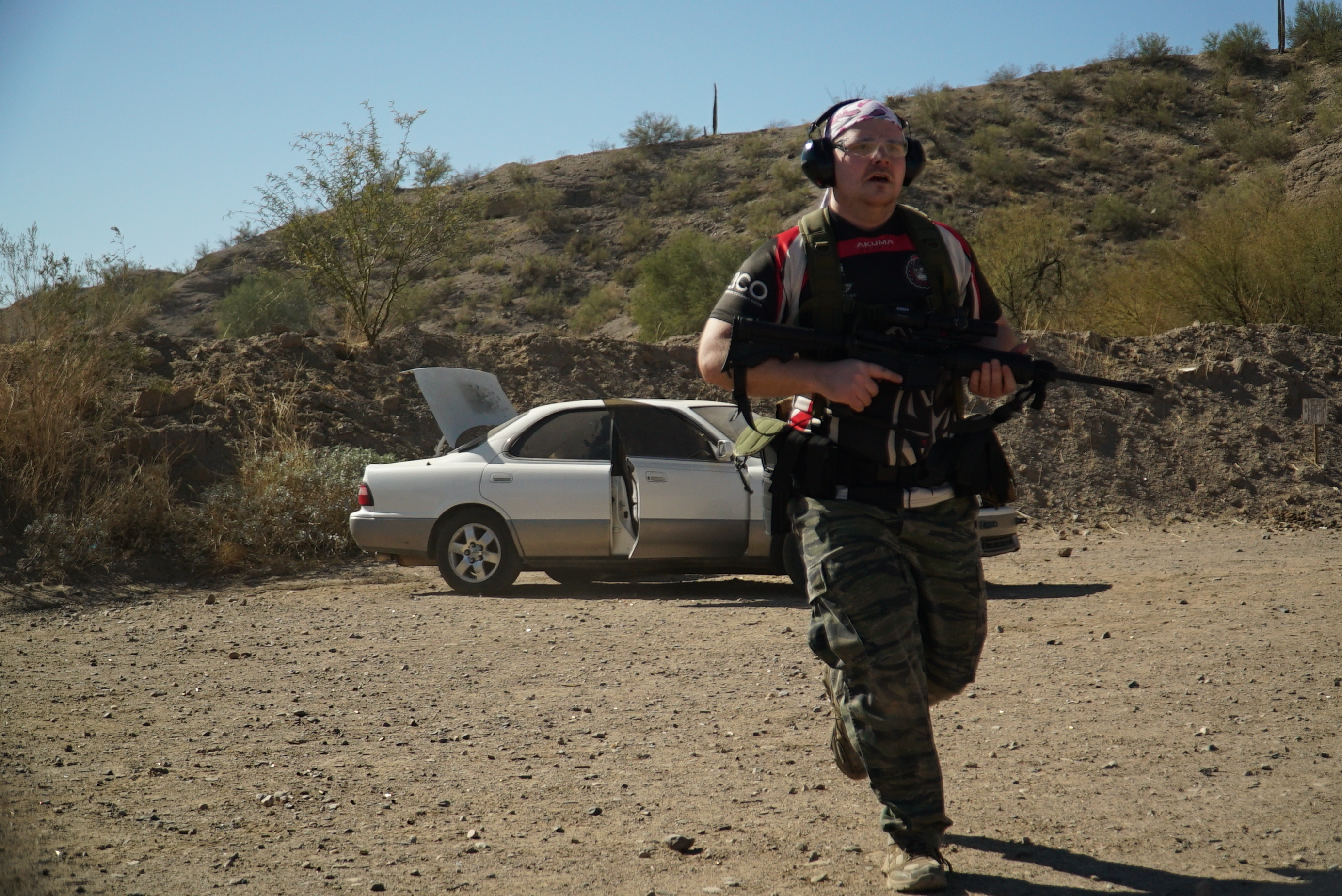
At the next bay, start at the first hula hoop, engage two steel targets, table the rifle, and crawl under the table. Grab your rifle, go to the second hoop, engage targets again, table rifle, go over a 4′ high wall, shoot again, table the rifle, under the table, shoot again… then repeat the over-under shooting process going back to the first hoop. (I did not get a photo showing the first table, this shot shows the wall and second table.)
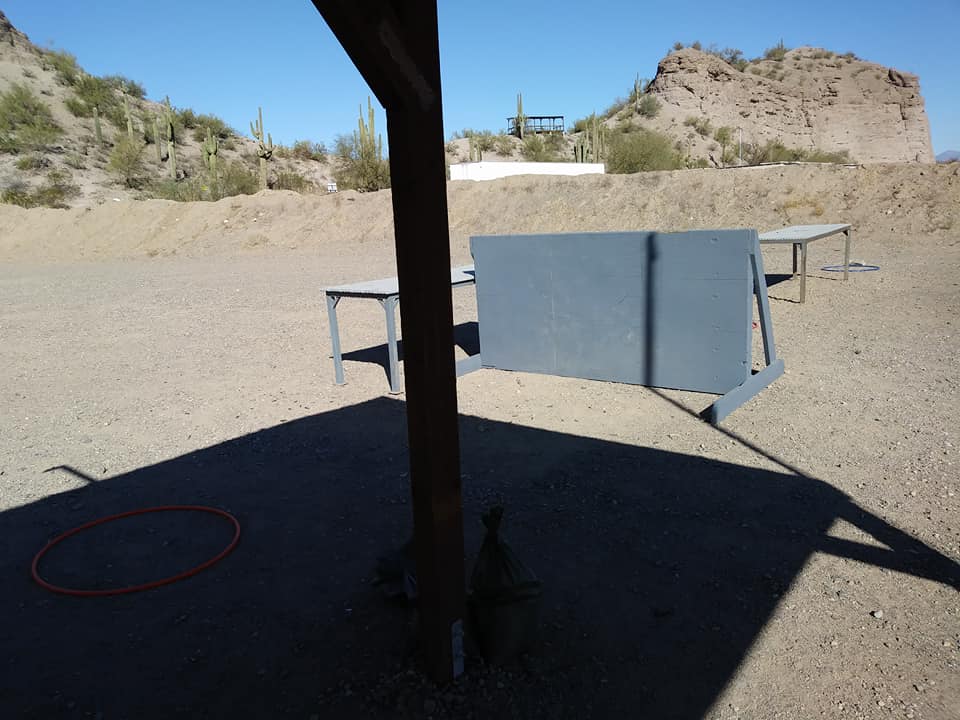
The range officer on this stage noted that many people were taking so long with the pistol portion that they had no time for the rifle portion. With the rifle being considerably more fun, I decided to limit myself to one mag from the car, one mag from the fence, then leave anything that you have not hit and move on. I took 4 minutes in penalties, but I completed the stage.
For me, Stage 4 was both a dumpster fire and a chance to learn to improvise and make things work. Targets at this stage were at longer range, far enough for me to notice that my rifle’s scope had been knocked out of zero in transport.
The stage starts with you lying on your back on a table, rifle, pistol, and all your mags staged about 20 feet away. At start, you collect your ammo, grab your pistol from a table, engage four knock-down targets, and drop your pistol in a bucket. Then load your rifle and engage two steel from behind a barrier.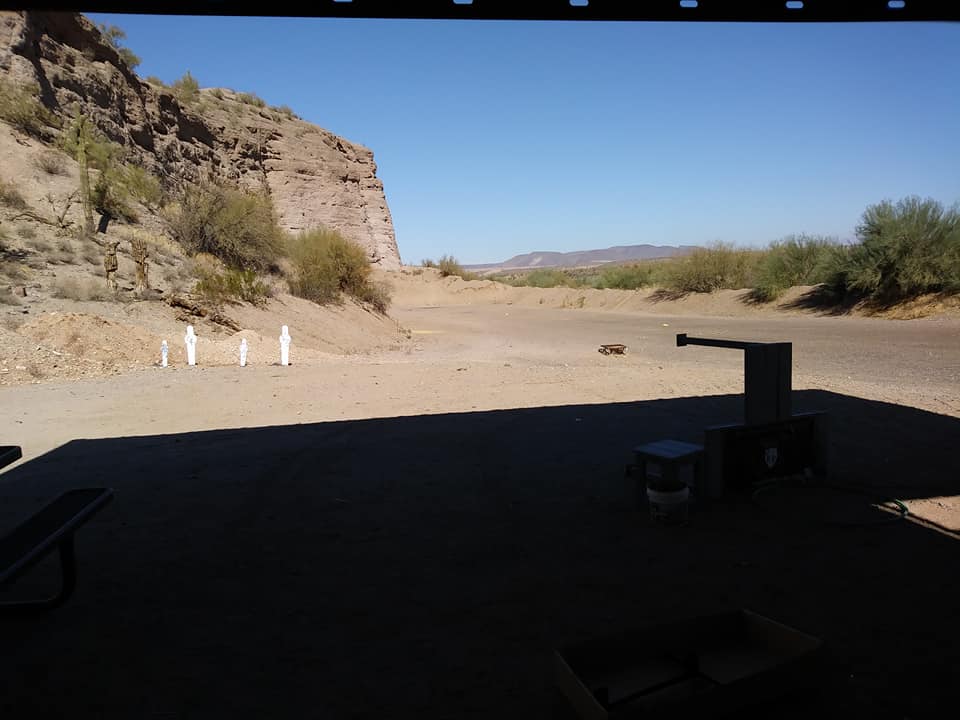
Then run downrange to a steel sled, engage the targets again from the sled, clear the rifle, and drag the sled back to the start point. Then run to a pile of rocks helpfully painted yellow: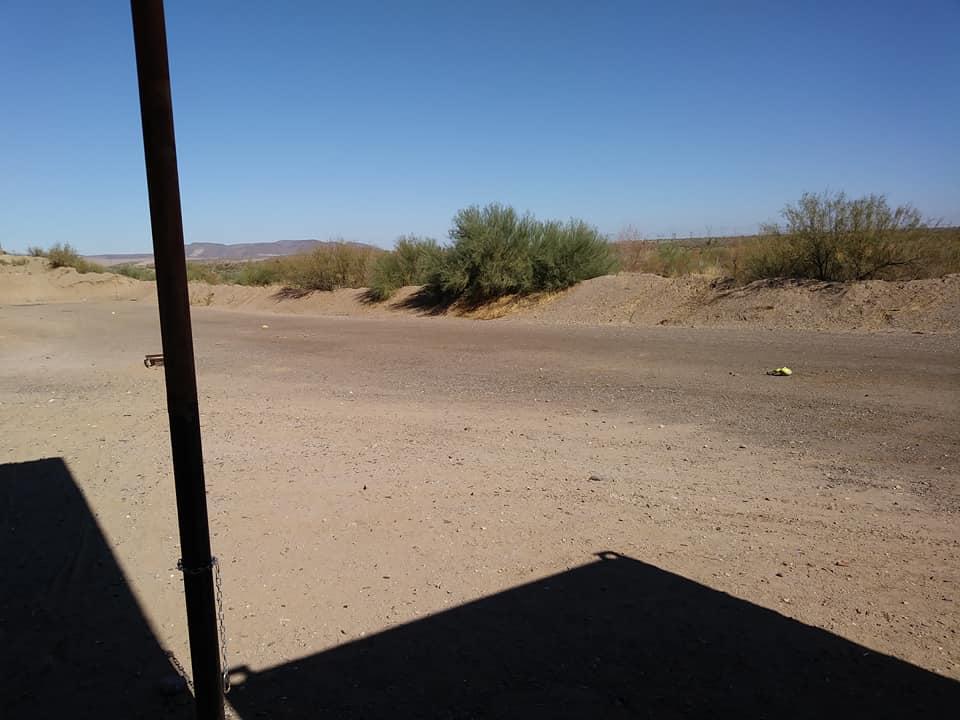
Engage targets, run to the next pile of rocks, engage targets, run to the last pile, and from there engage the ever-dreaded MGM spinner.
About the time that I got to the first pile of rocks, I figured out where I was hitting and how far to hold off to make hits. I managed to complete the spinner holding off the target, something I would not have thought that I could do if you asked me before this. My time sucked for this stage, but I am still happy that I managed to get through it.
Stage 1, our last stage of the day, was a variation of the Kasarda drill with a 65-pound kettlebell. Start in the cab of a pickup truck, engage two steel targets, table the rifle, and climb into the bed of the truck. Cut the rope holding the kettlebell to the truck, and throw it out the back. 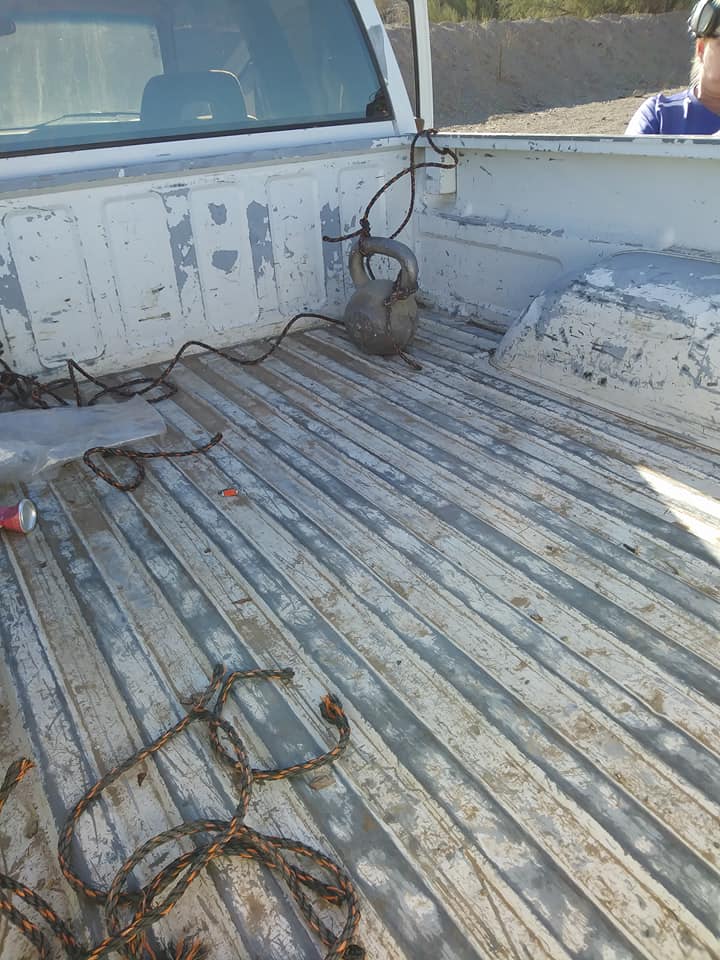
Retrieve your rifle, run to where the kettlebell landed, go prone, and shoot the targets again. There is a row of cones leading you closer to the target: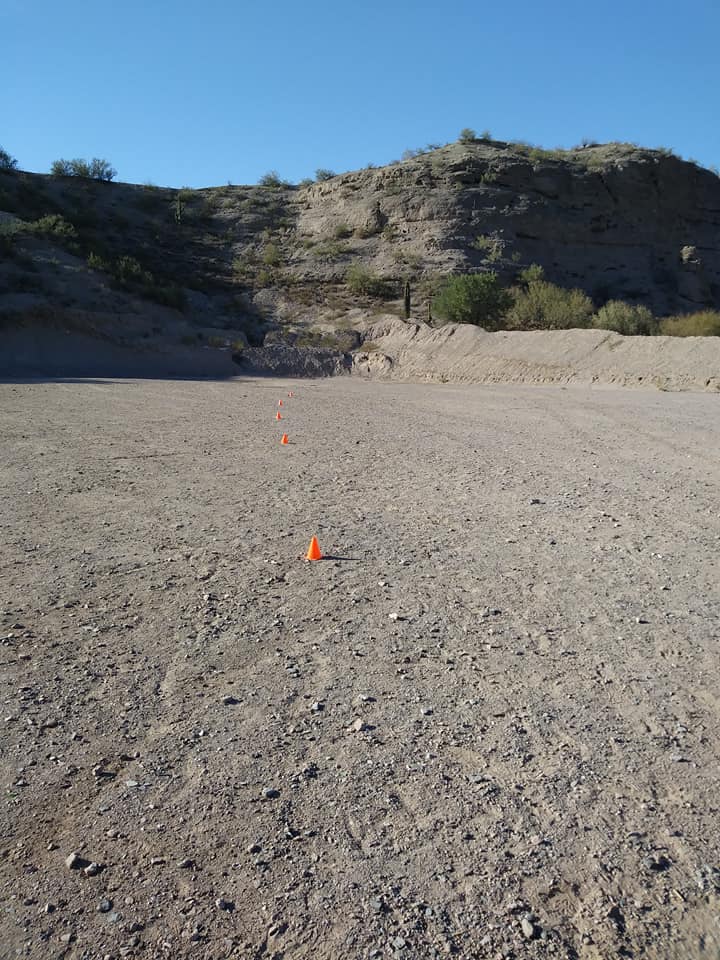
Following the cones as much as possible, throw the kettlebell, run to it, go prone, shoot both targets, get up, throw it again. Throw the bell past the last cone, make 2 more hits from the last cone, and you’re done. (Last shots are made from the cone rather than the kettlebell because a really good last throw could take you to less than the minimum distance for steel targets, so the final shooting position is set for safety reasons.)
I rocked this stage. Still using a holdoff, but hits were consistent and my throws were good. (Quick tip that I learned: many of us will throw and watch to see where it lands. As the RO told us, no need to watch it, it will be there. As soon as it is away, turn your attention to getting your rifle and getting moving. A second watching each throw adds up.)
Day one complete, found a sight-in range to fix my rifle zero, back at it in the morning.
Day 2:
Started the day with Stage 6, the breaching cage.
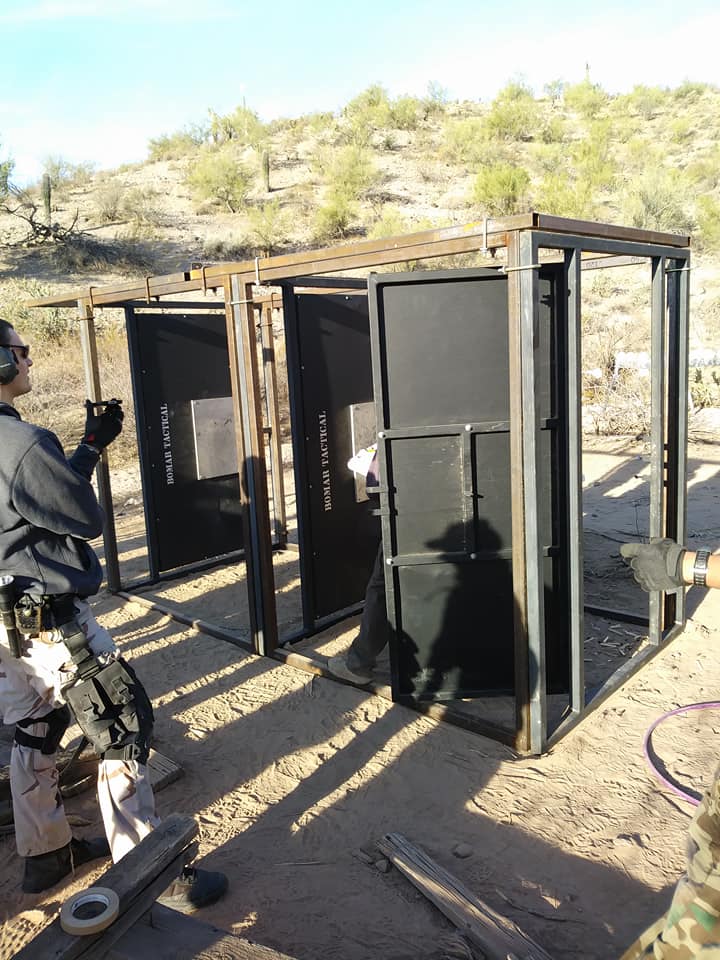
Start in front of the first door, facing four close paper targets and one steel further away.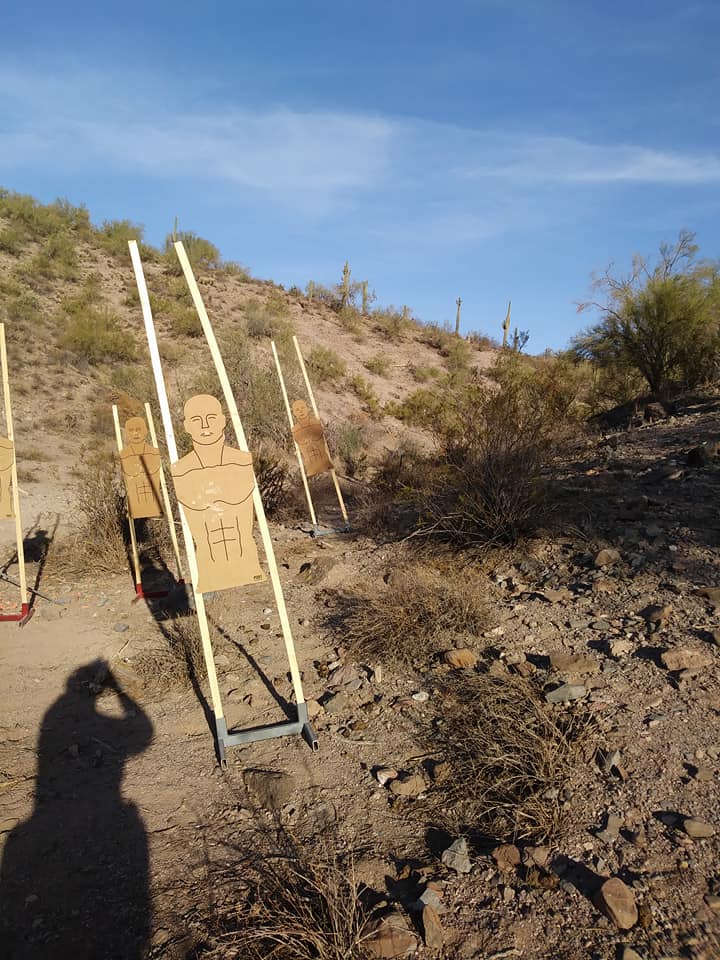
Neutralize one paper target (two hits anywhere or one shot to the center of the head), one hit on the steel, next paper target, another hit on the steel, until all the paper targets are engaged. Clear the rifle, kick in the first door.
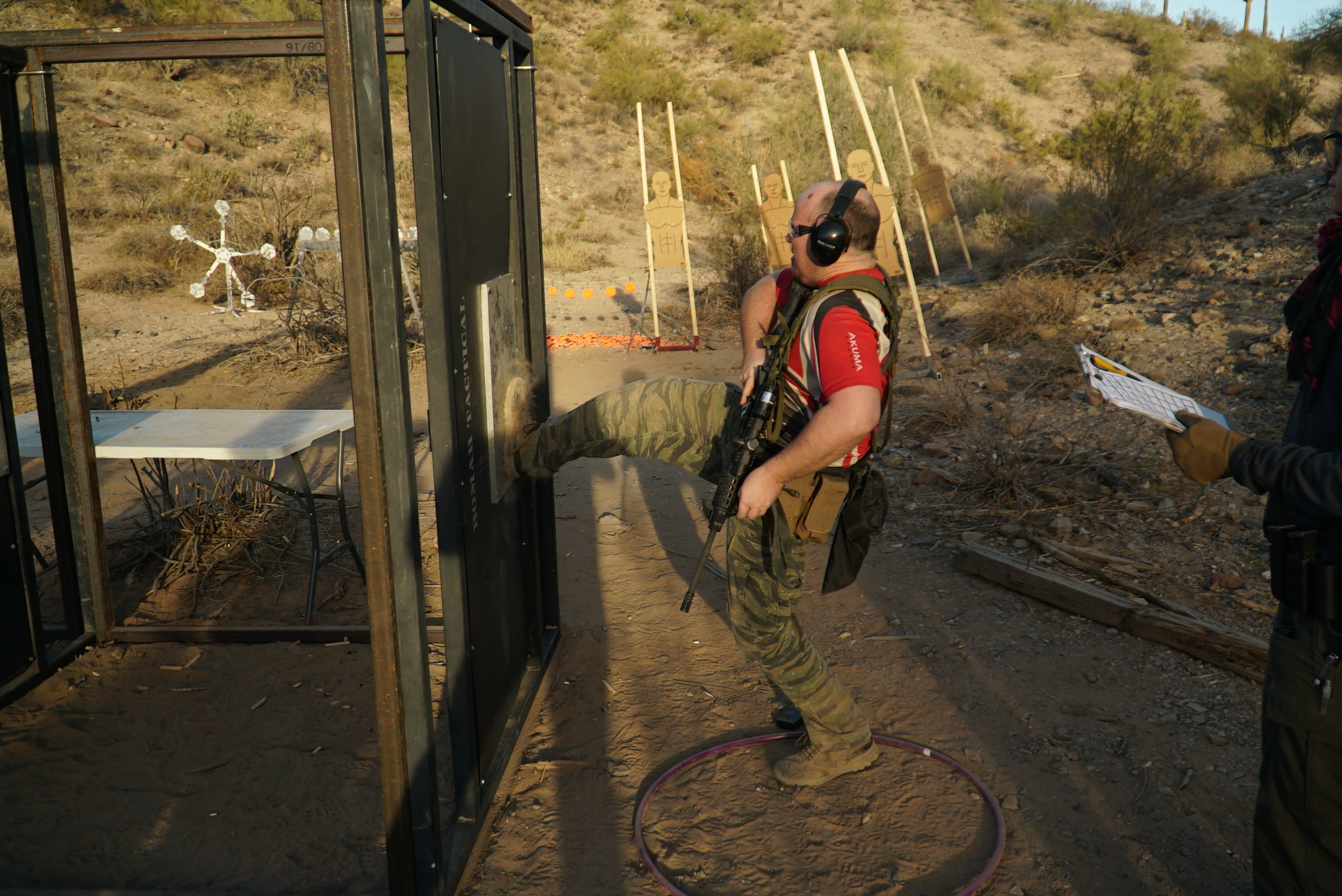
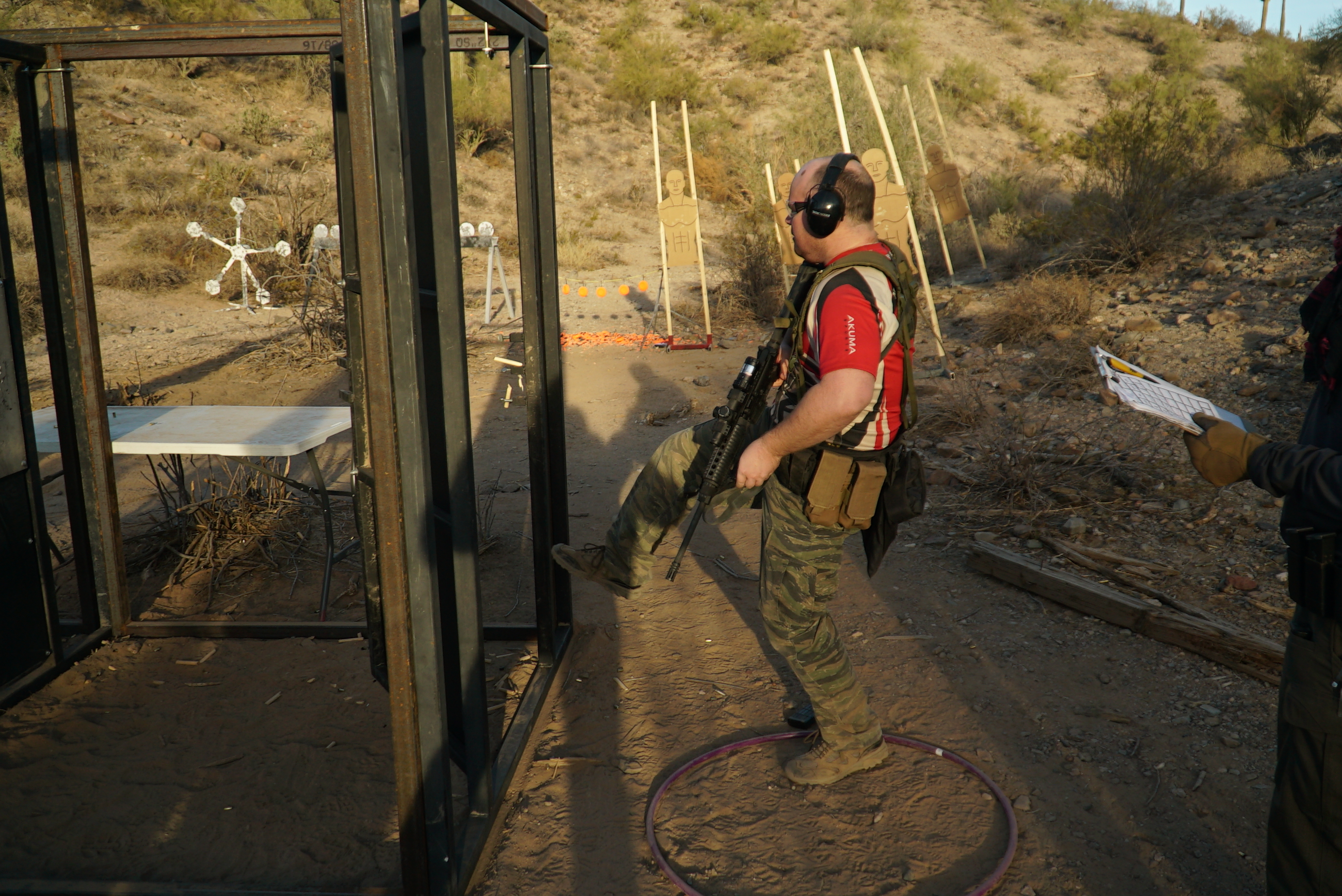
Step through the door, draw your pistol, and shoot 5 clay pigeons hanging from a string.
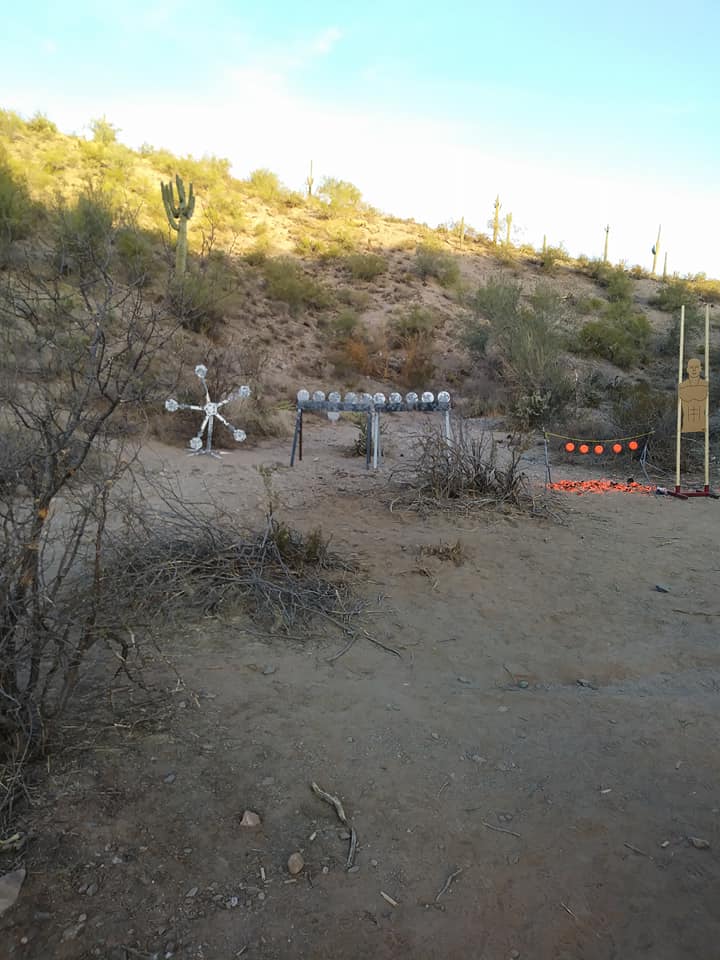
Table the pistol. Kick in the next door, shoot all the targets on the plate rack. Kick in the last door, run to a hoop marking the last firing position, and shoot all of the plates off of the Texas star.
This was a lot of fun. I had one clay pigeon that was hanging turned a little sideways and I couldn’t hit it, so I left it and moved on (better to lose one target than to burn up all my time and ammo that I could use on the easier targets that followed).
Stage 7 was tough. Start running up a steep hill to a sandbag firing position:
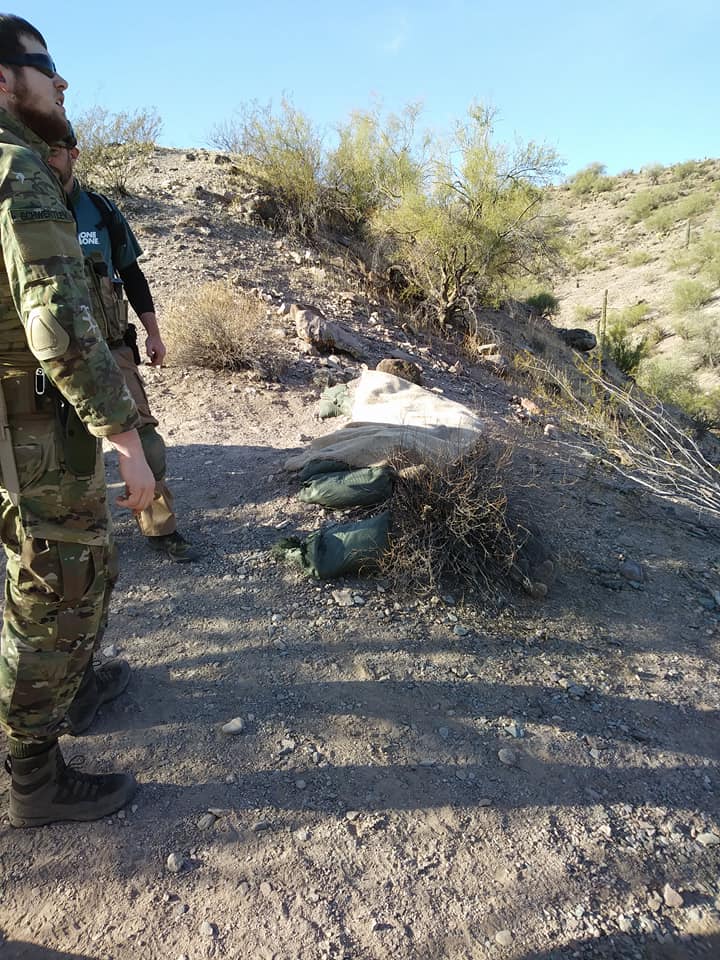
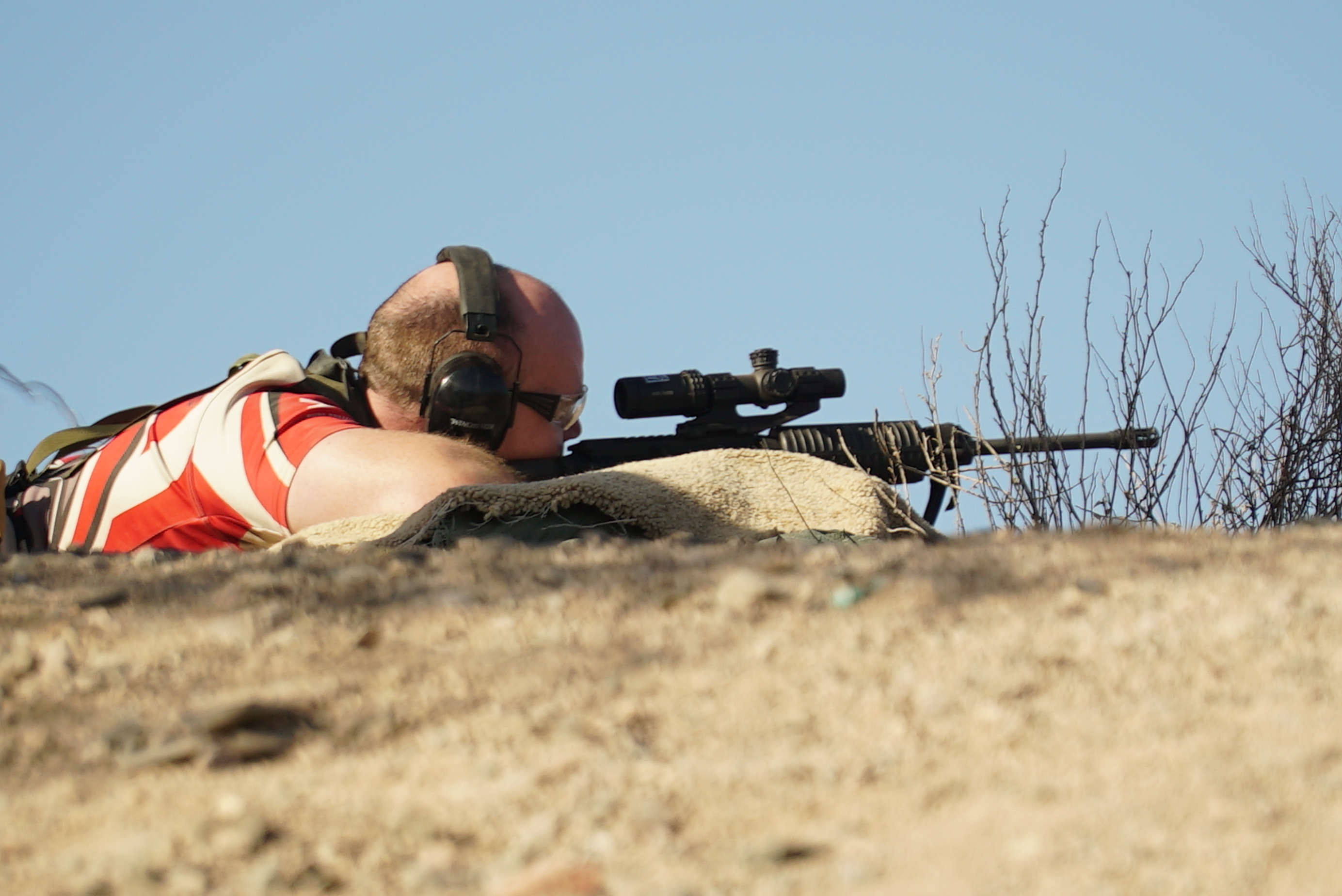
Engage two distant steel targets, 2 hits, next target, 2 hits, next, two cycles through all three targets. If you move to another target before getting 2 hits on the one before it, you need to start over. Then run to the next firing position: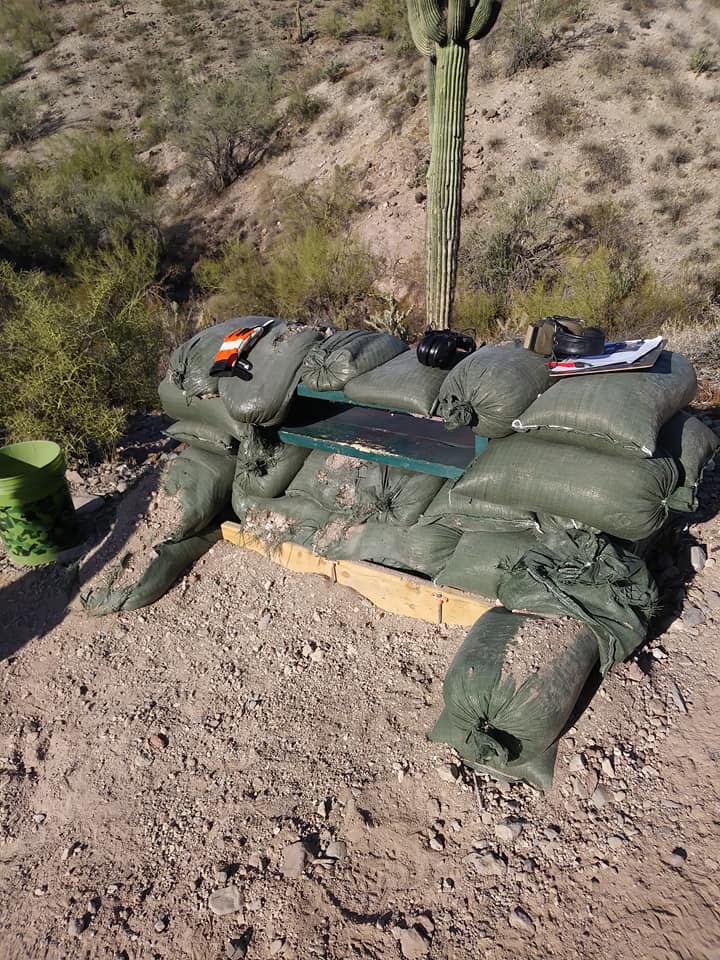
2 hits on 2 targets through the port, then run to shoot off of the barrier and the rooftop: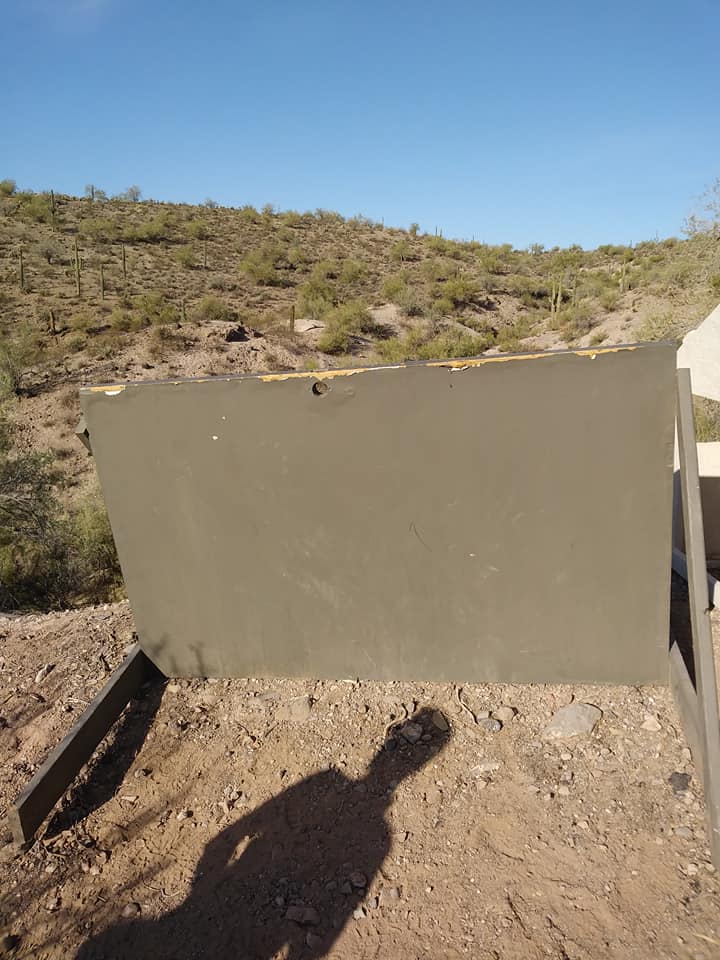
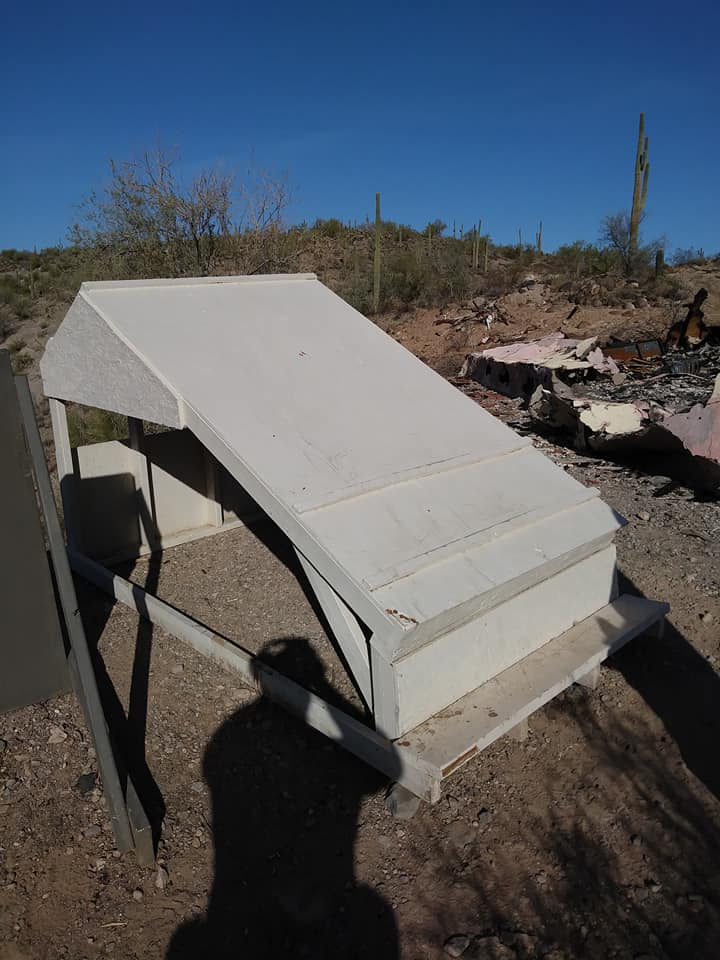
I couldn’t get settled down into a solid shooting position at the first position. I messed up and moved on after one hit and had to restart, and barely made it to the second firing position before timing out. Take notes of what to work on and move on to the next stage.
Stage 8- Mogadishu Quarter-Mile.
Start with one rifle mag of 30 rounds, following a row of cones and shooting close paper. Targets with an X are required, other targets earn bonus points but do not incur penalties if they are left. (There are more targets than you can engage with the rifle ammo you have, so if you want to skip non-X targets to save ammo, you can.) When rifle is empty, transition to pistol, shoot the rest of the paper, and finish on the pistol spinner.
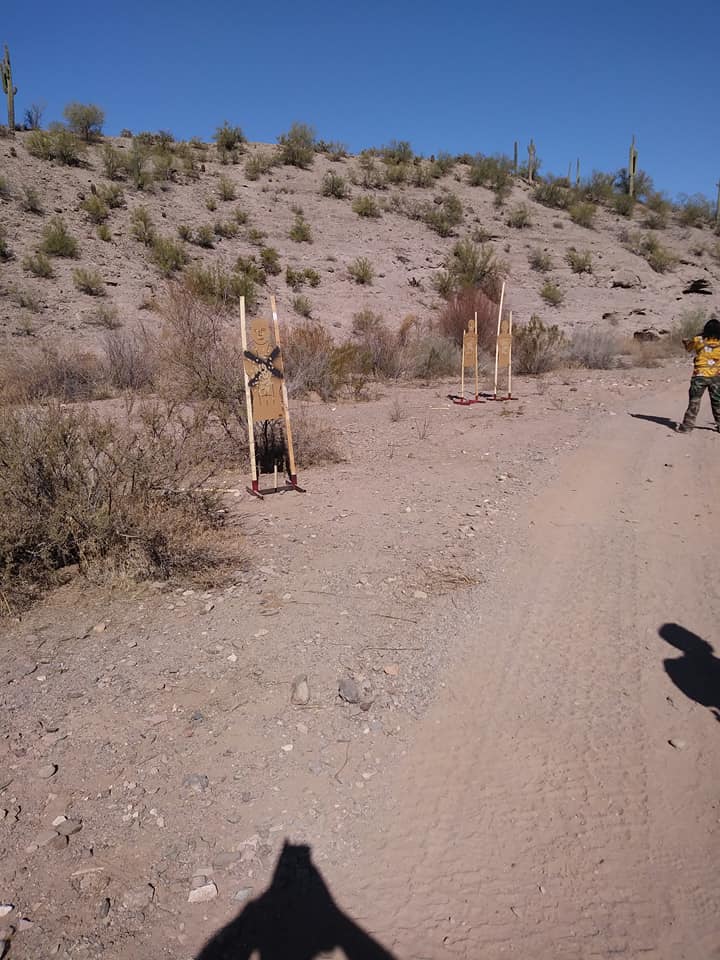
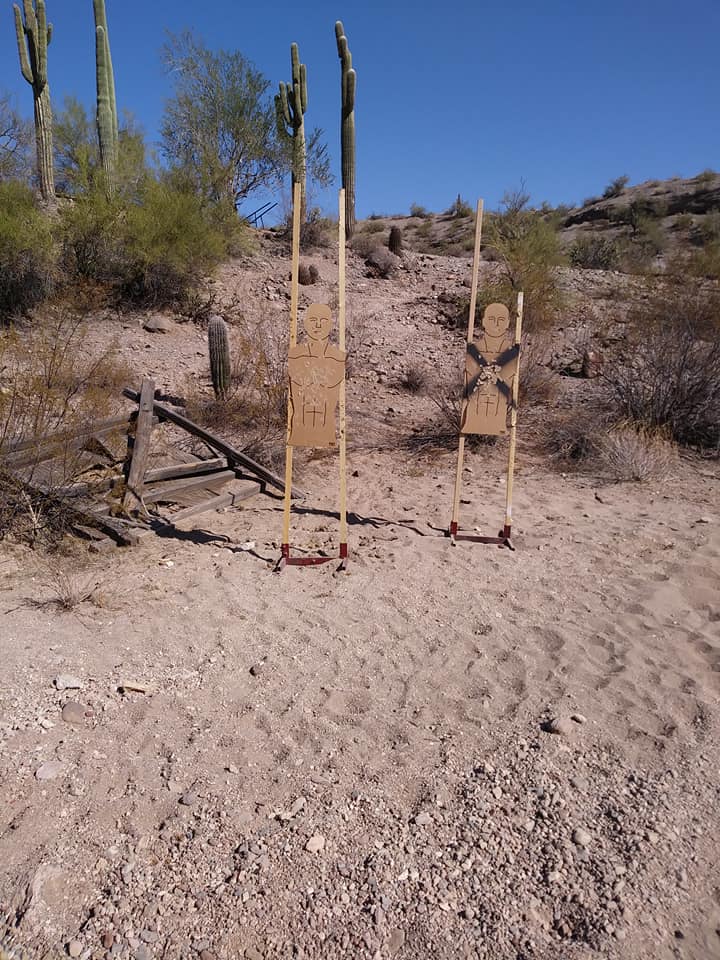
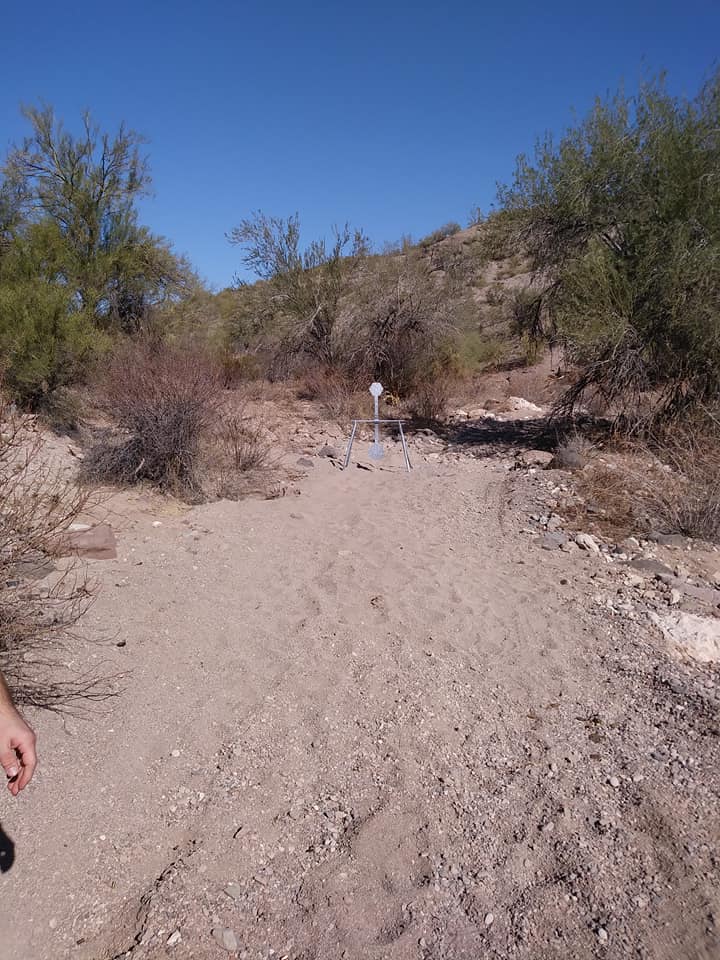
My strategy was to take the easy hits on paper and do the best that I could with the spinner. While I twice had it to the point that one more hit would push it over, I missed that last needed shot, expended all my pistol ammo and timed out.
Stage 5, our last stage, was a rifle-only fire-and-movement stage, with relatively close targets at the start and ending with some longer-range.
Start in the hula hoop, move to the first tank trap, engage two targets.
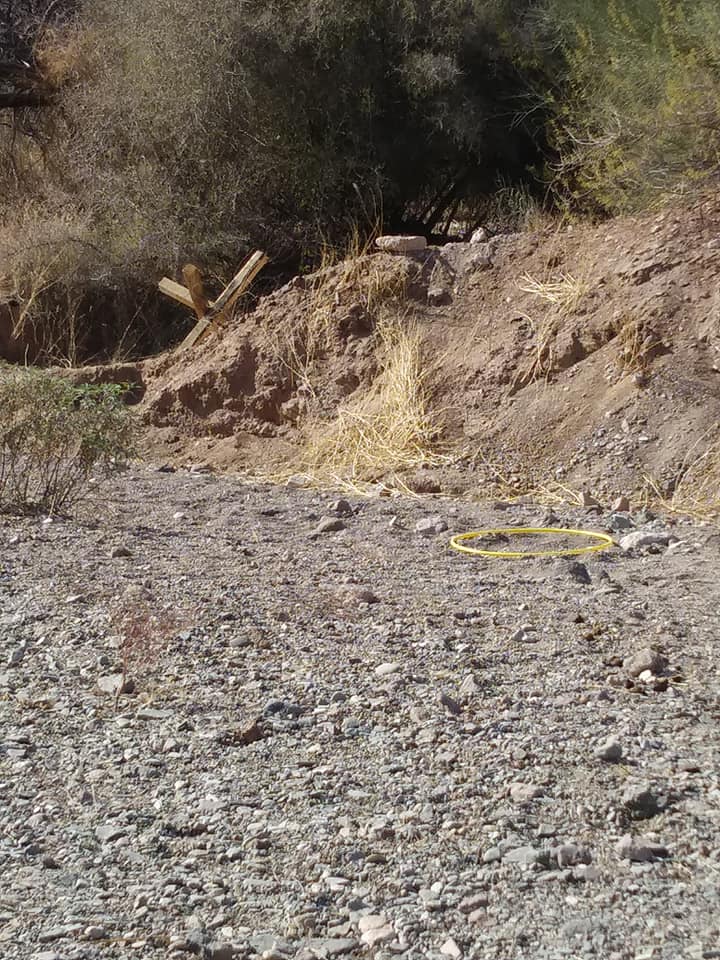
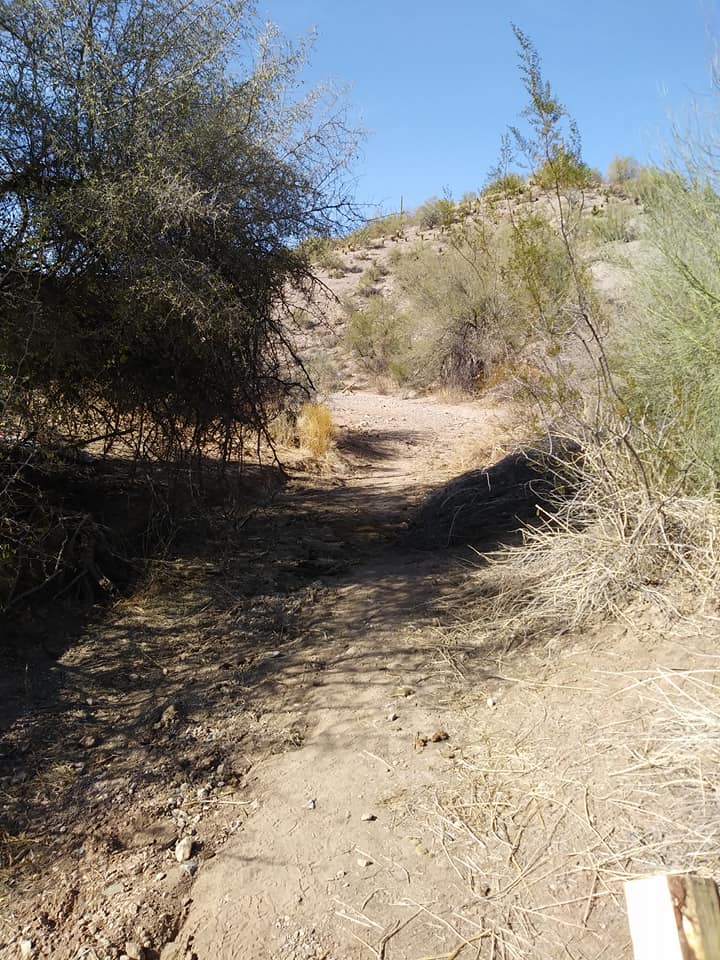
Run to another tank trap, shoot the same two targets again. Run to those targets, turn and shoot two more.
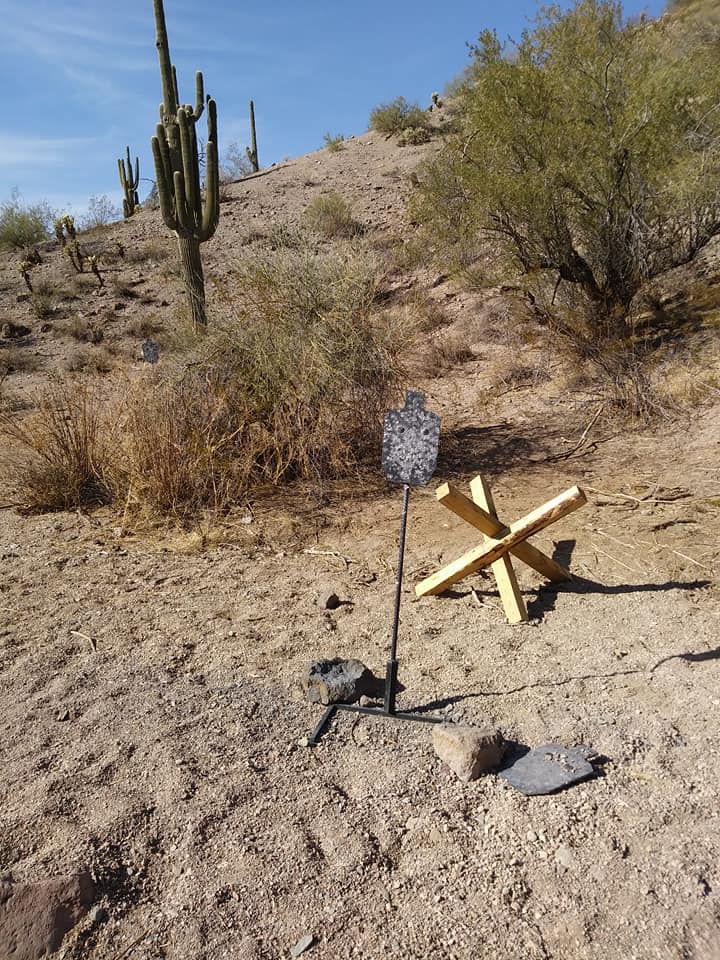

Run up a steep hill to another tank trap:
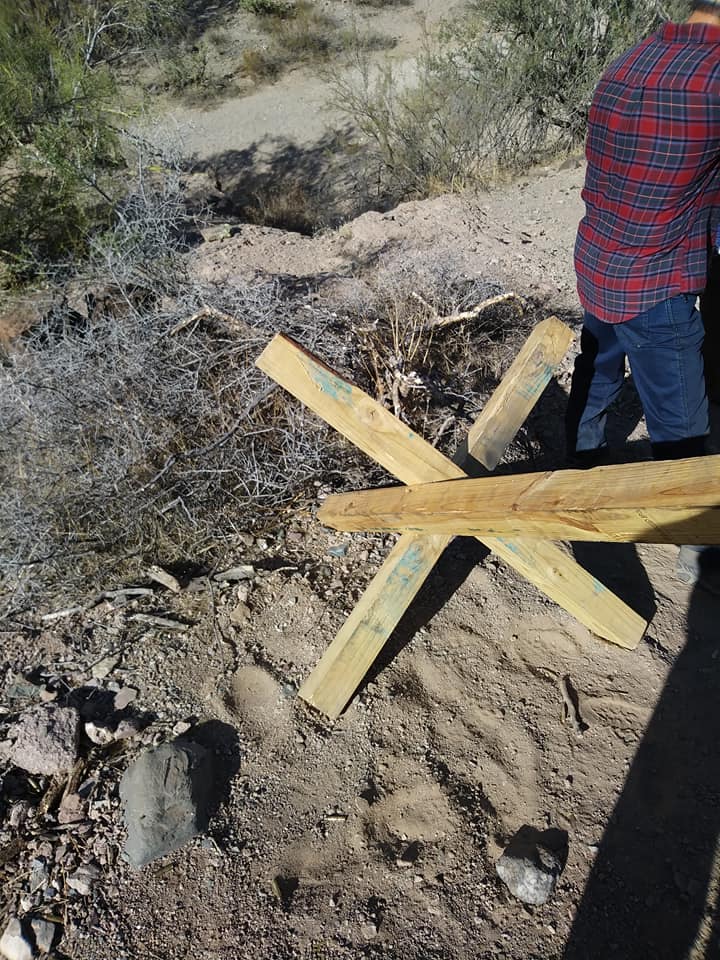
And engage two of the three distant steel targets:

Move to a sandbag position and engage the farthest target.
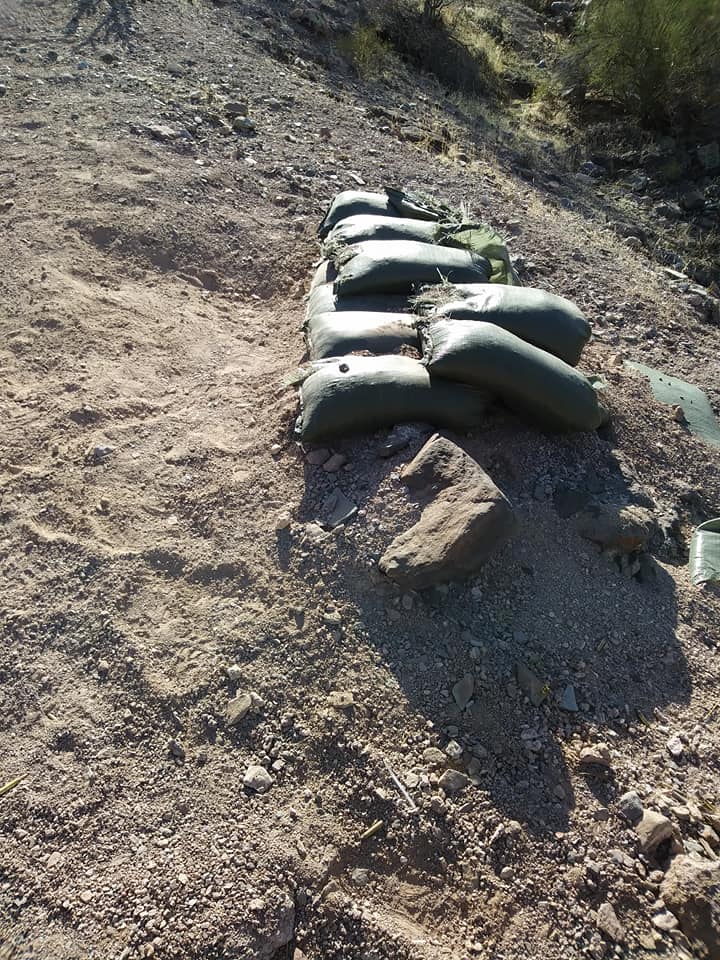
I was proud of myself on this stage. I wasn’t blazing through it by any means, but I kept it steady and made good hits. For lack of a better term, I completed this stage at my ability level, rather than fouling something up and knowing I could have done better.
Our last stage done, we helped the crew tear everything down, sorted out our gear, and waited around for the rest of the squads to finish. I thought it was cool that several competitors, having leftover loose ammo that they couldn’t fly home with, gave it to the competitors from California.
The prize table was given out at random, they call a name and the person called comes up to choose a prize. They went with this over assigning prizes by score for two reasons: having no prizes on the line gives less incentive for the sort of cut-throat competition that often takes the fun out of events or for doing something stupid to cut a second off of your time, and it increases the odds that the gear prizes will go to someone who will actually make use of them. (The winners usually already have good gear, while the guy in last place may legitimately need to upgrade his gun belt.)
Mine was not the first name called, but one of the first five or so, and I got an awesome plate carrier from ESSTAC.
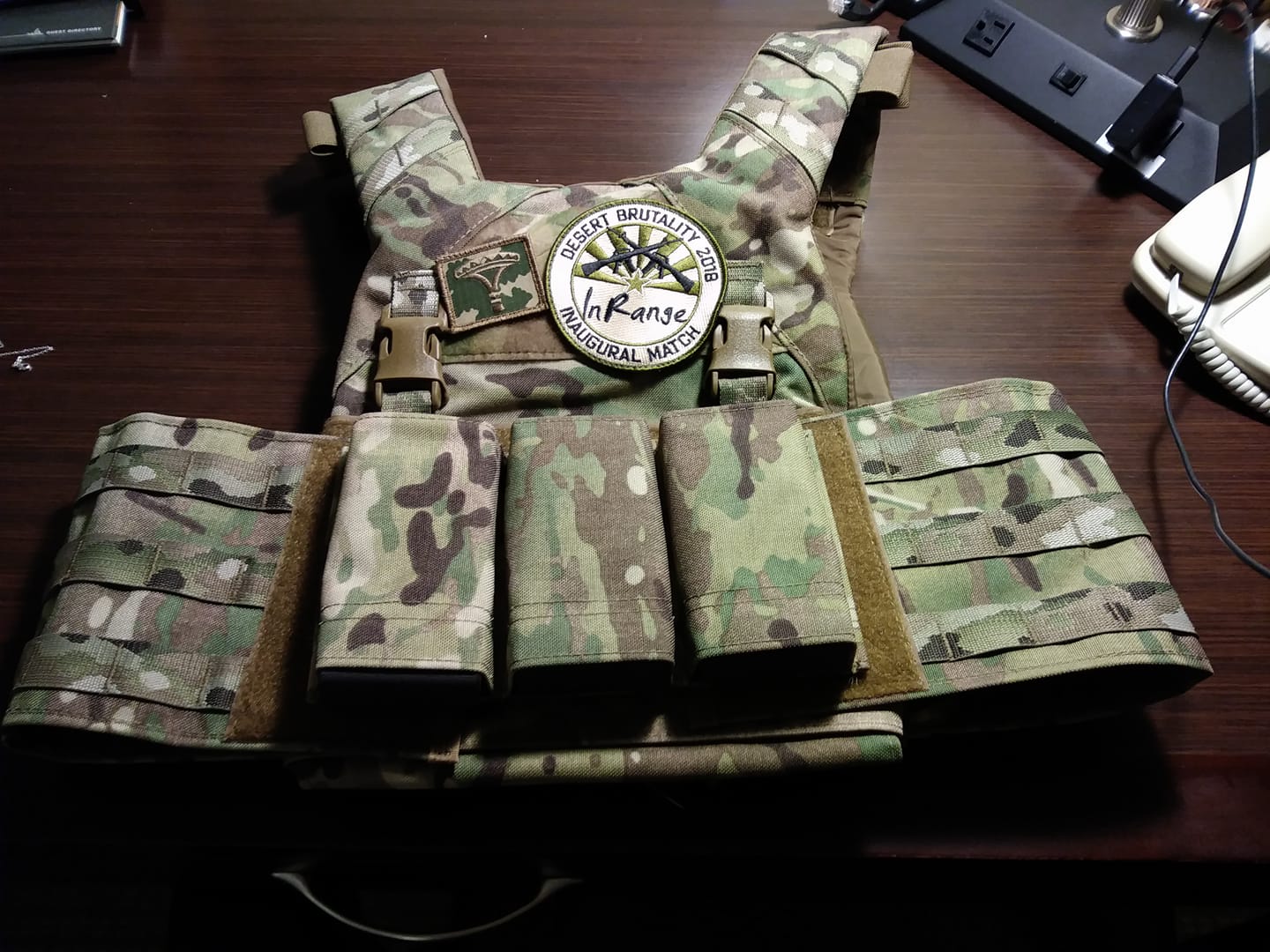
This was an awesome time and gave me a lot to think about in terms of how I train. Plans are in the works to run it again in 2019, and I can’t wait to see what they come up with for their second year.
Note: Our squad’s photographer was a cool guy named Nero Manalo (n_zeke on Instagram). All the good pictures in this post are his, all the crappy ones are mine.

